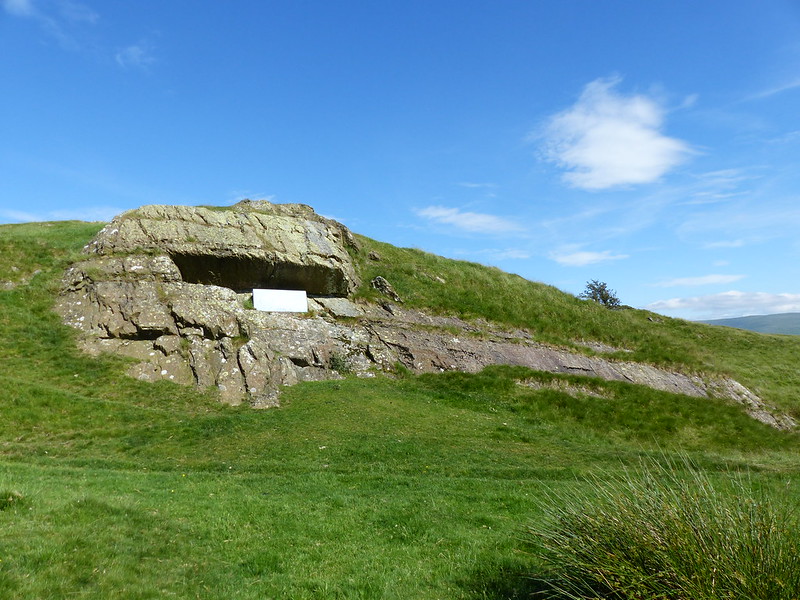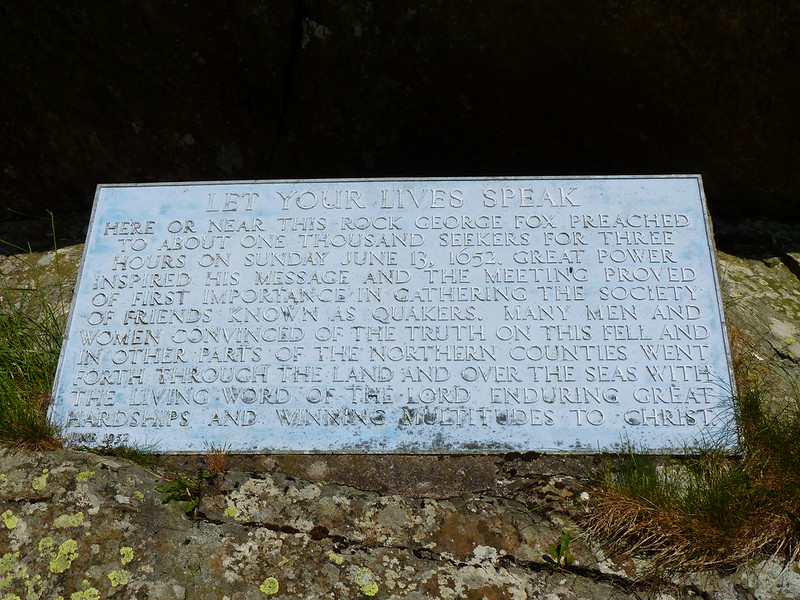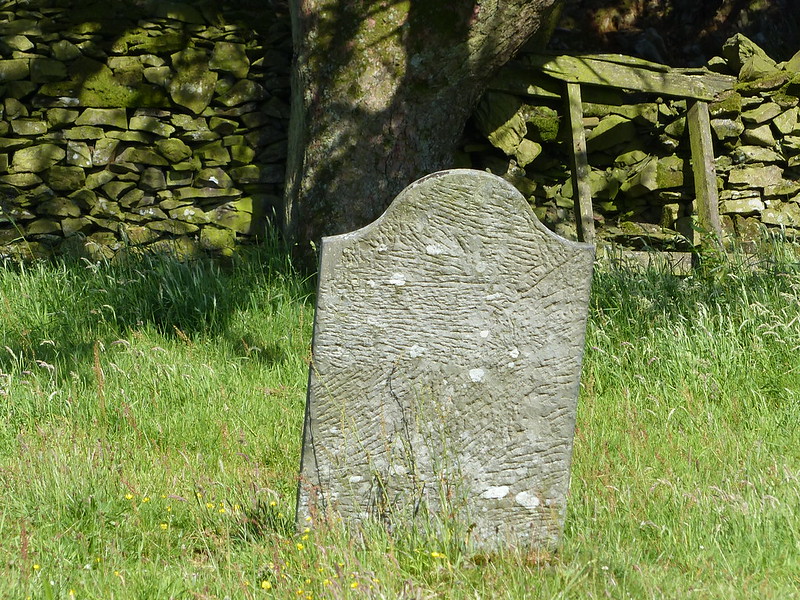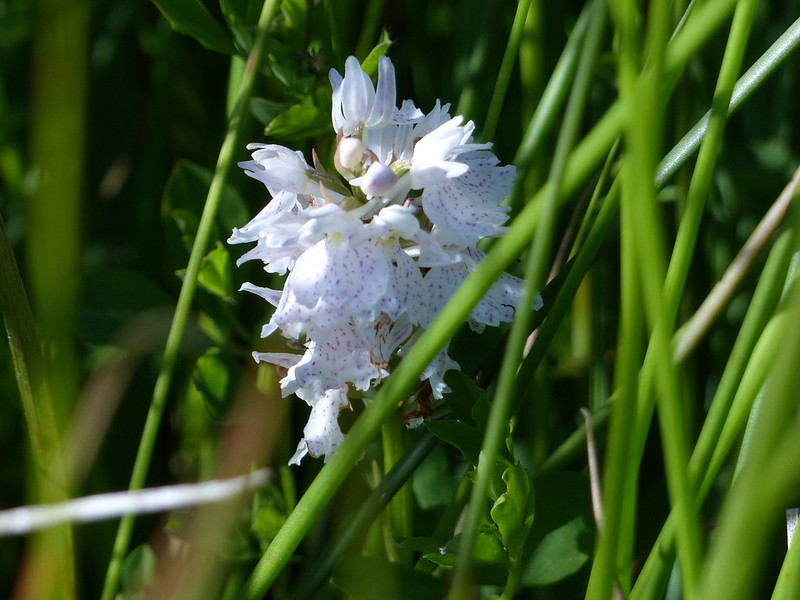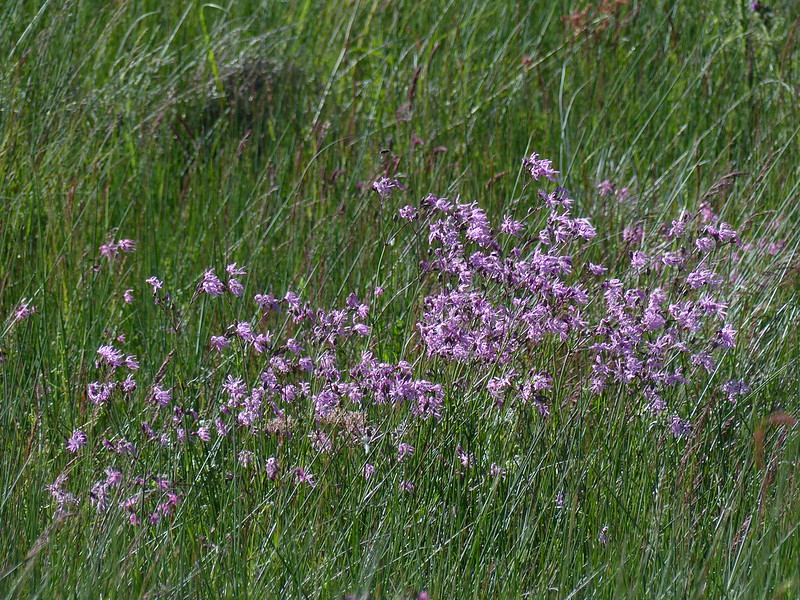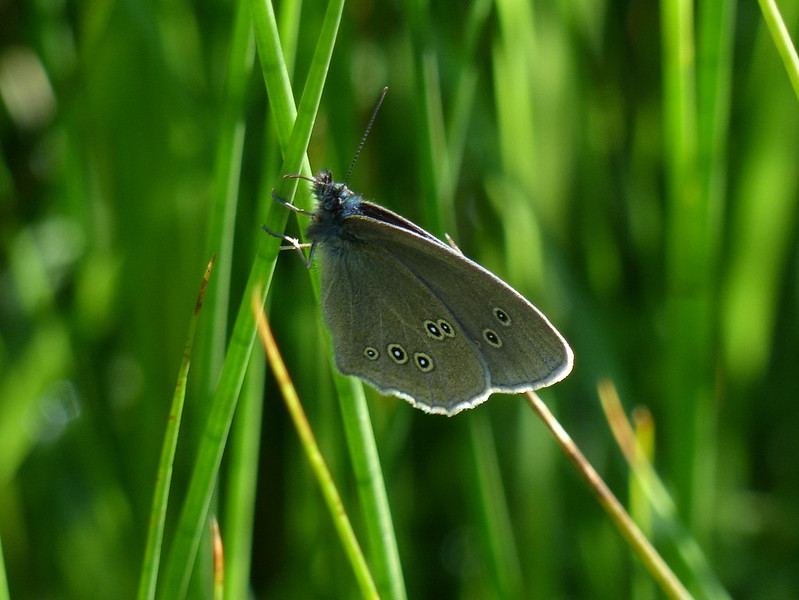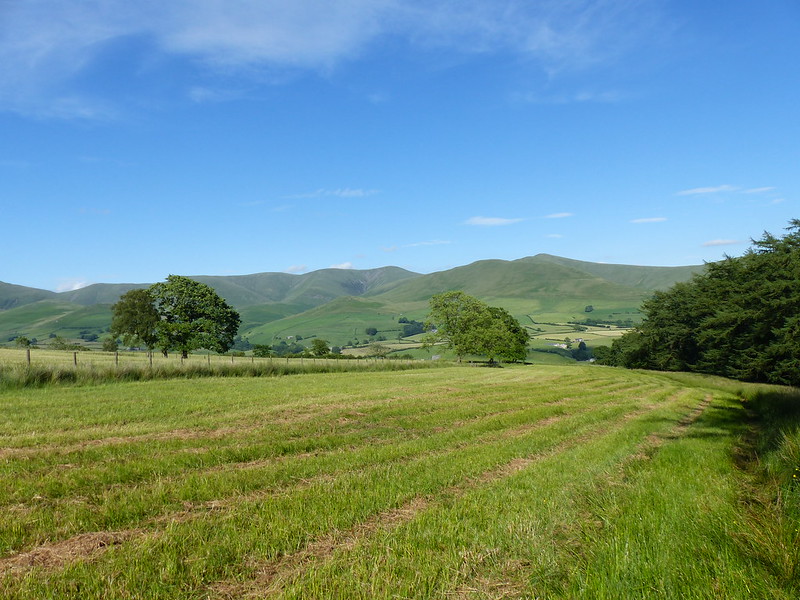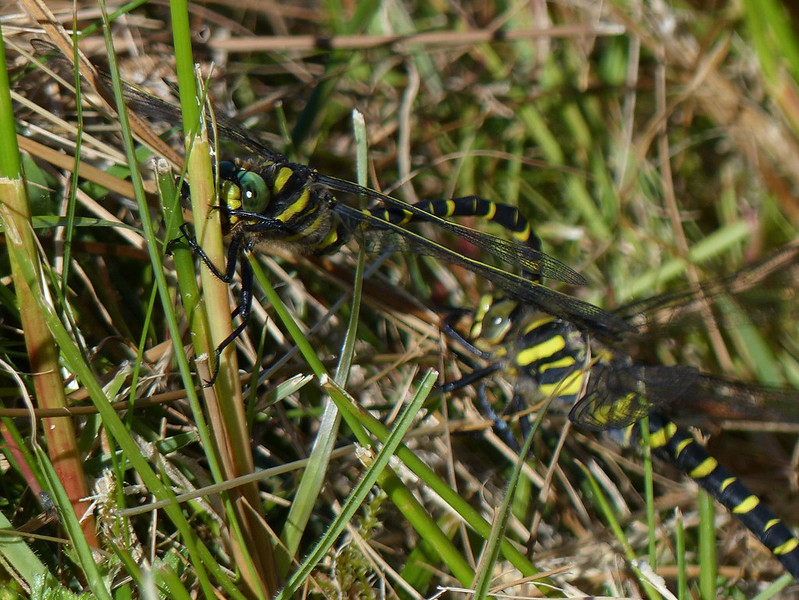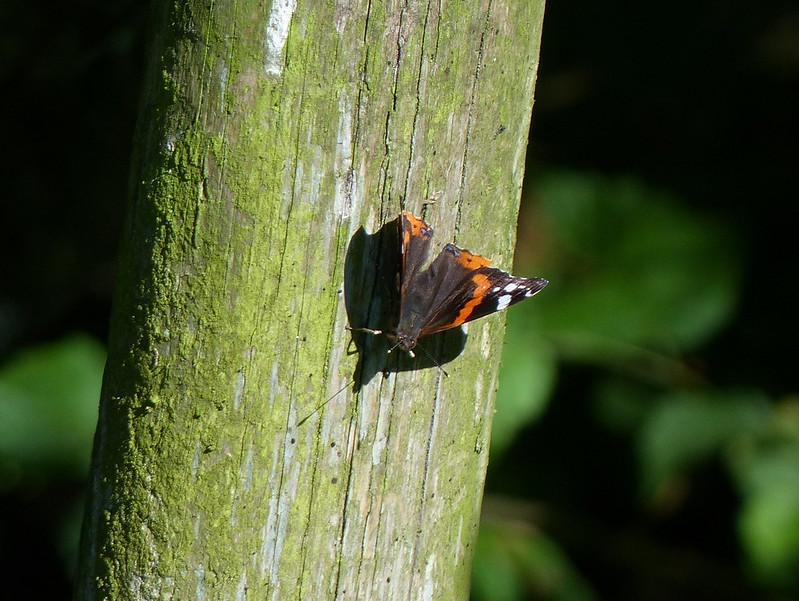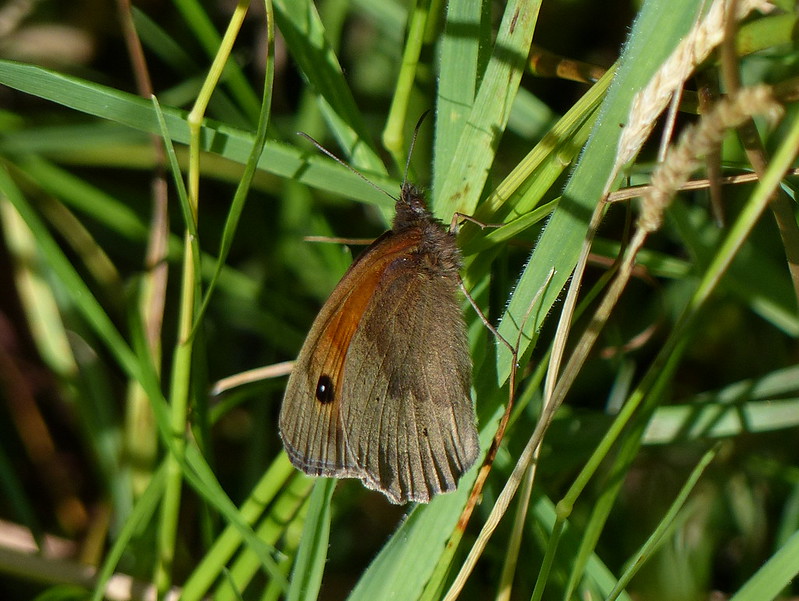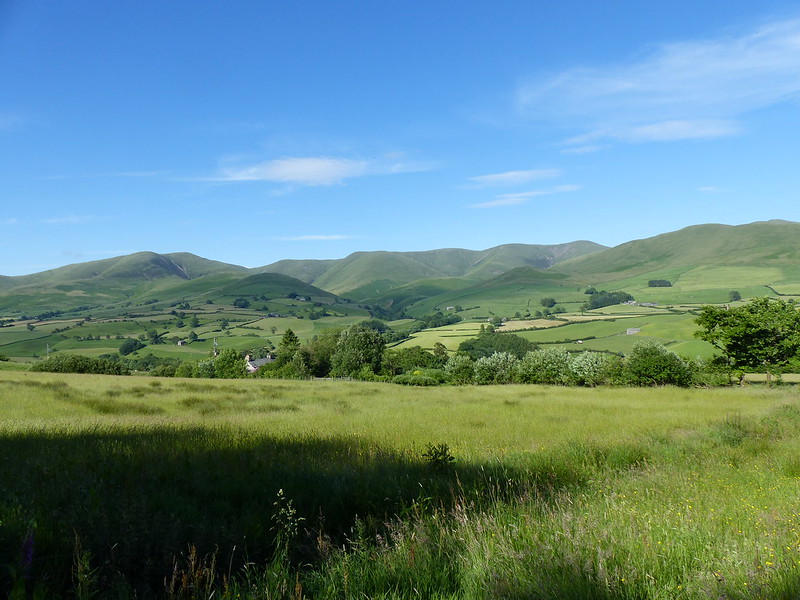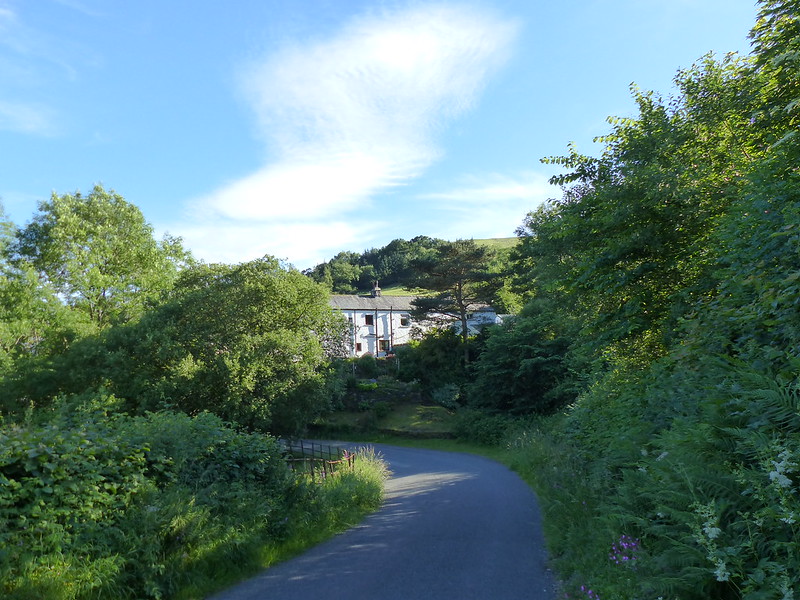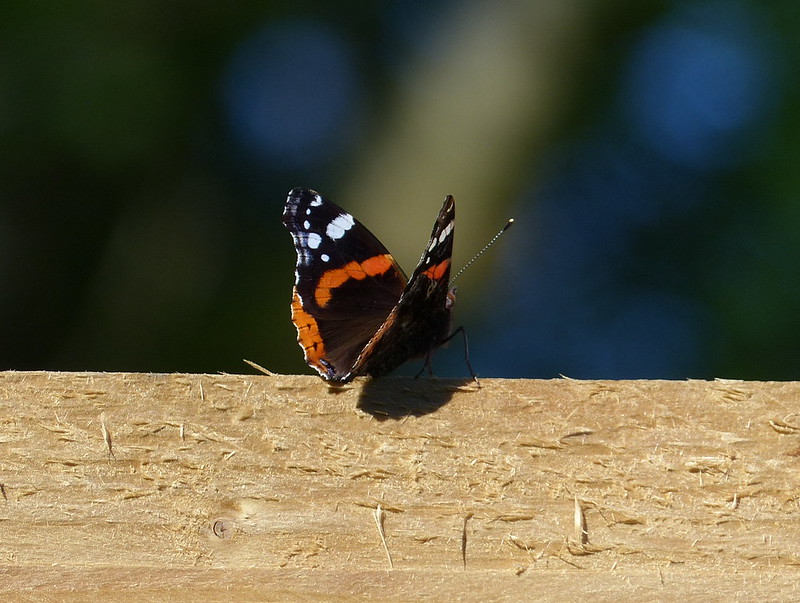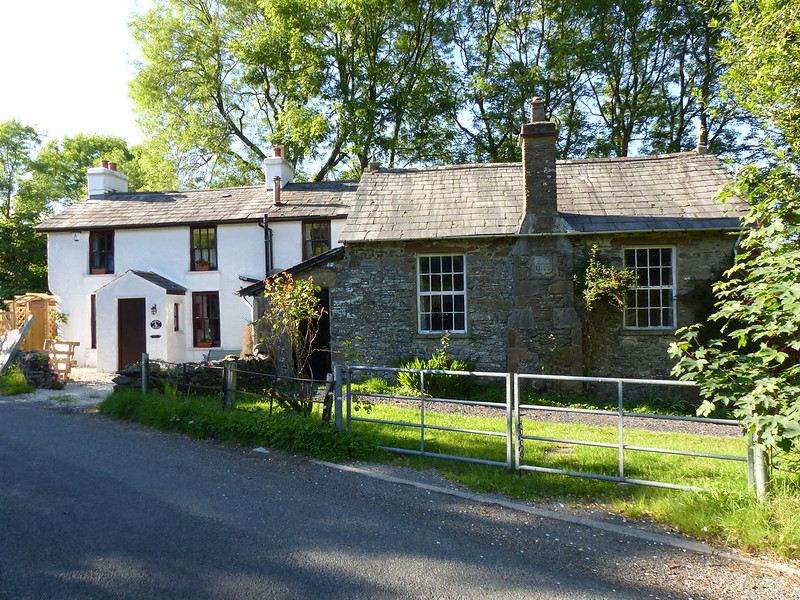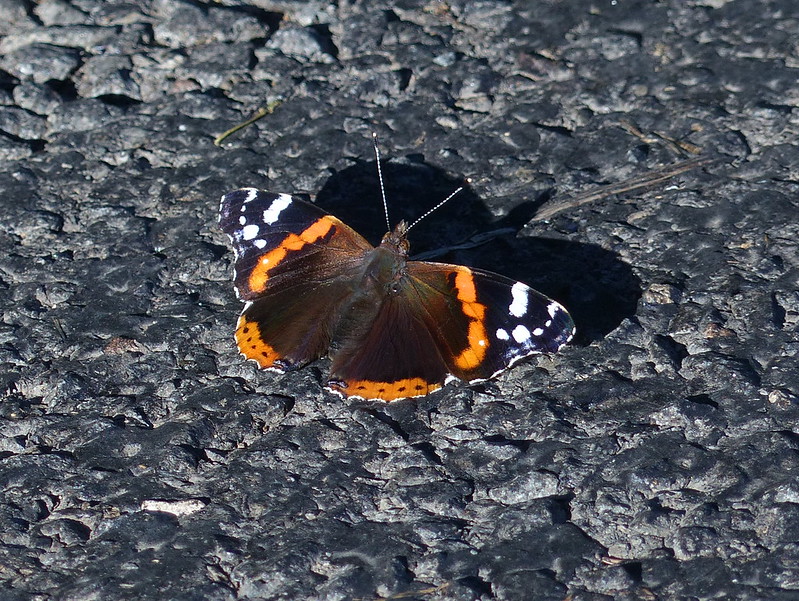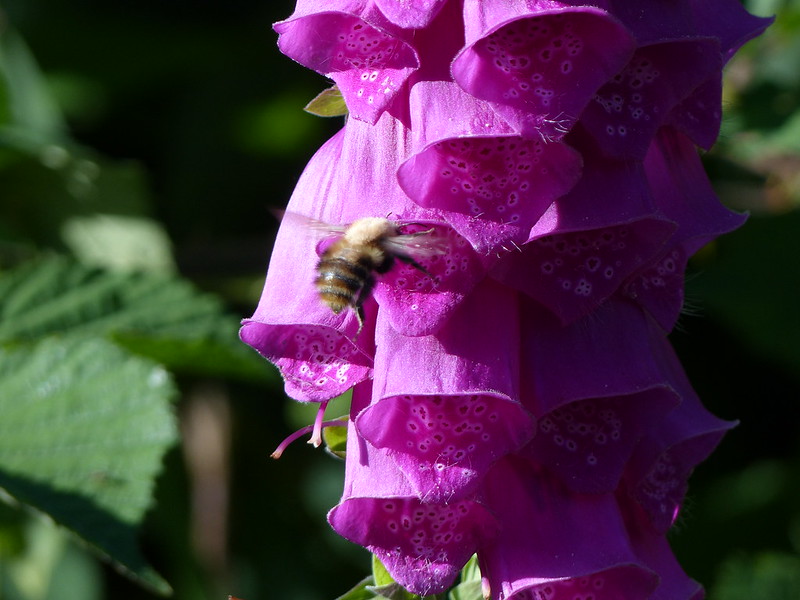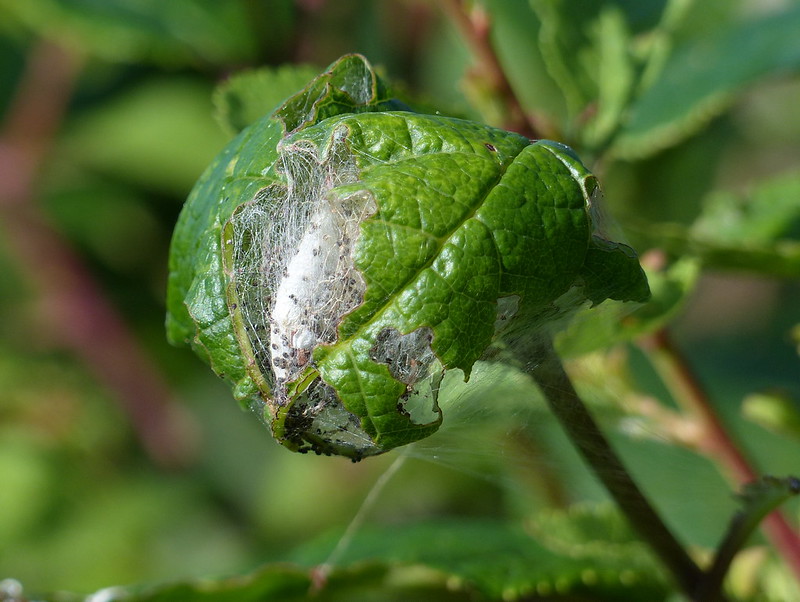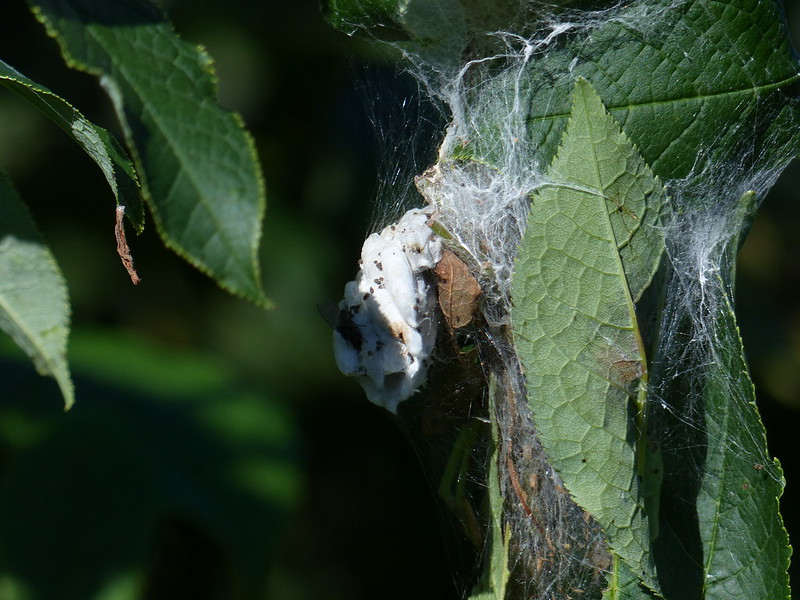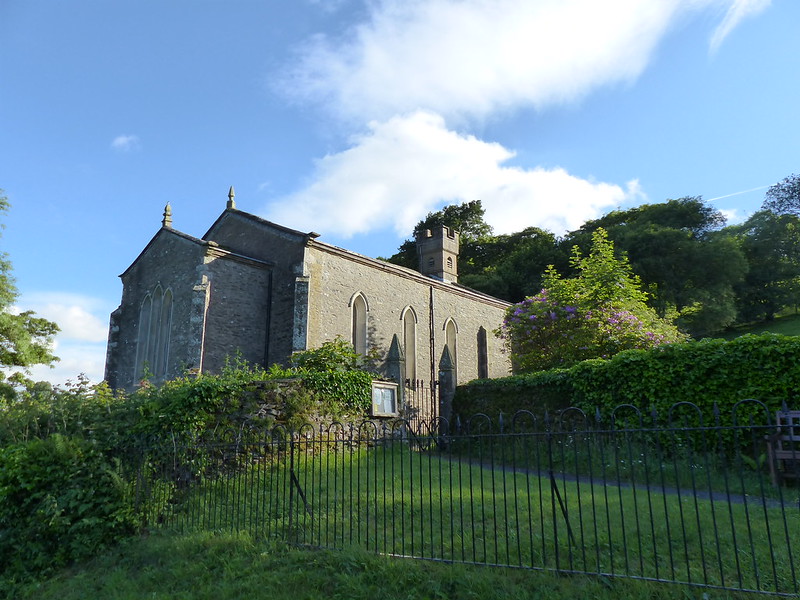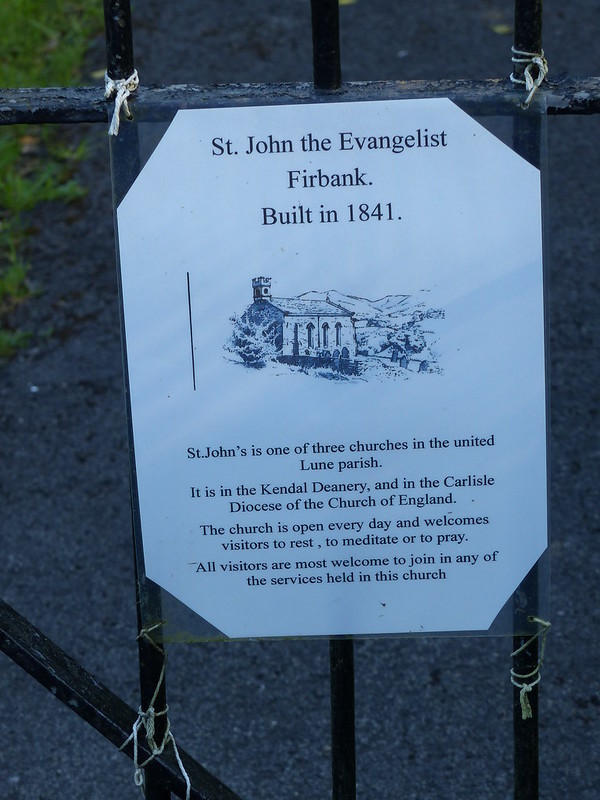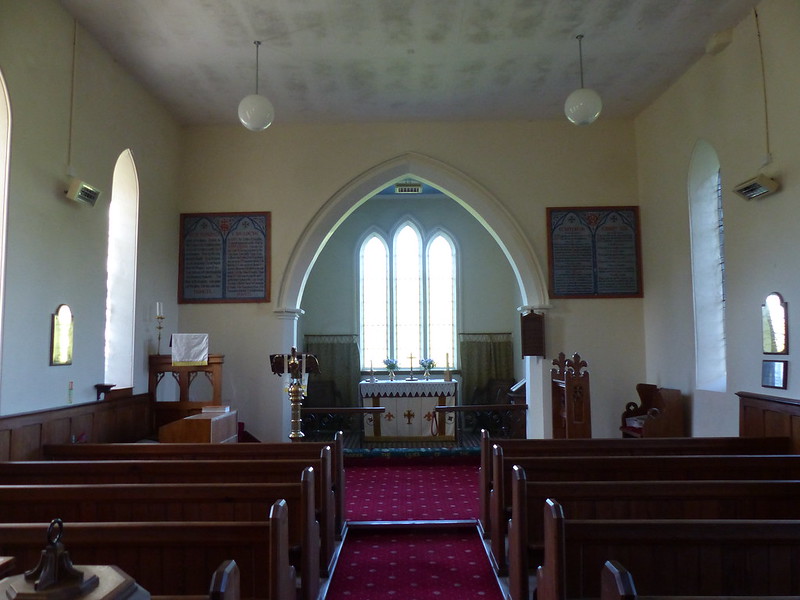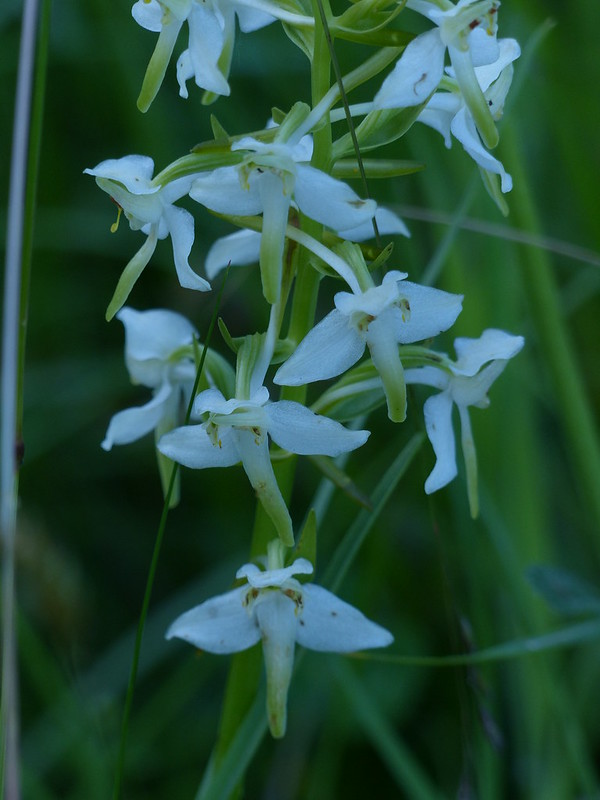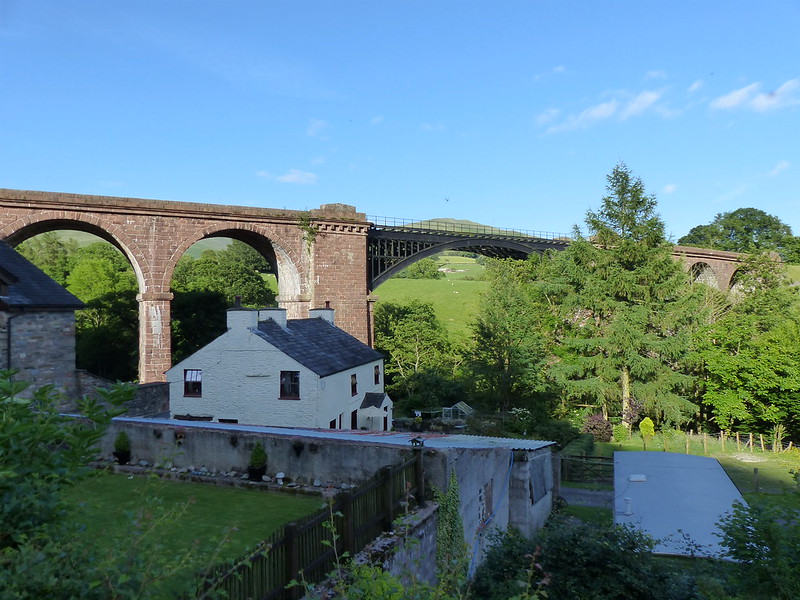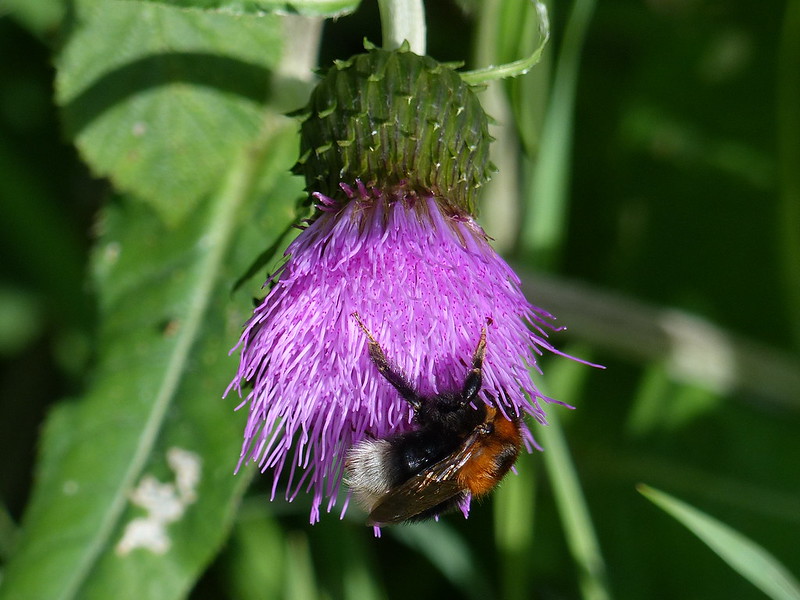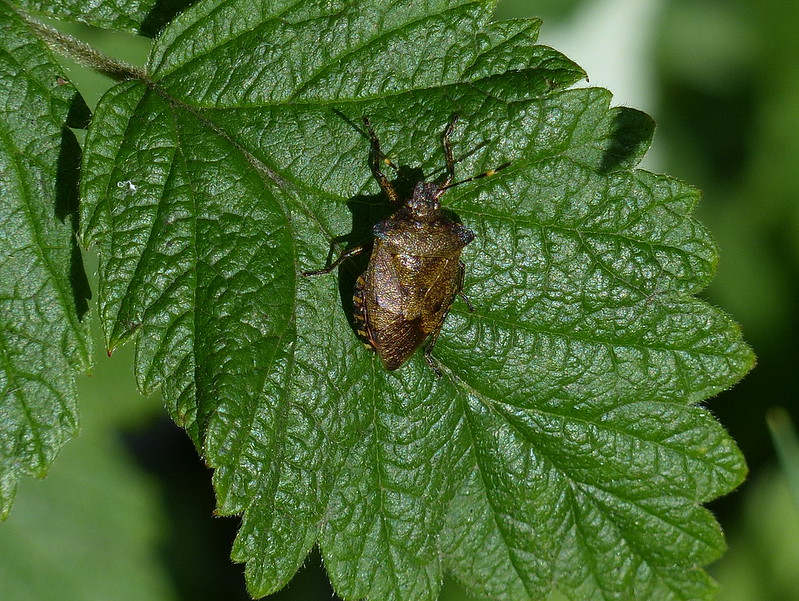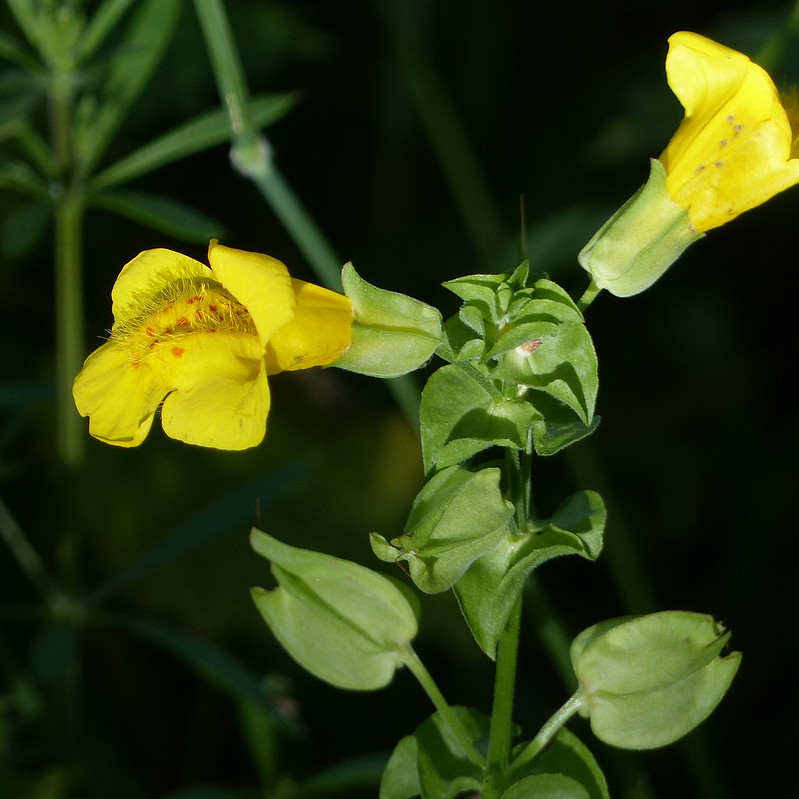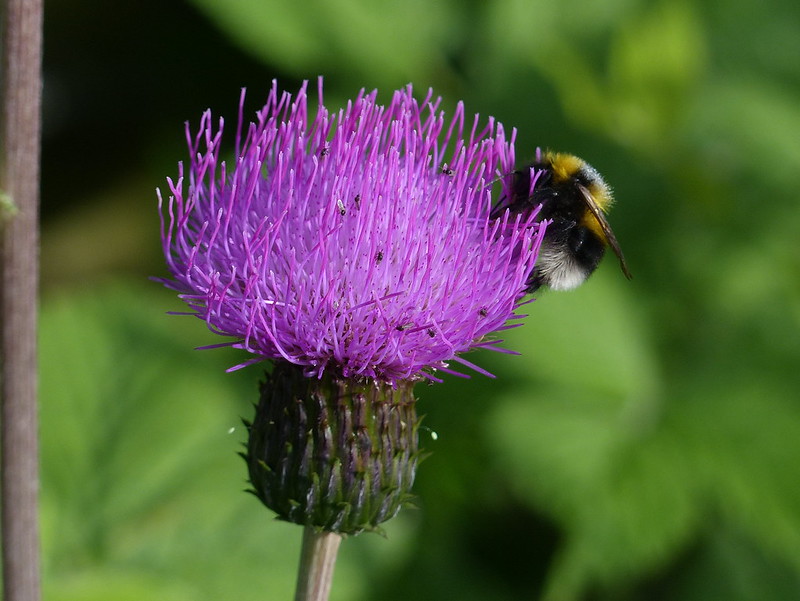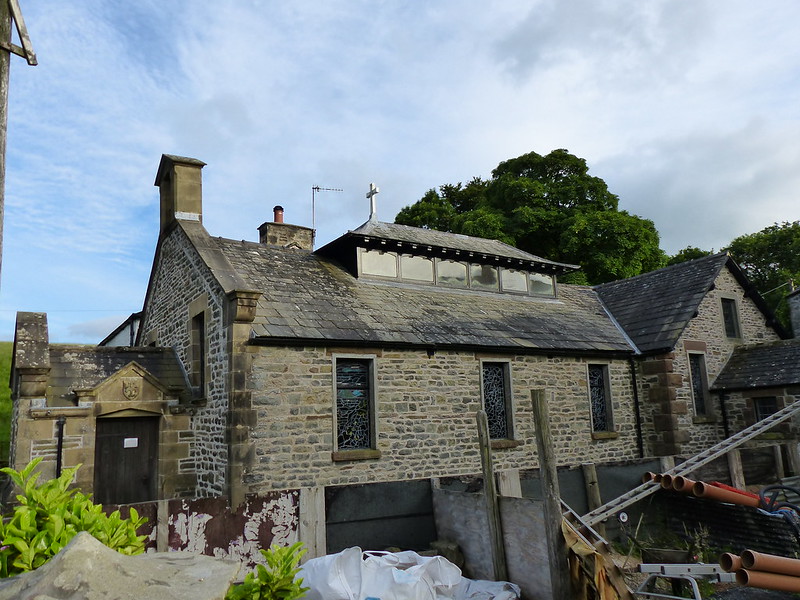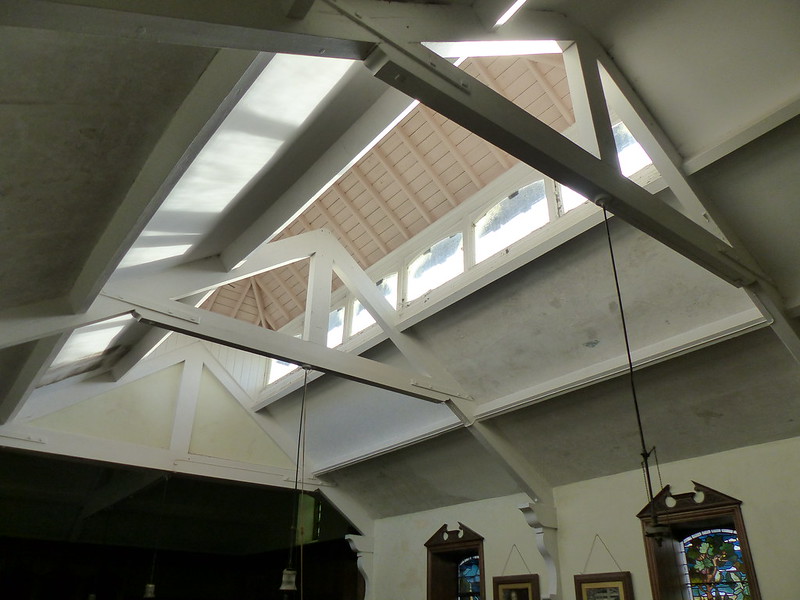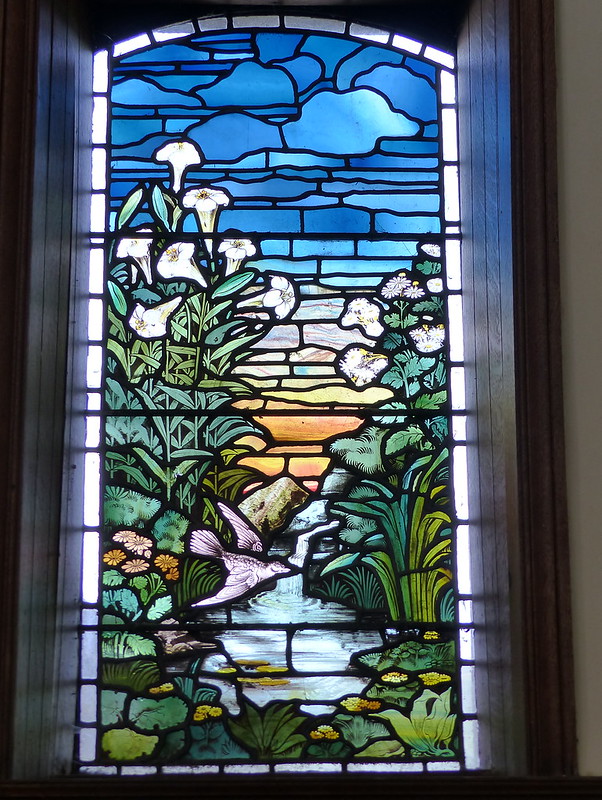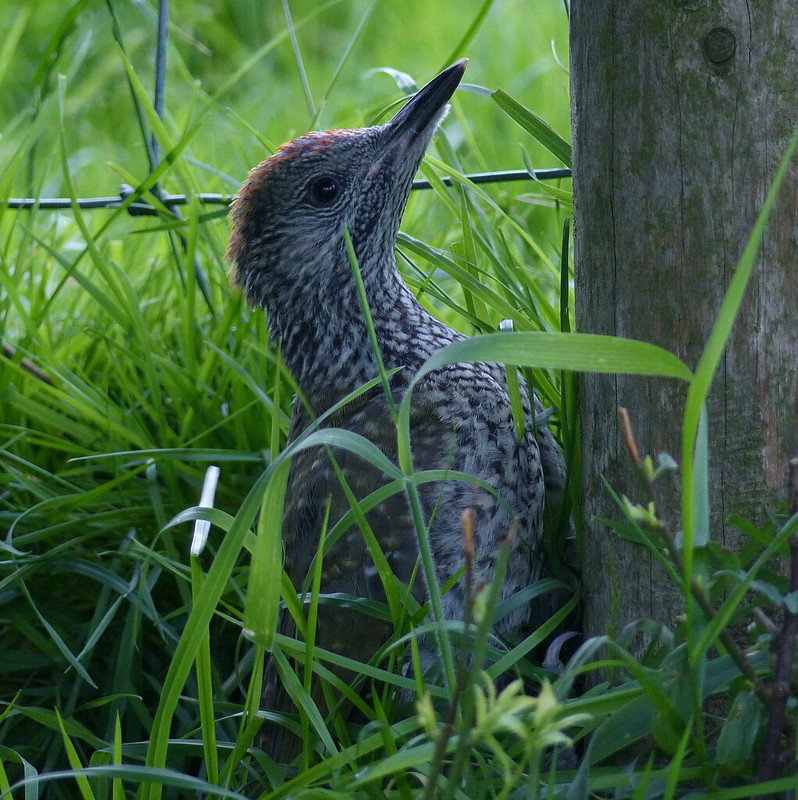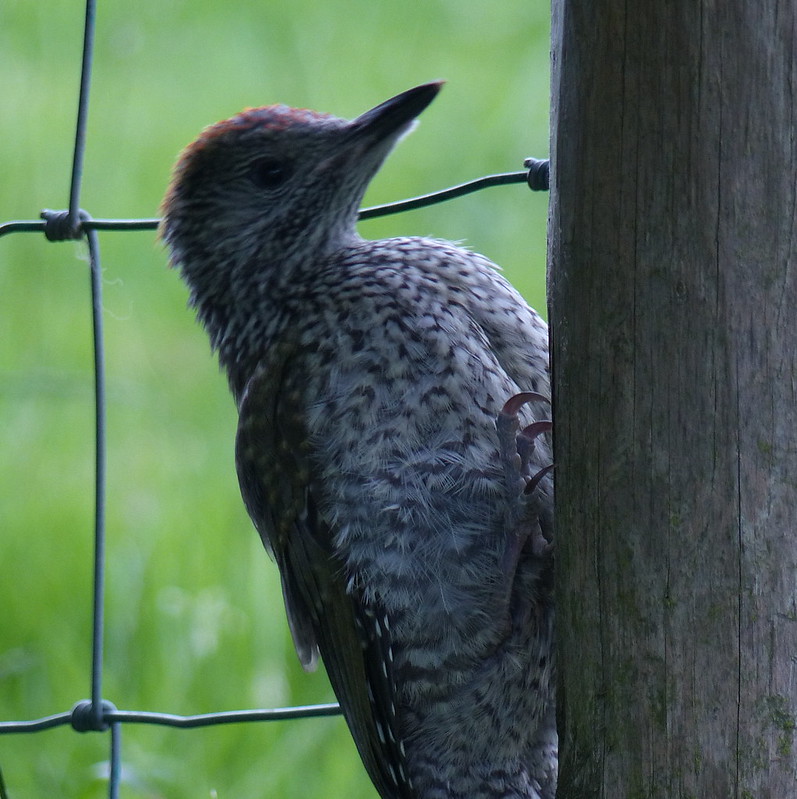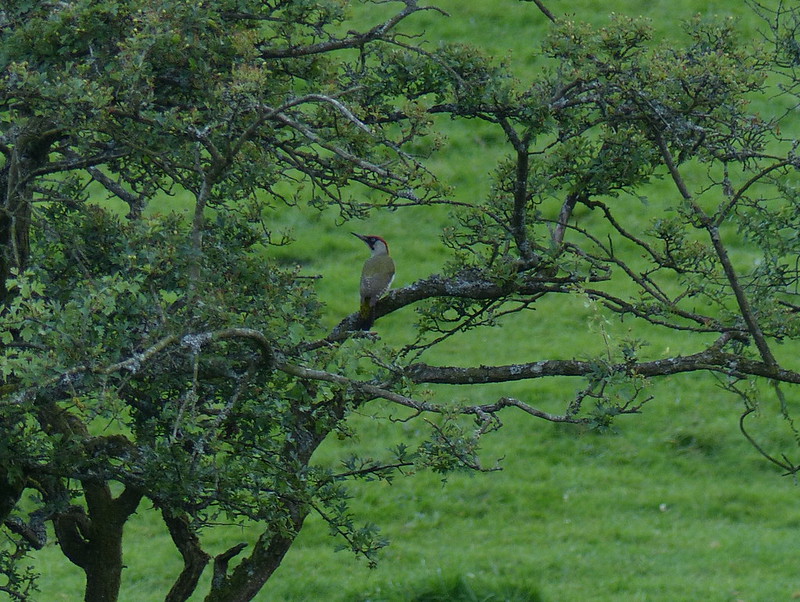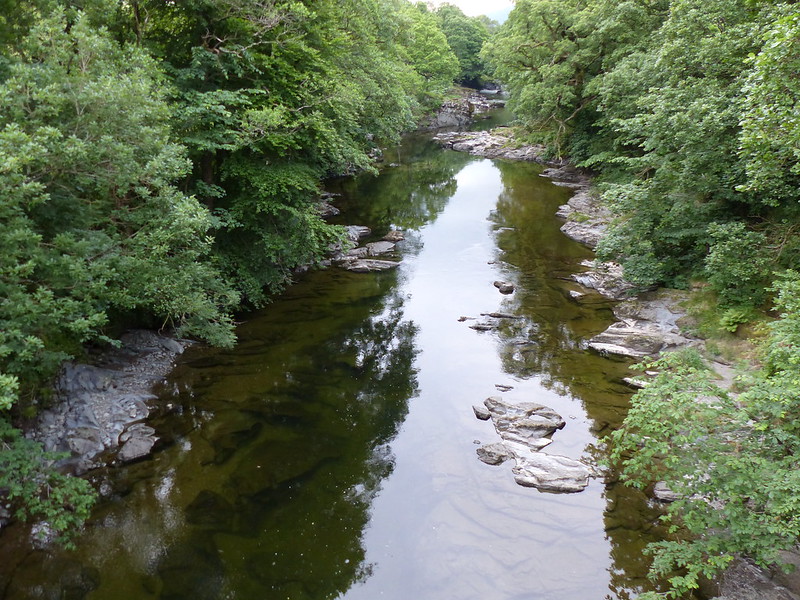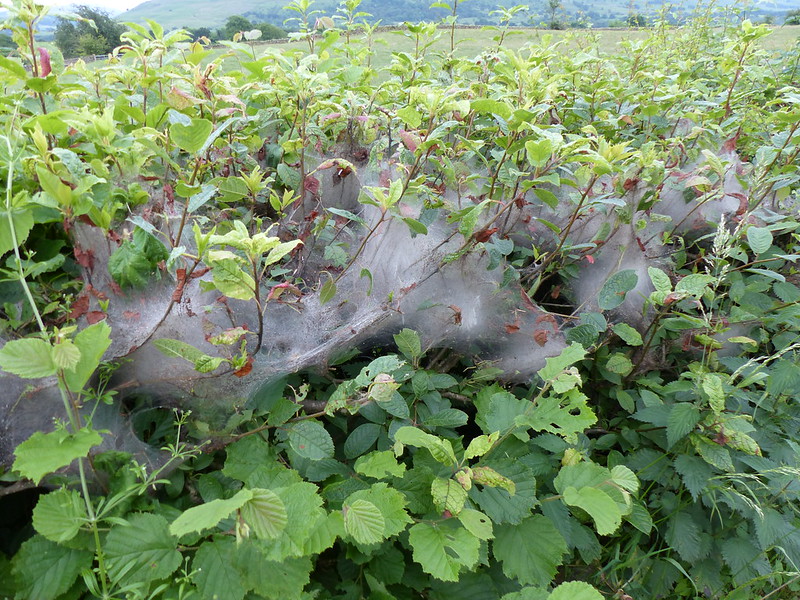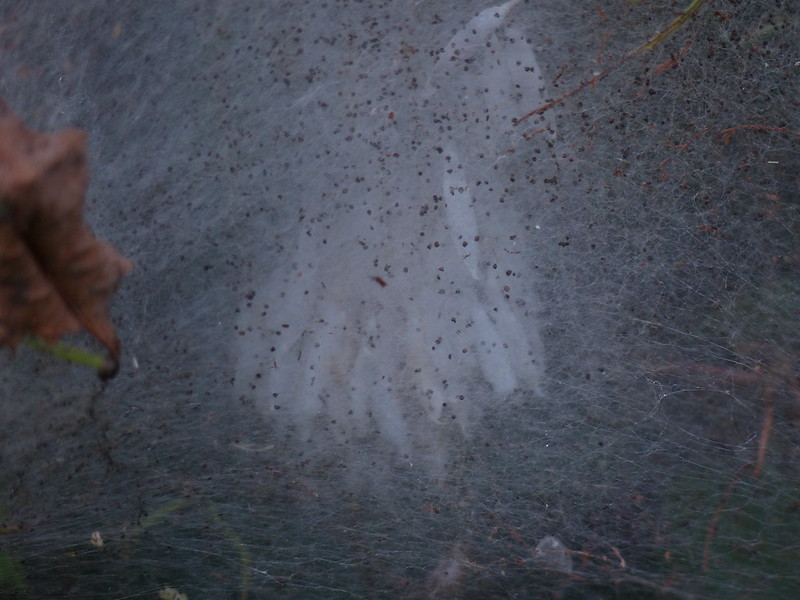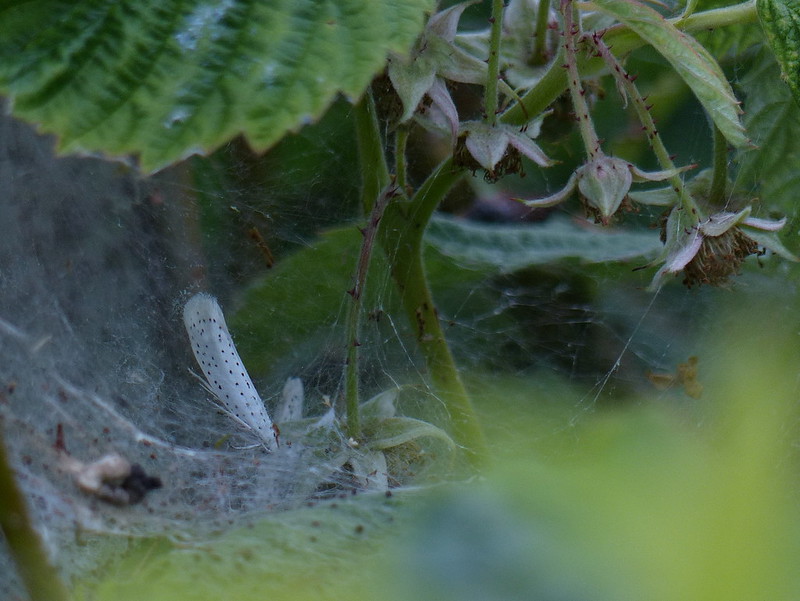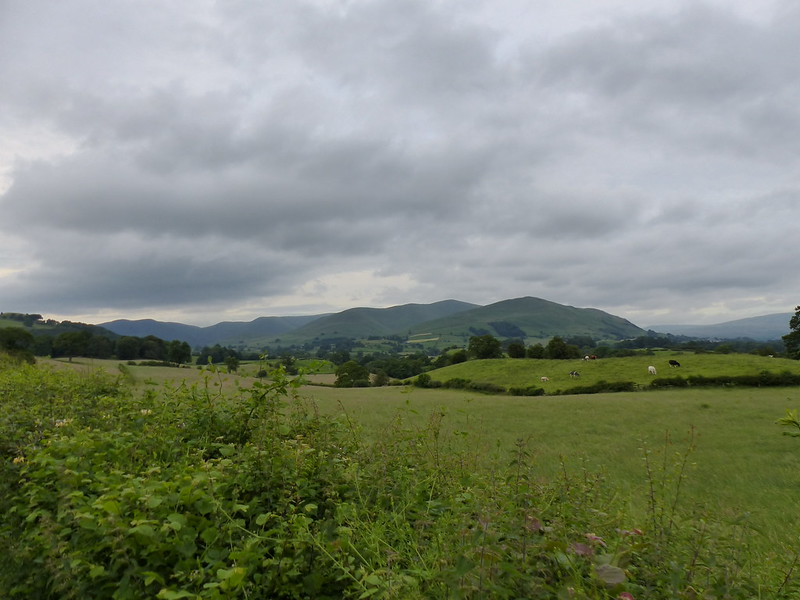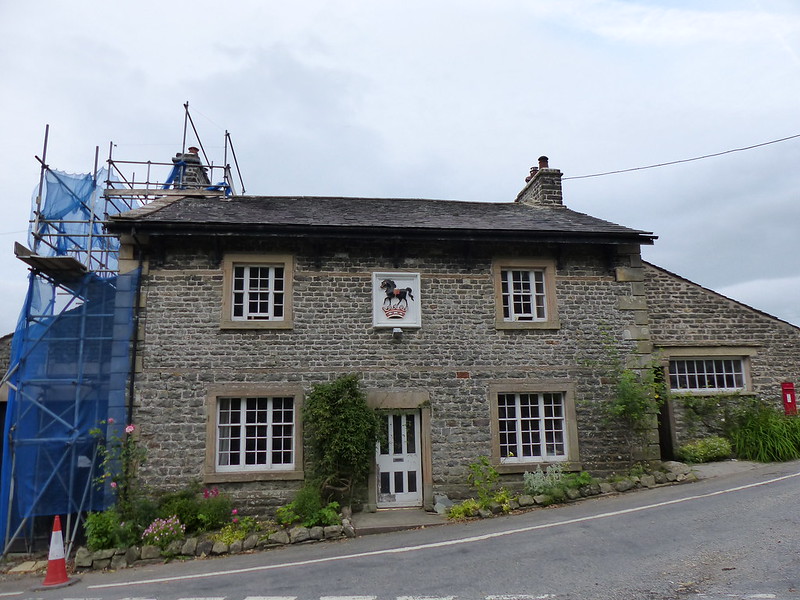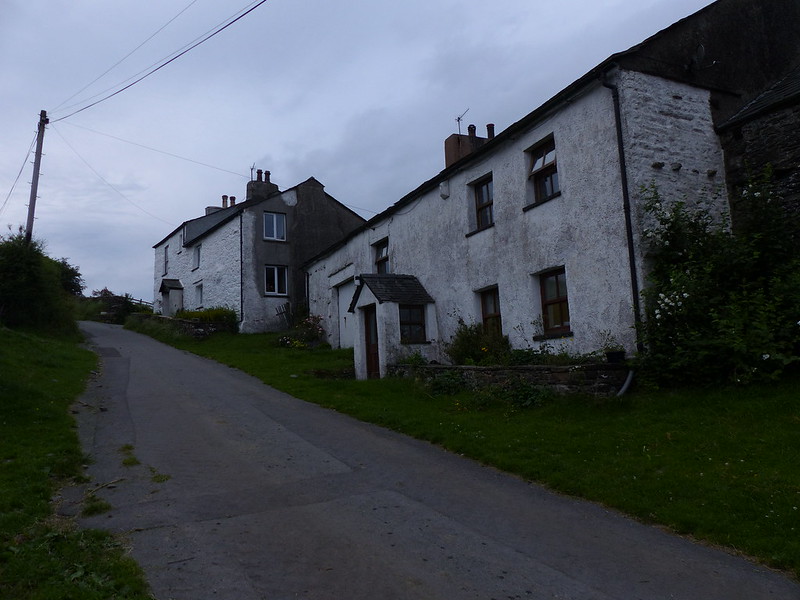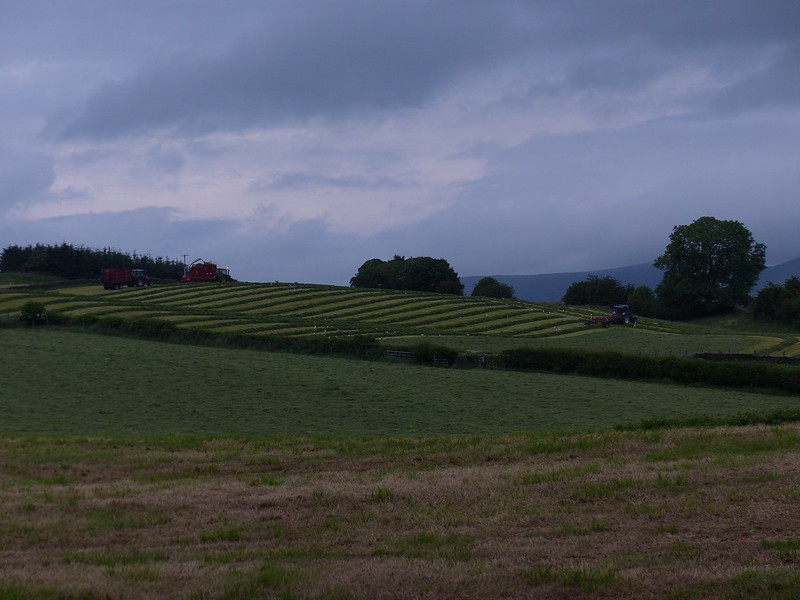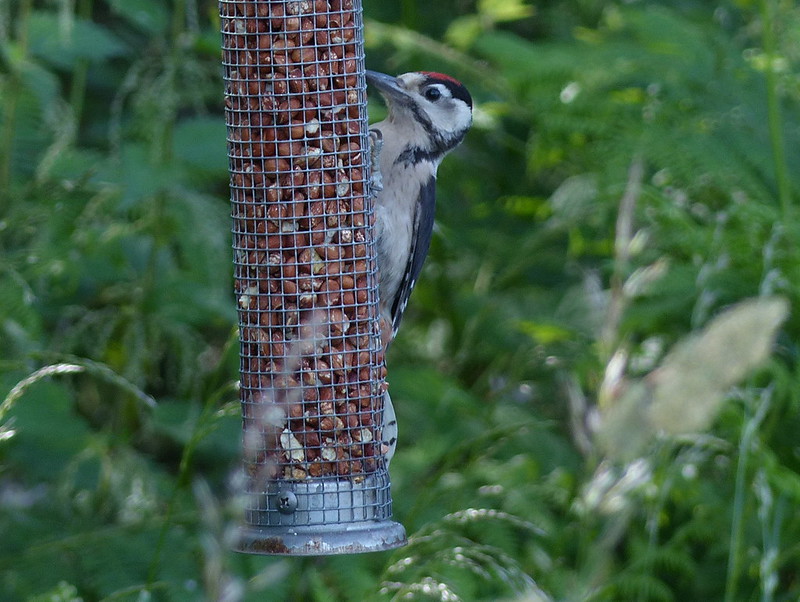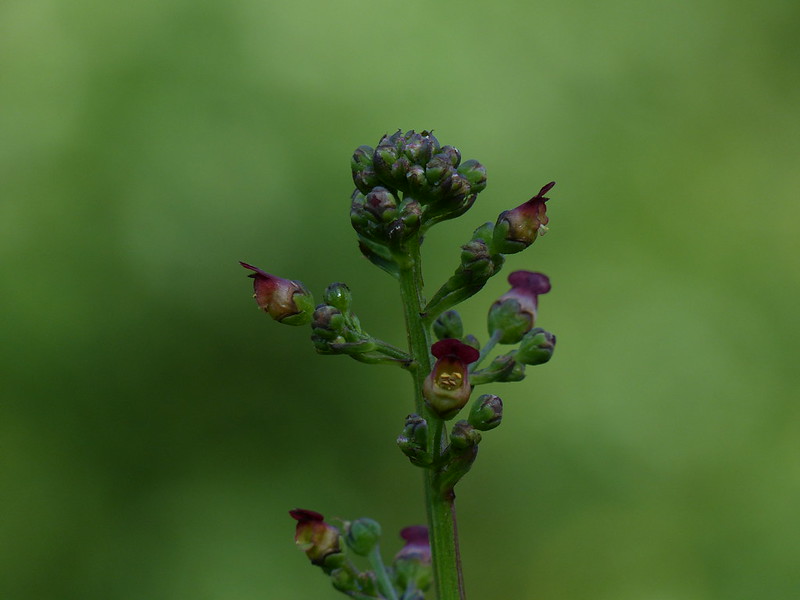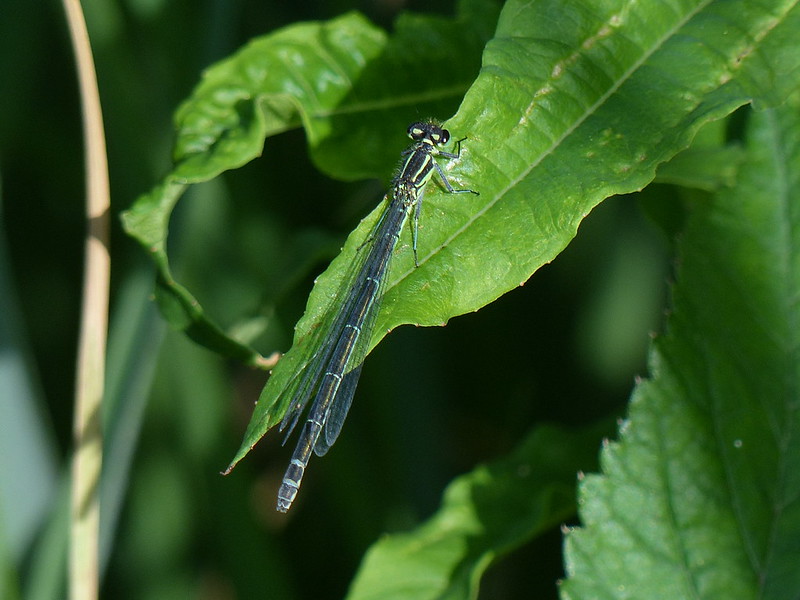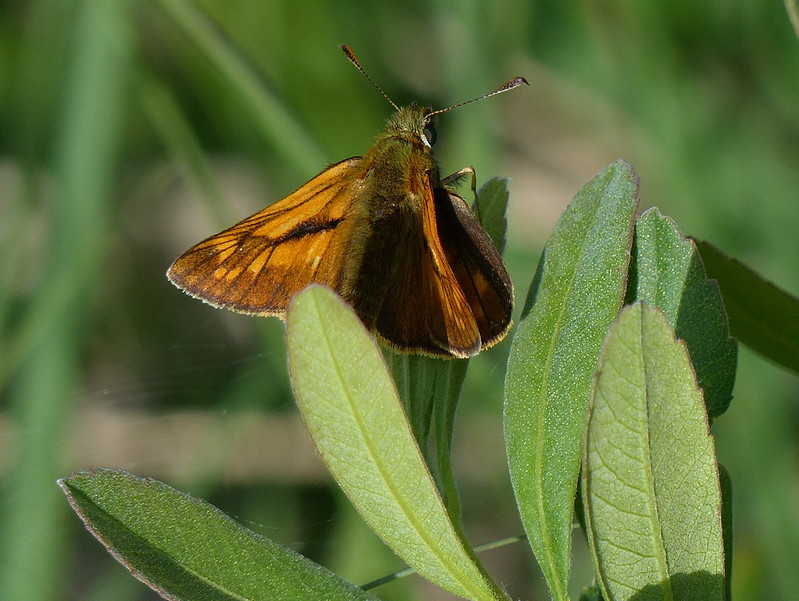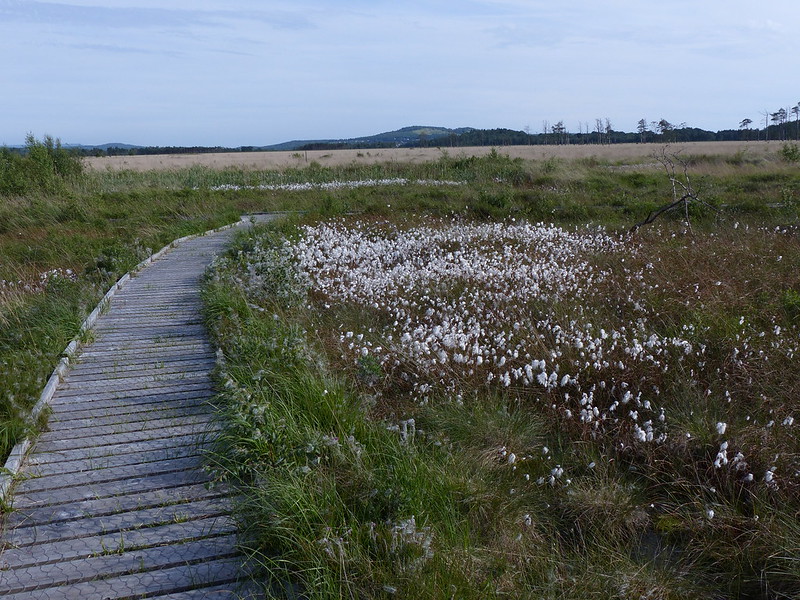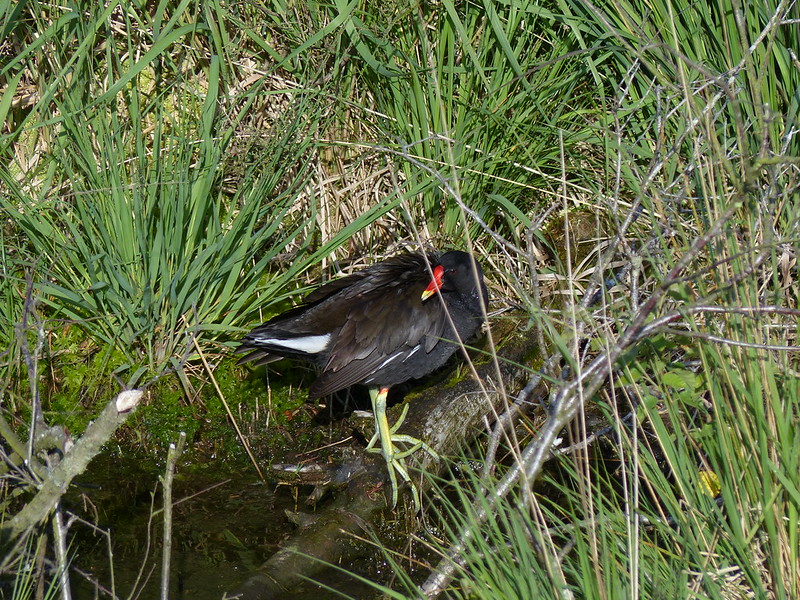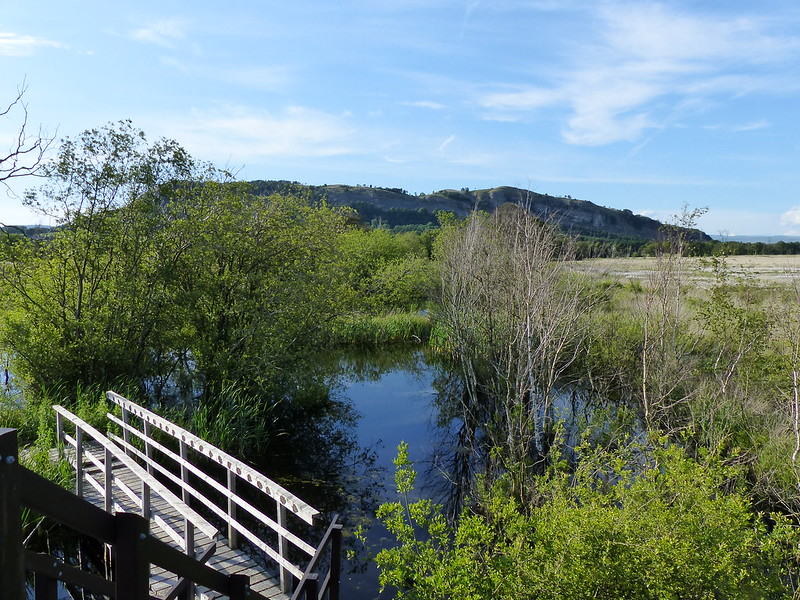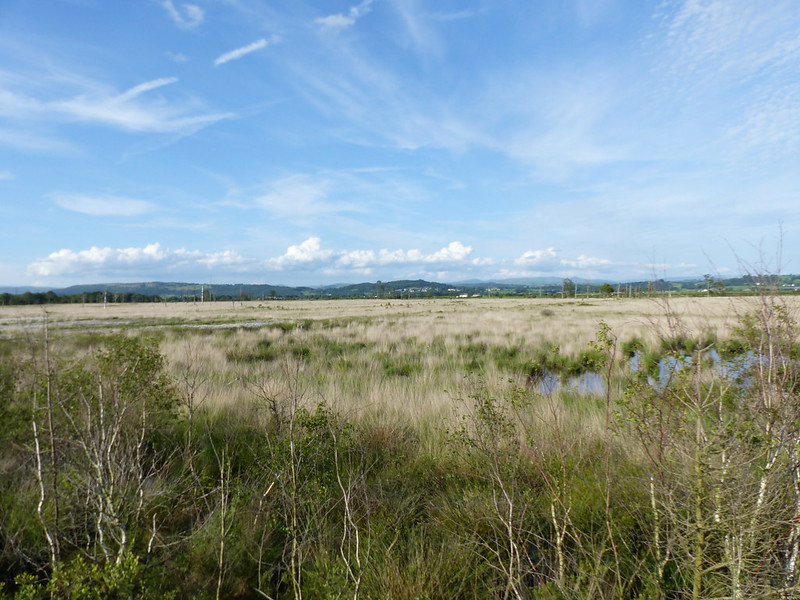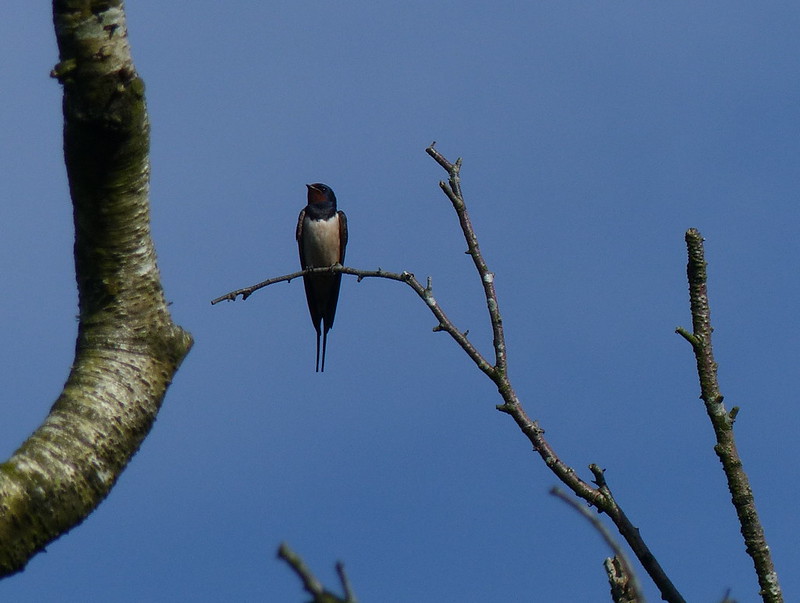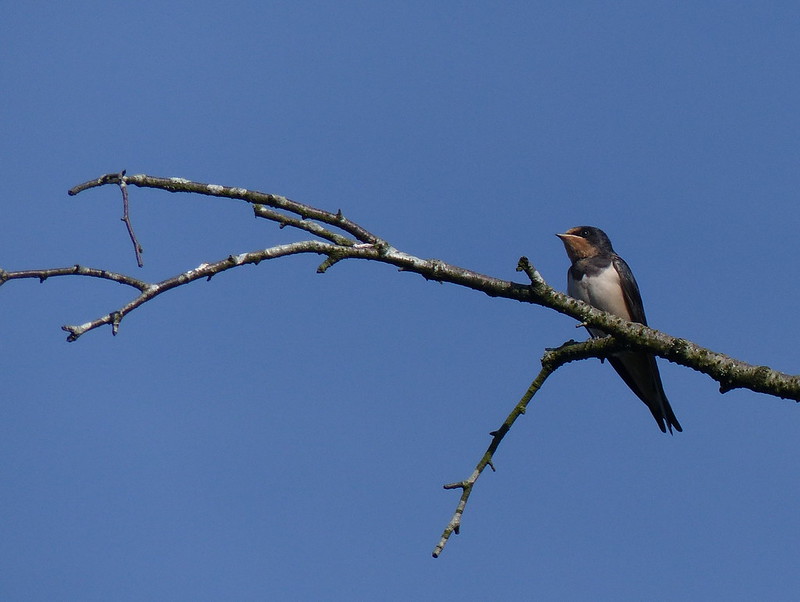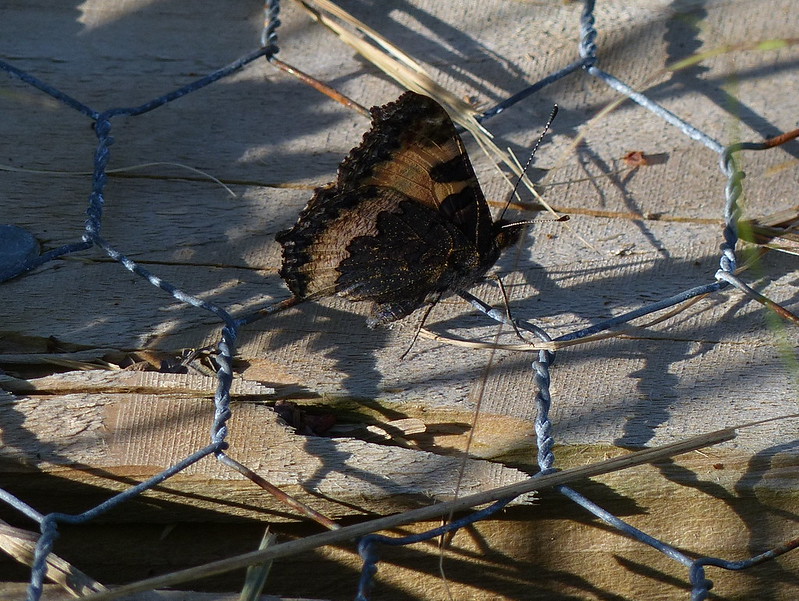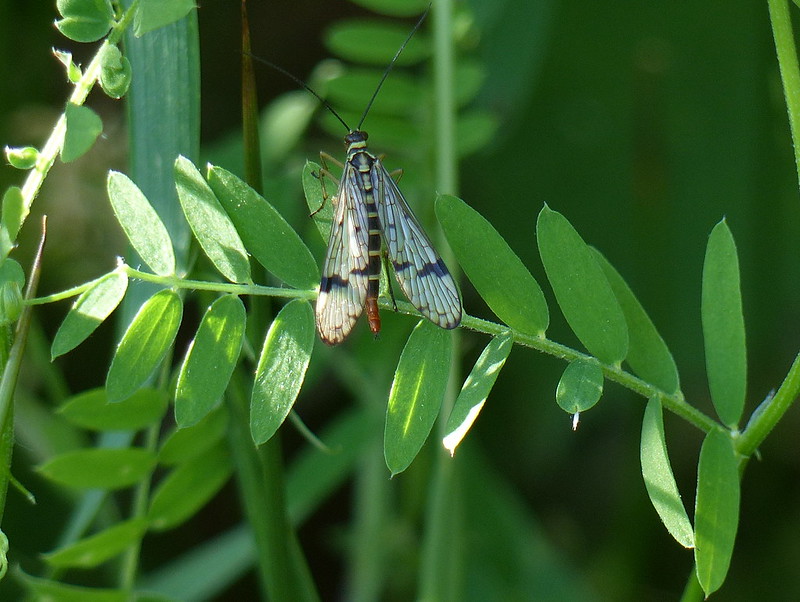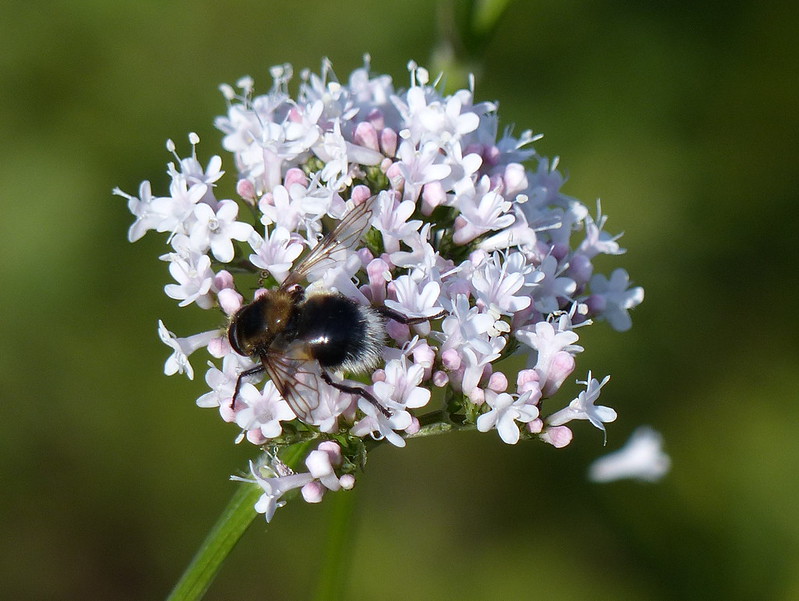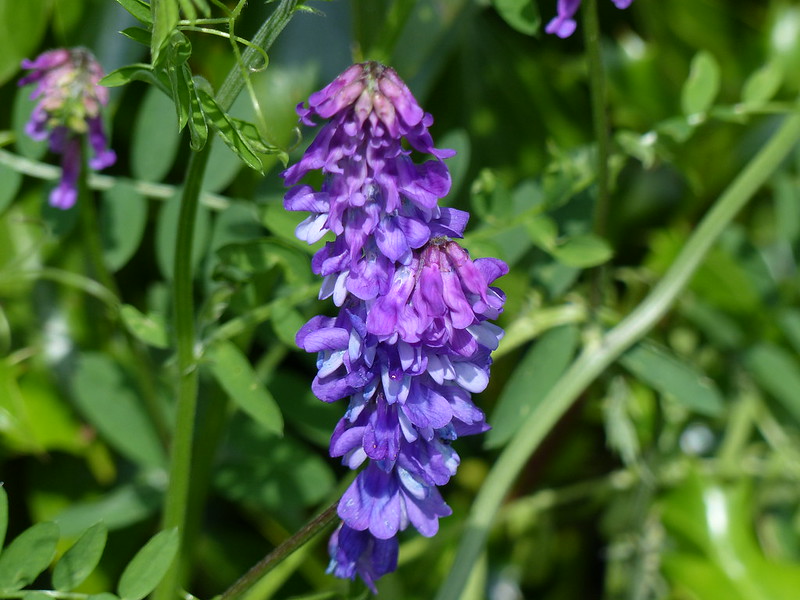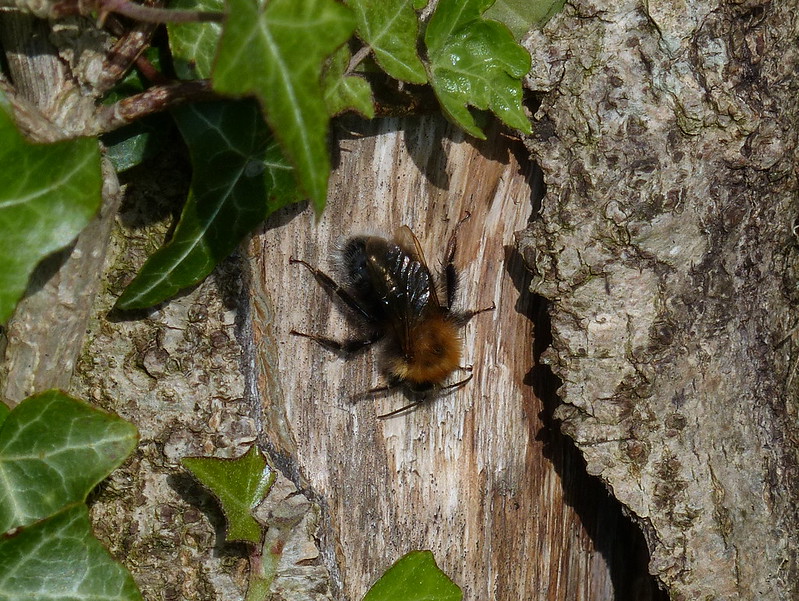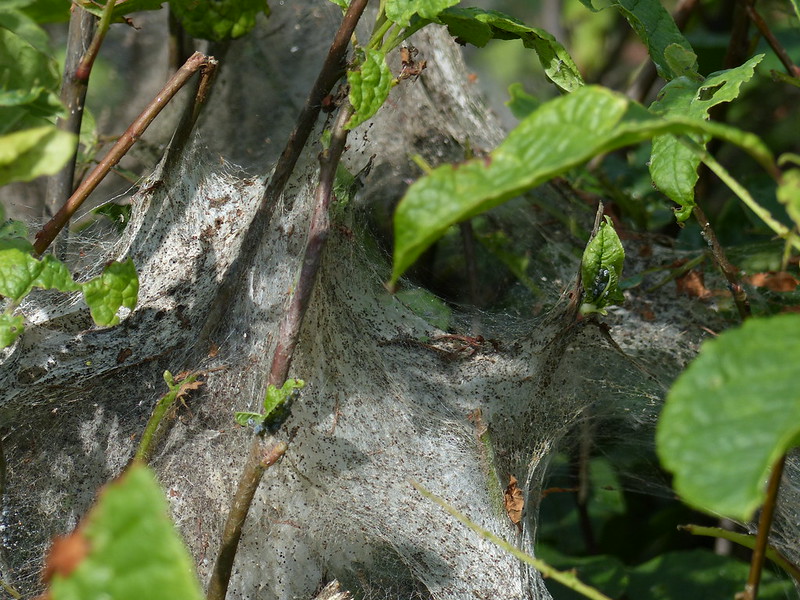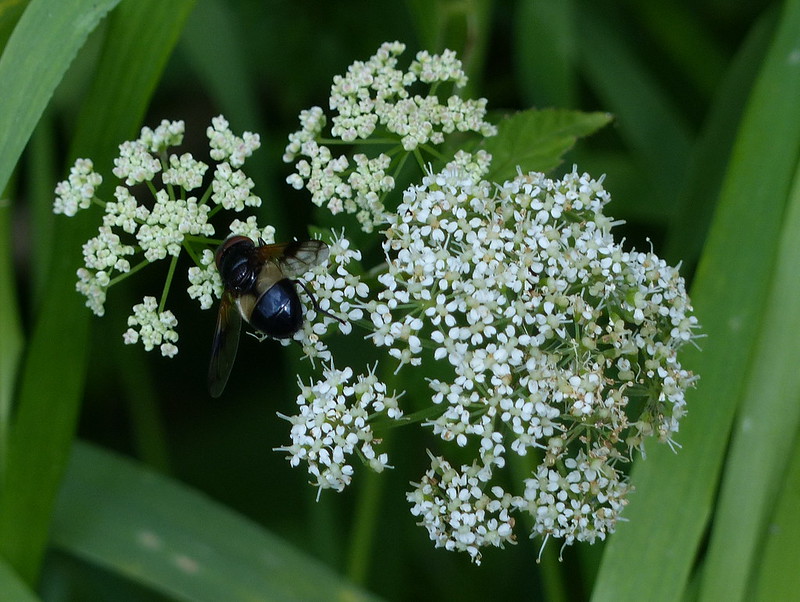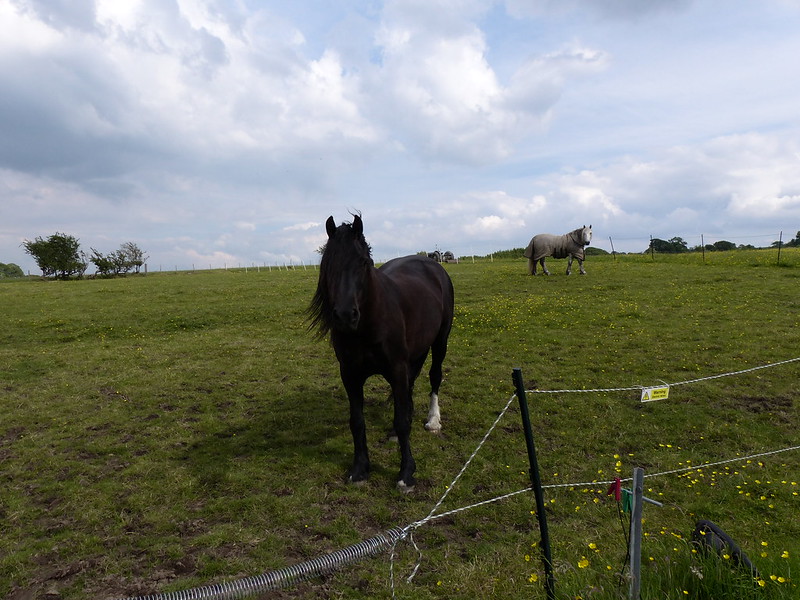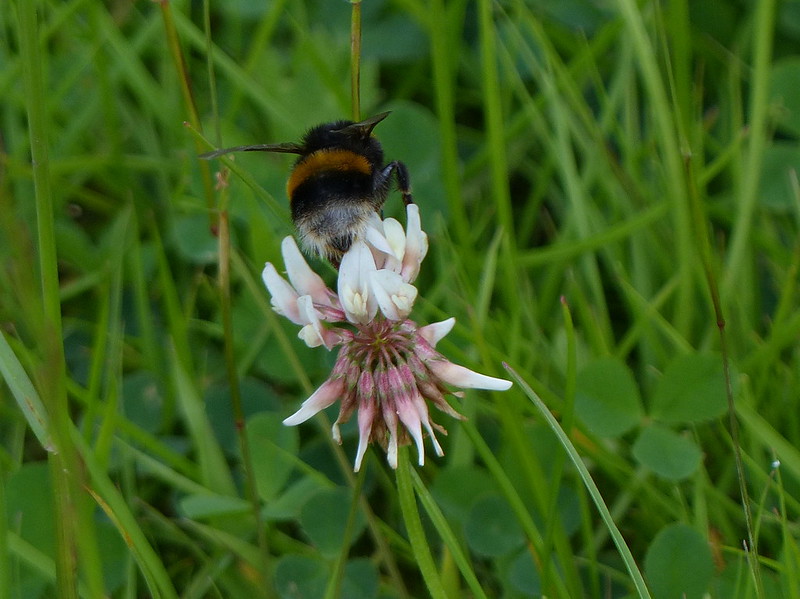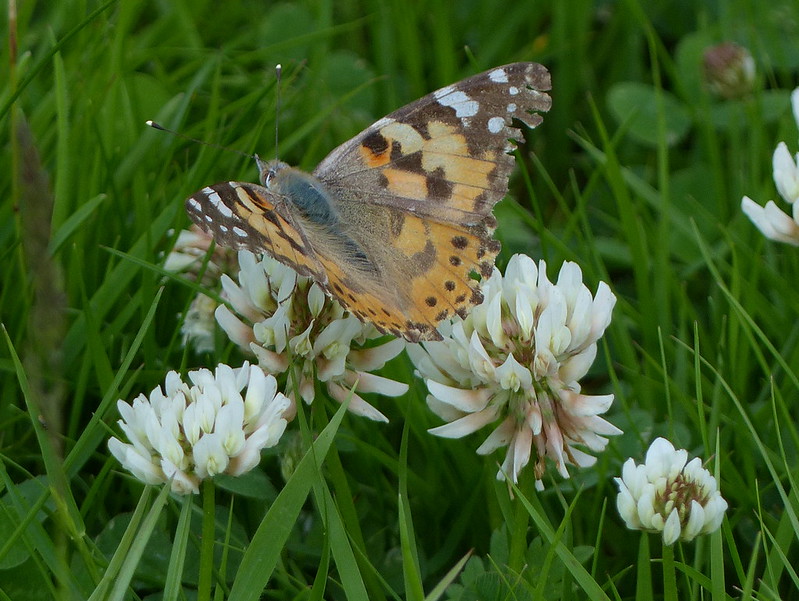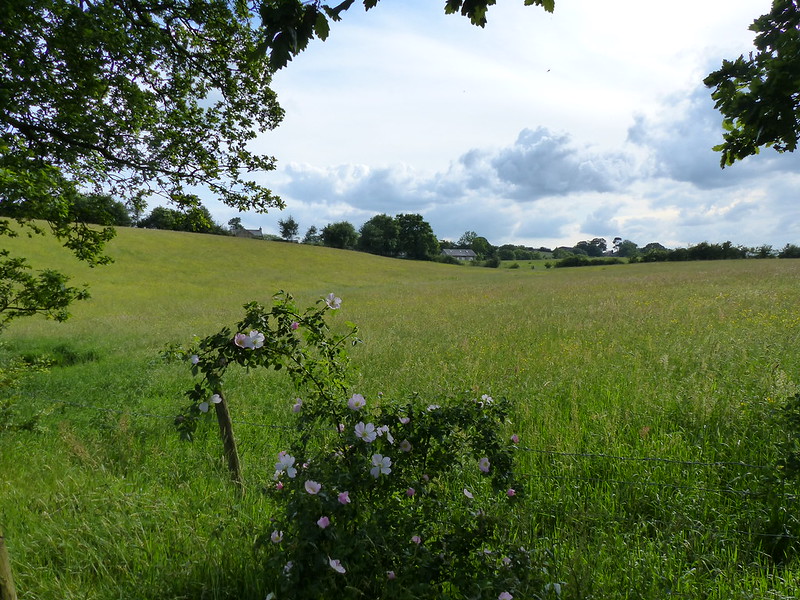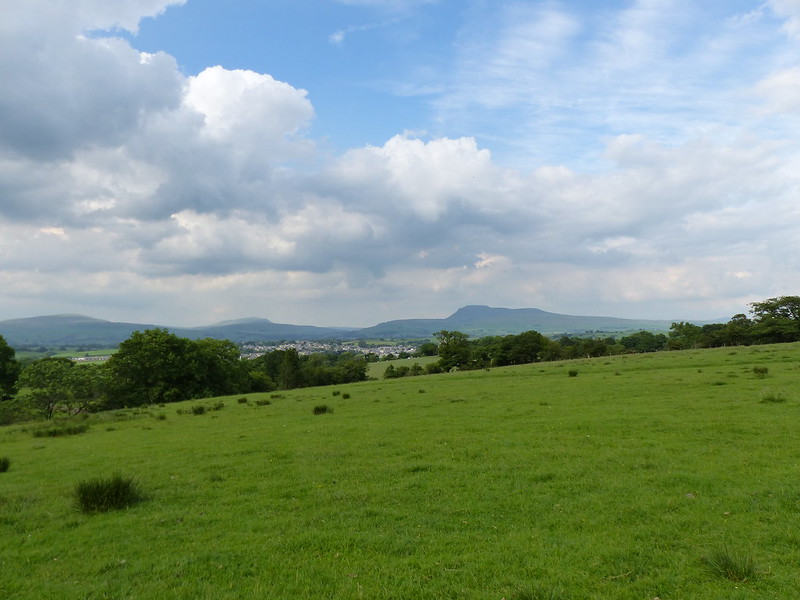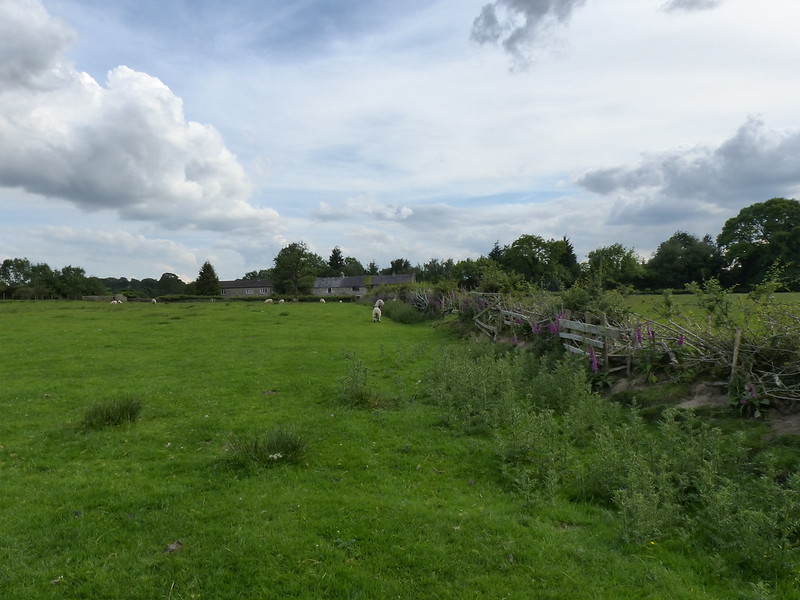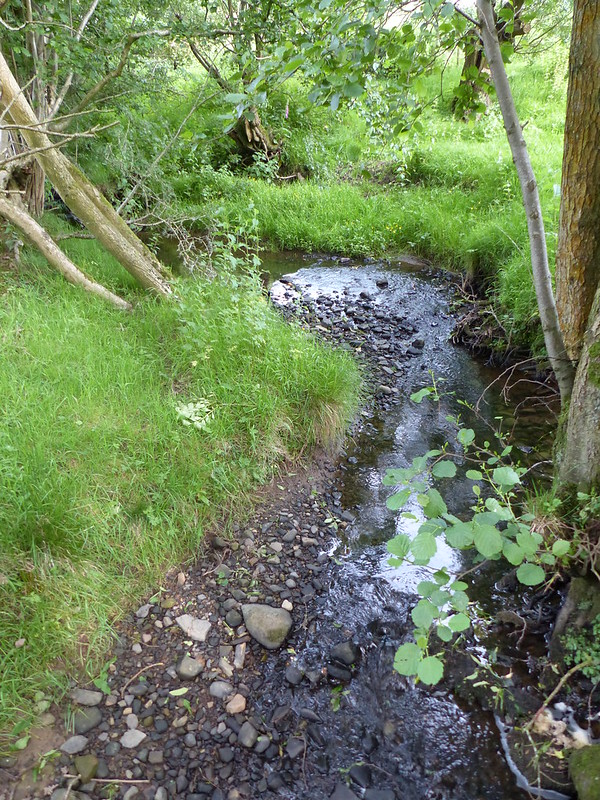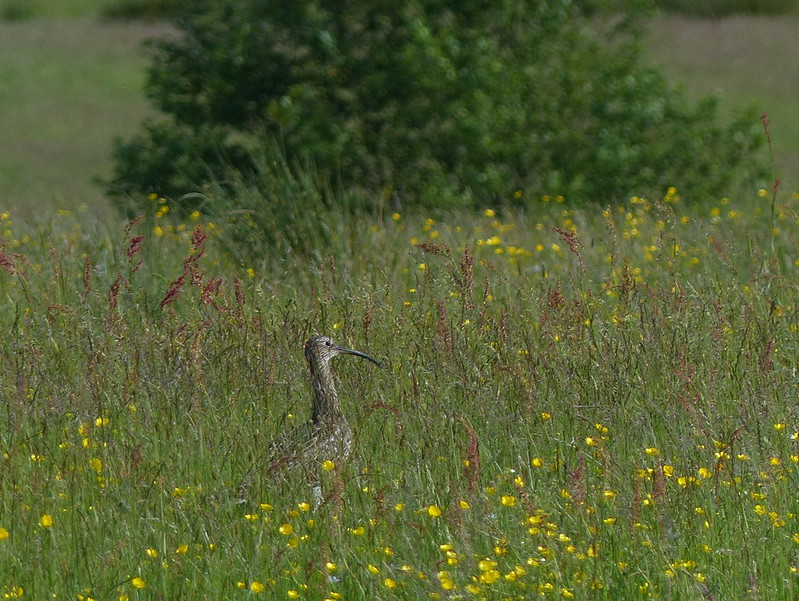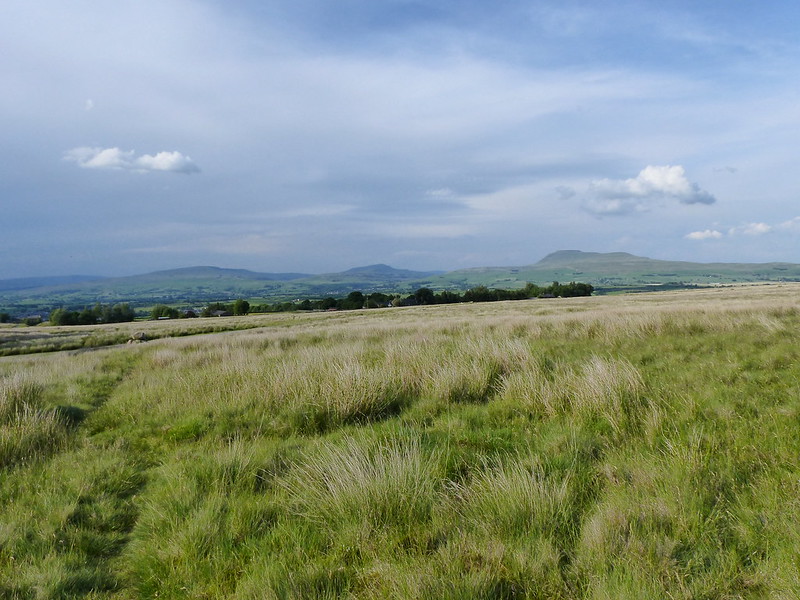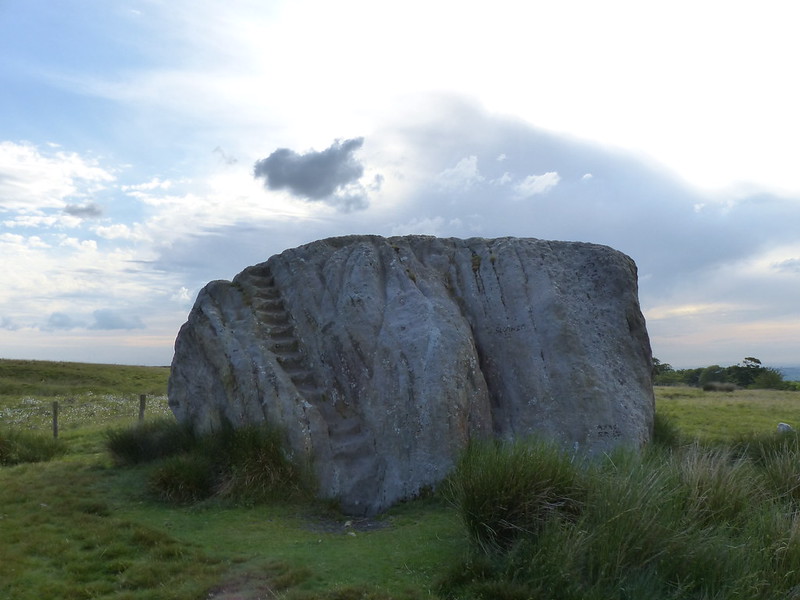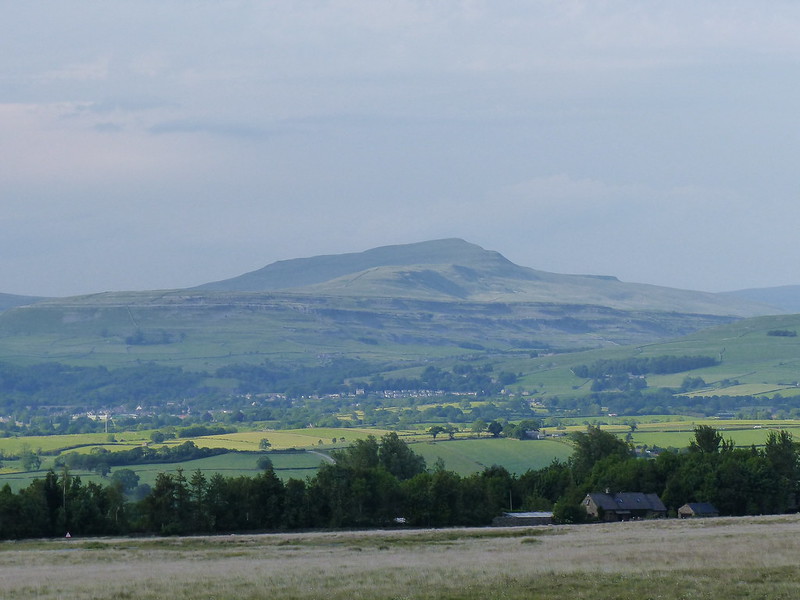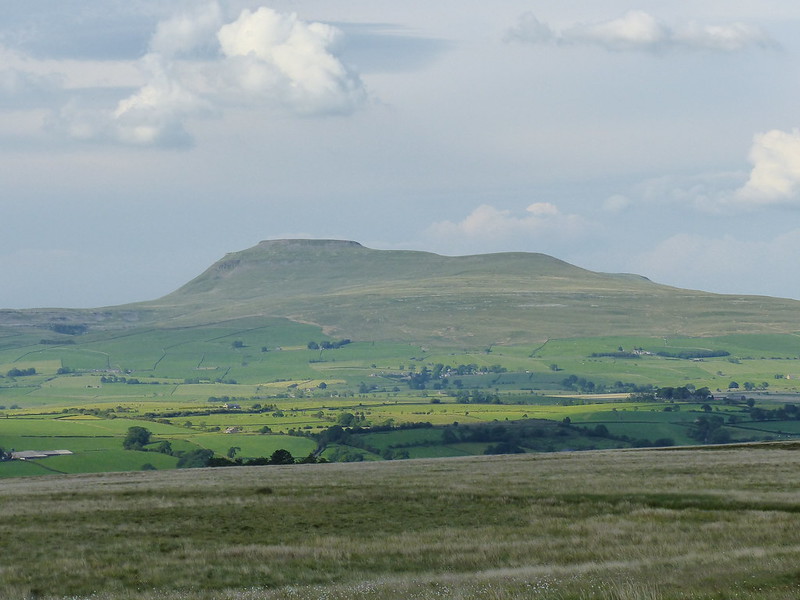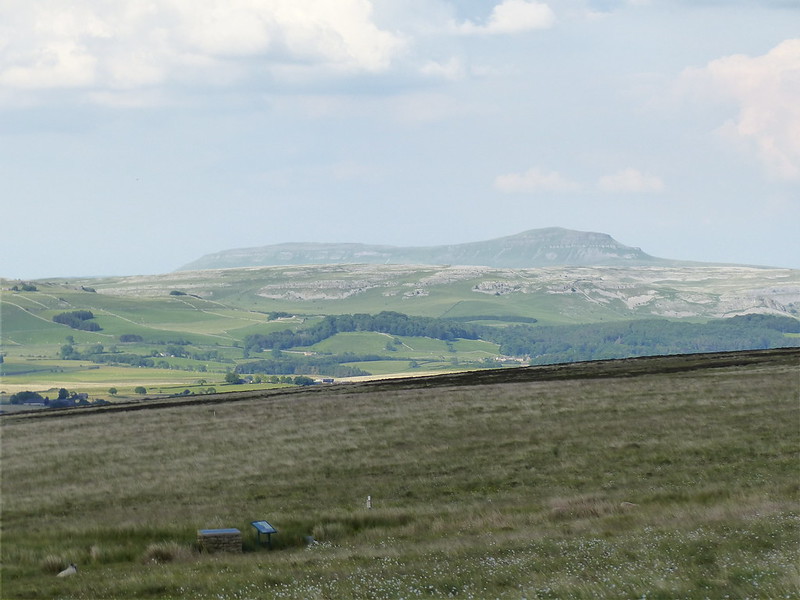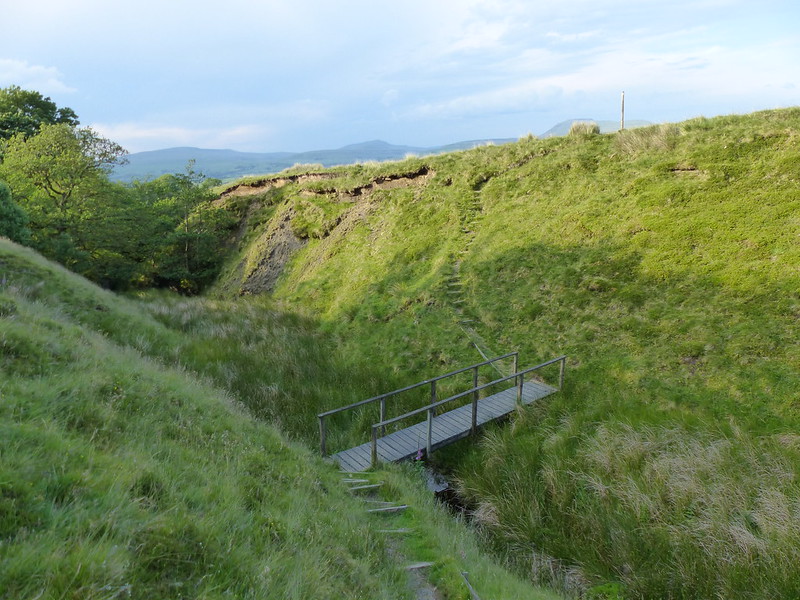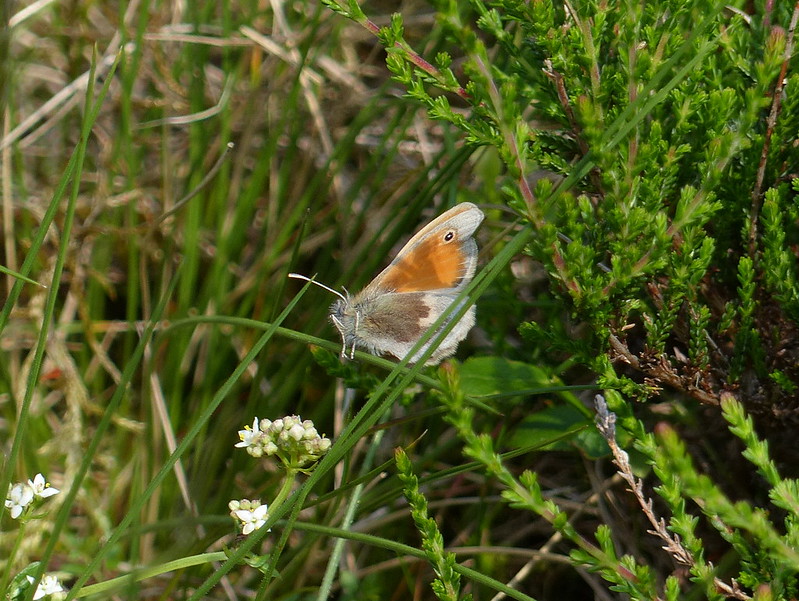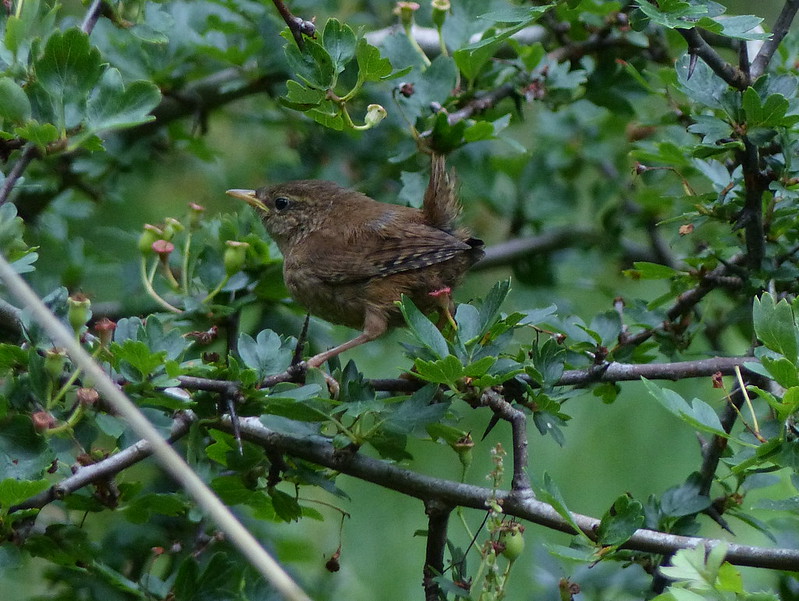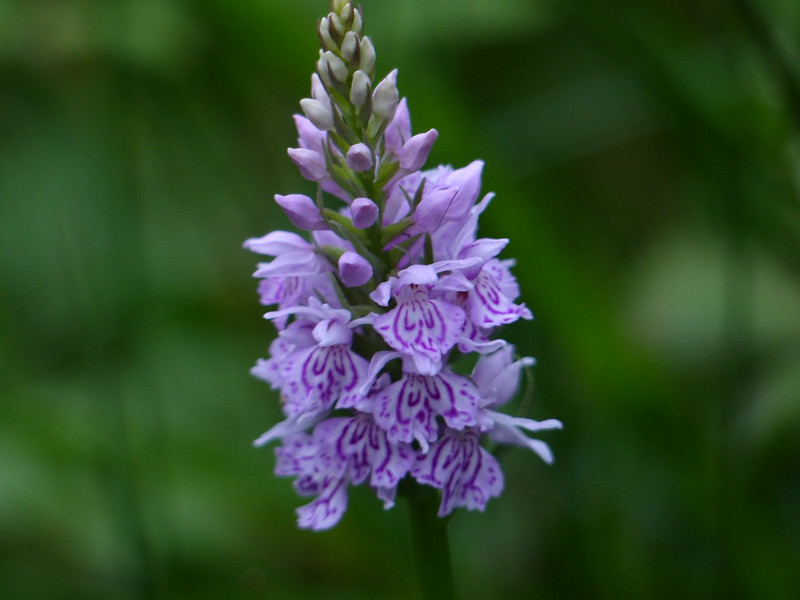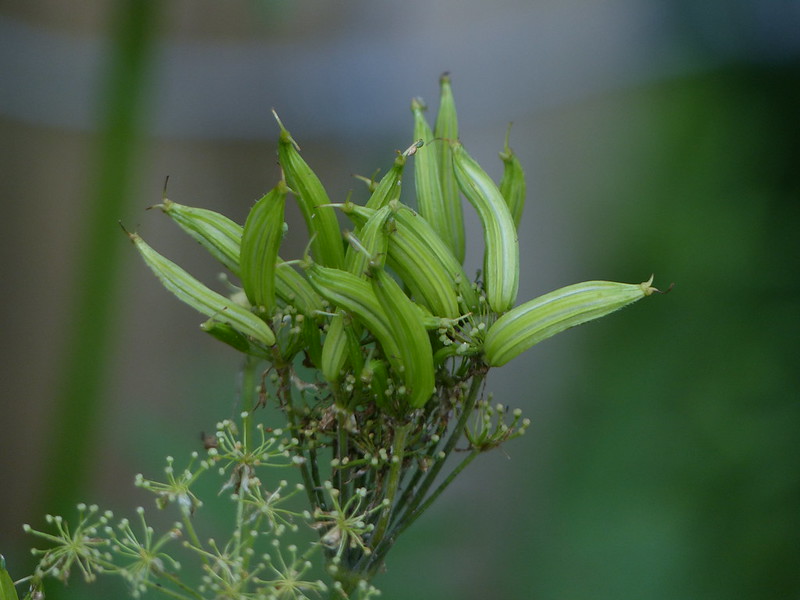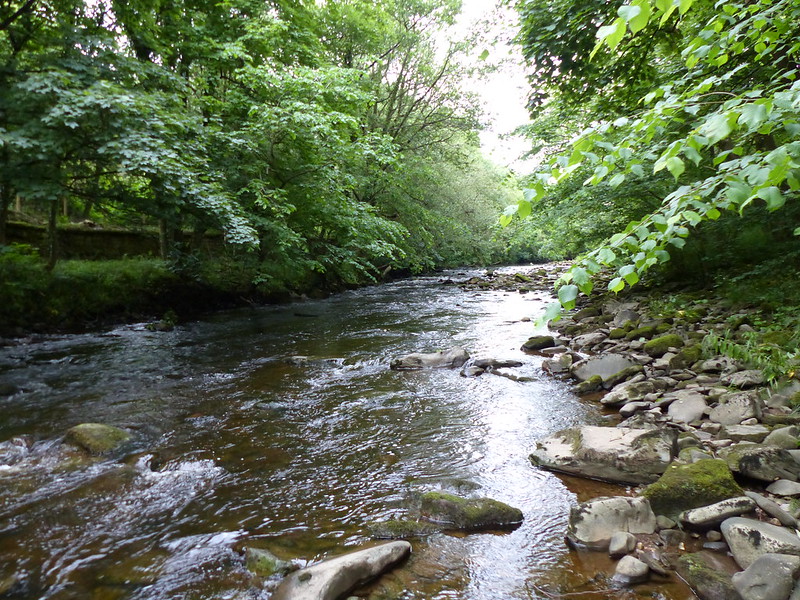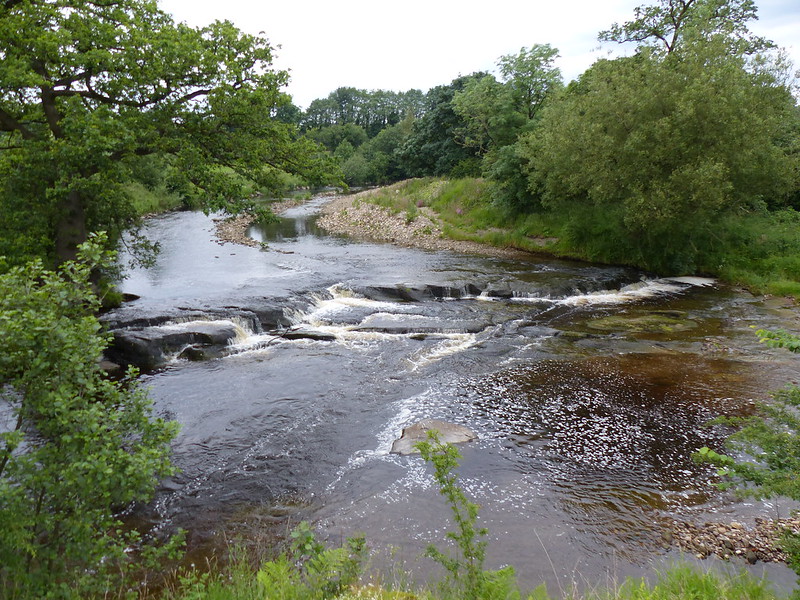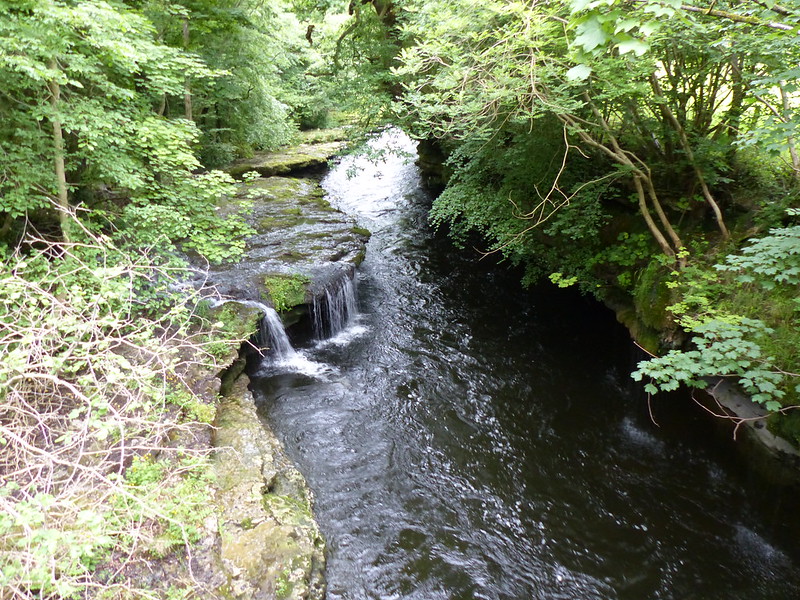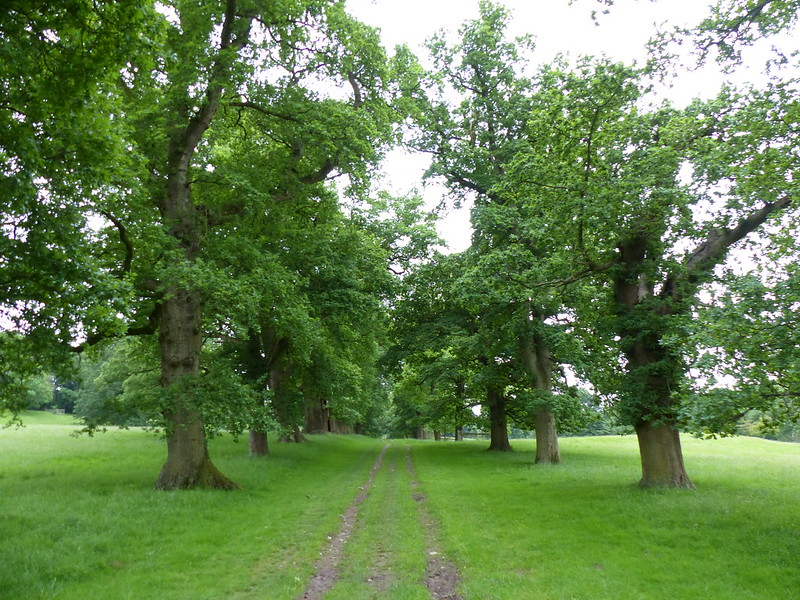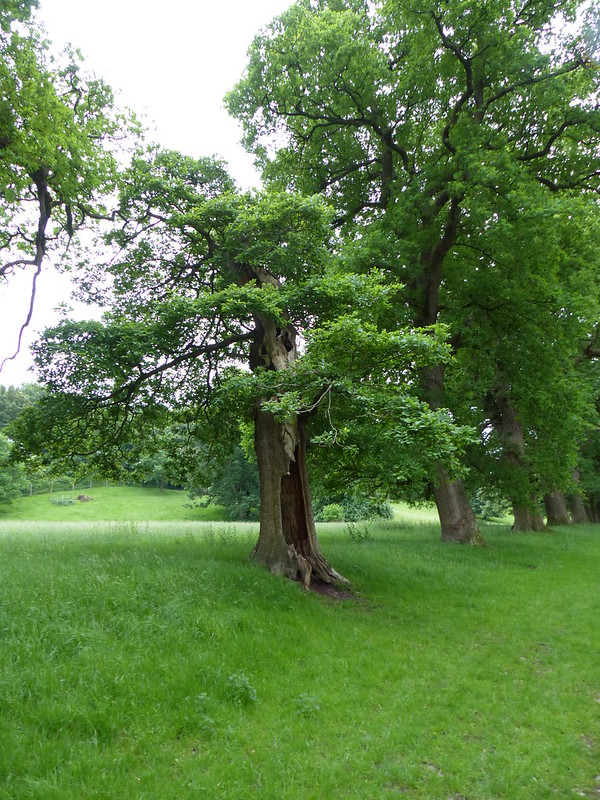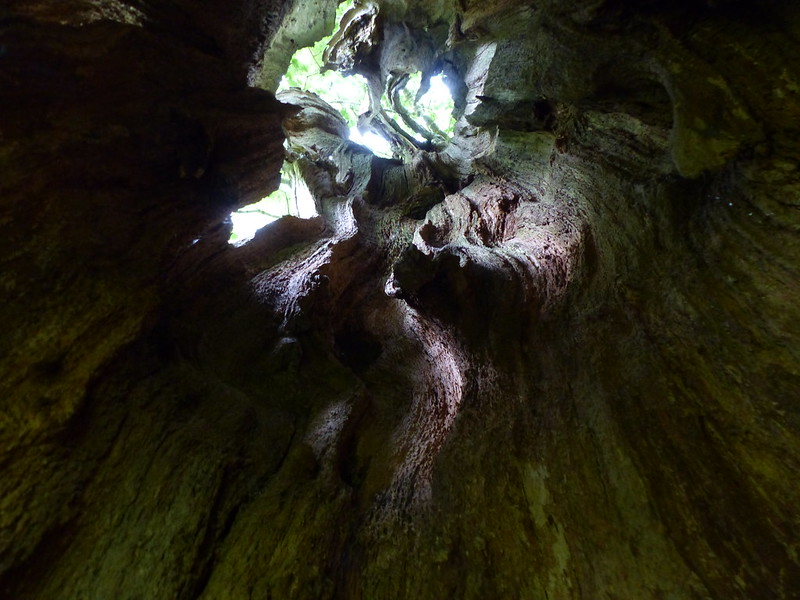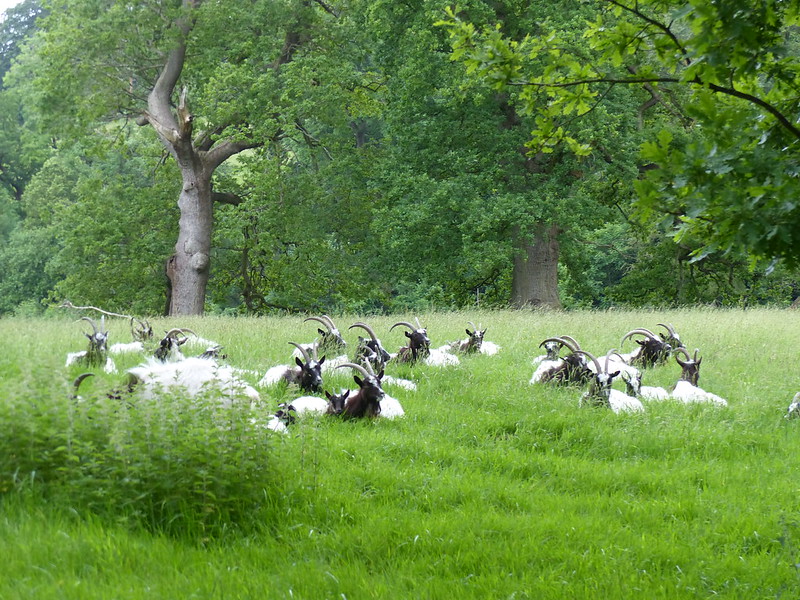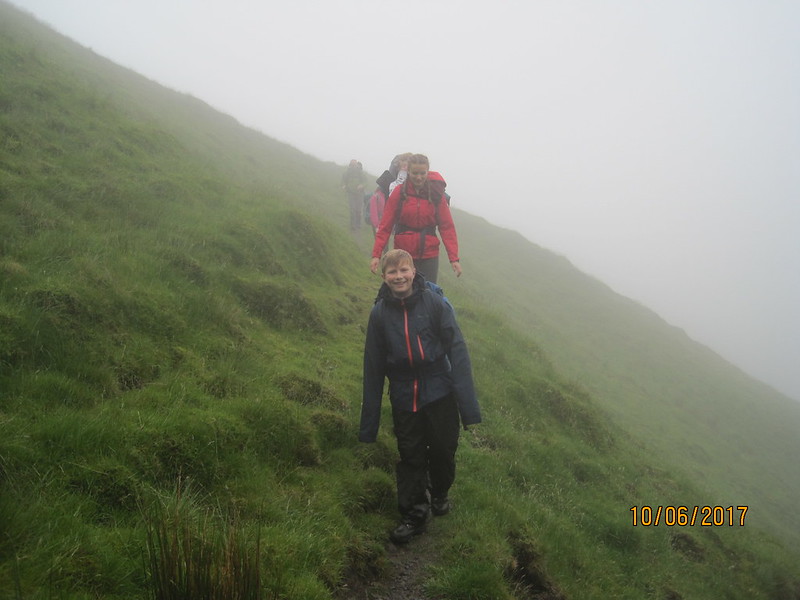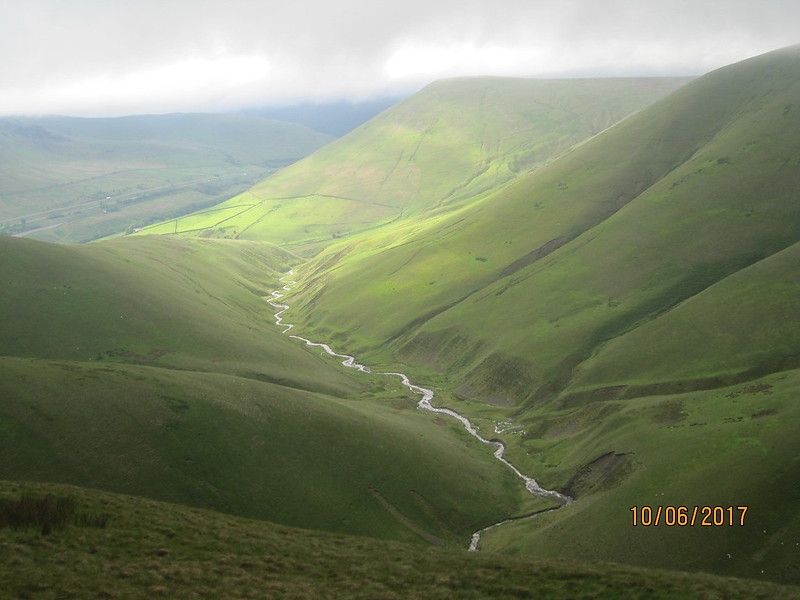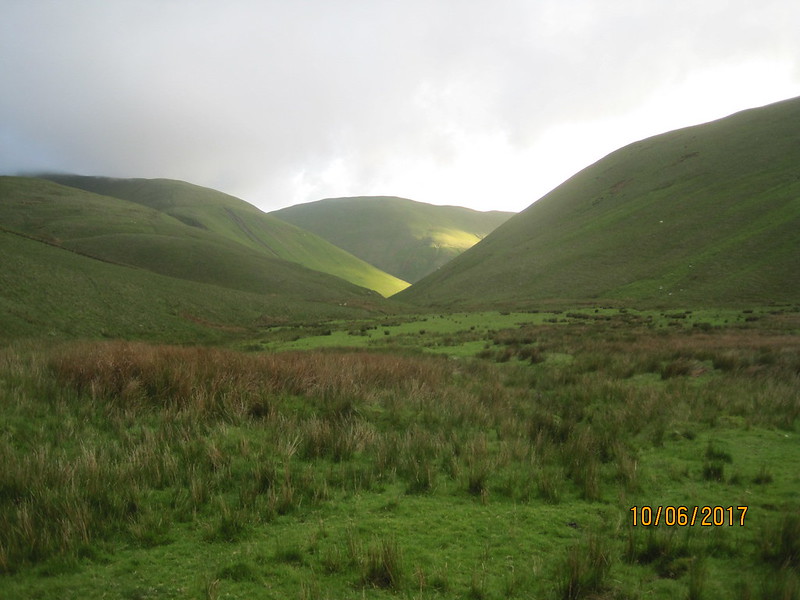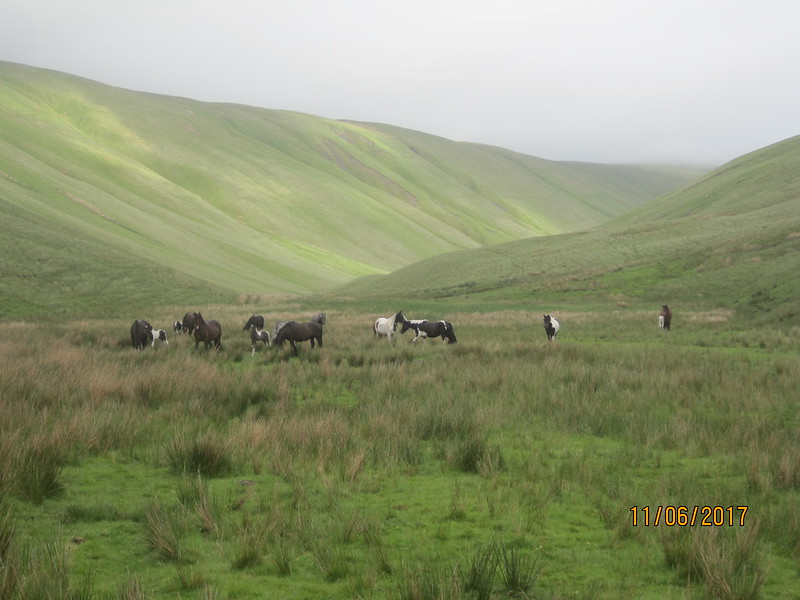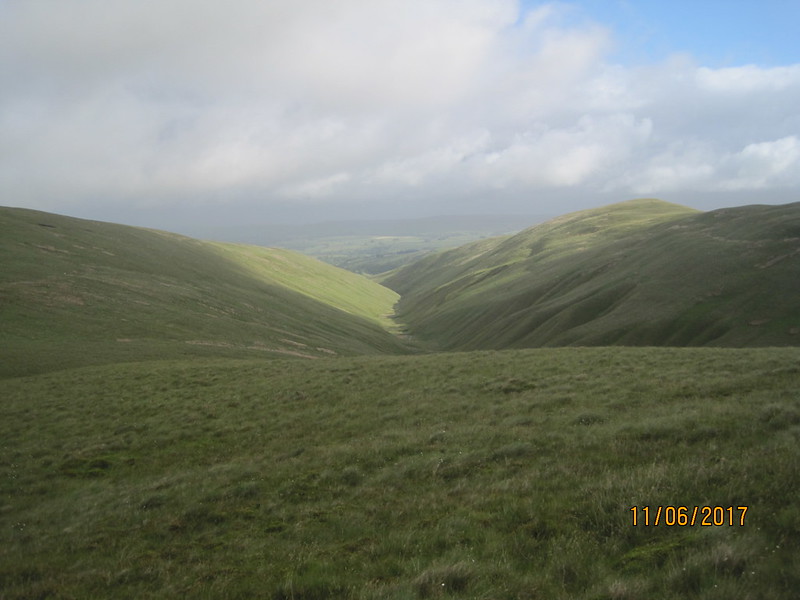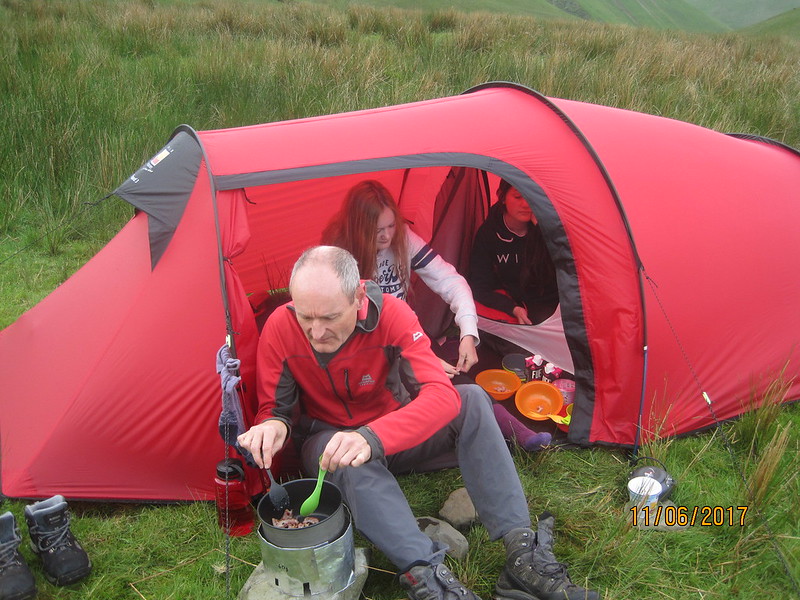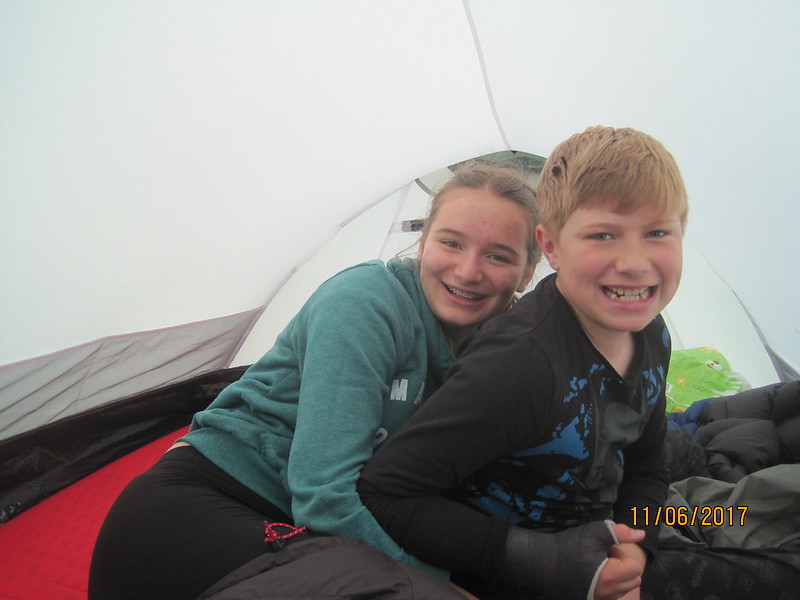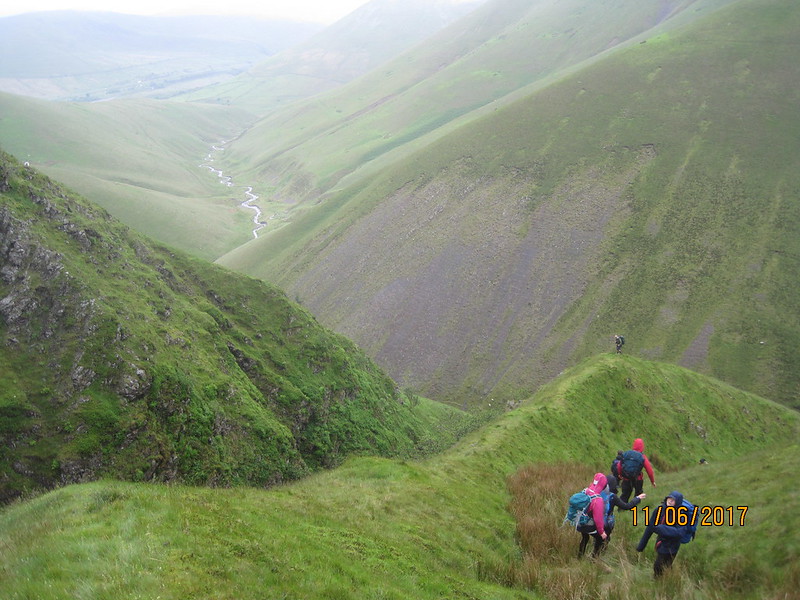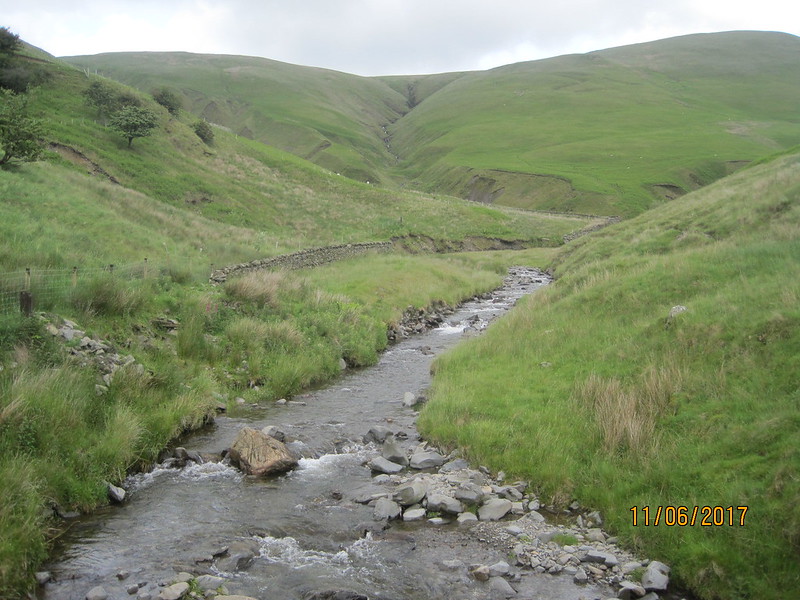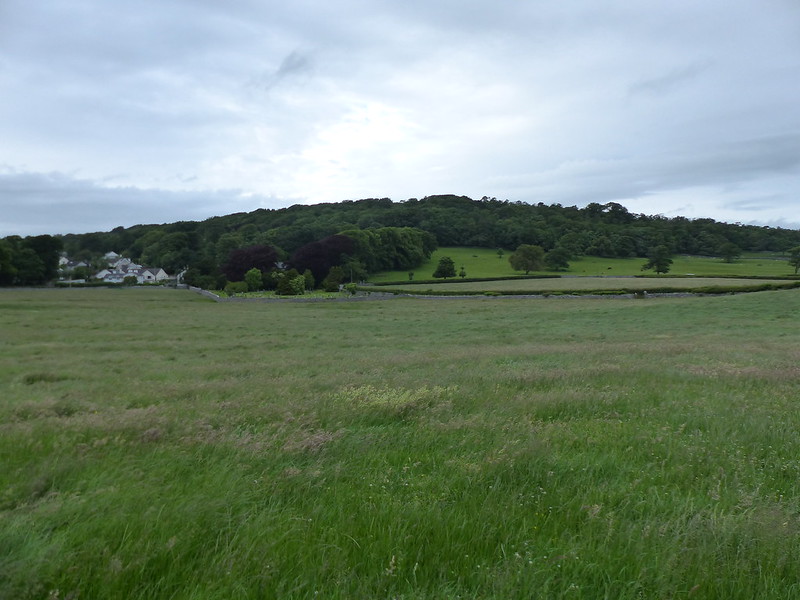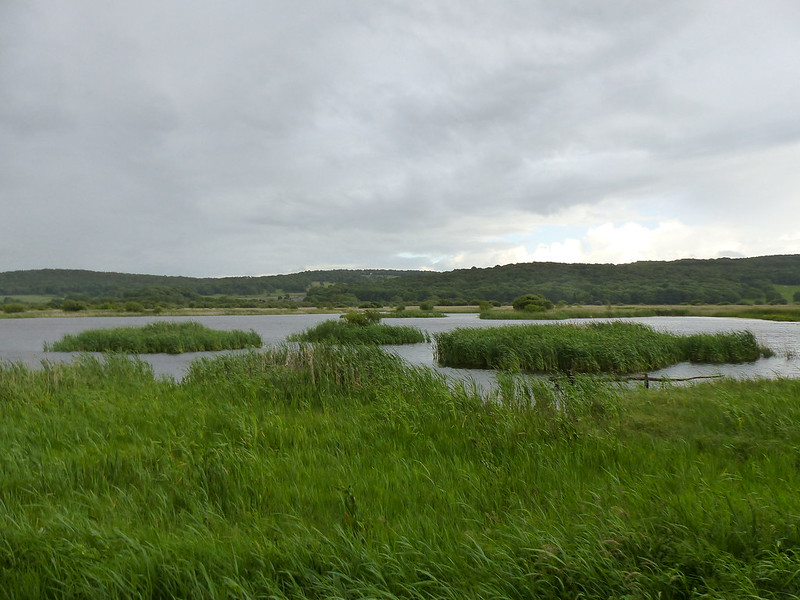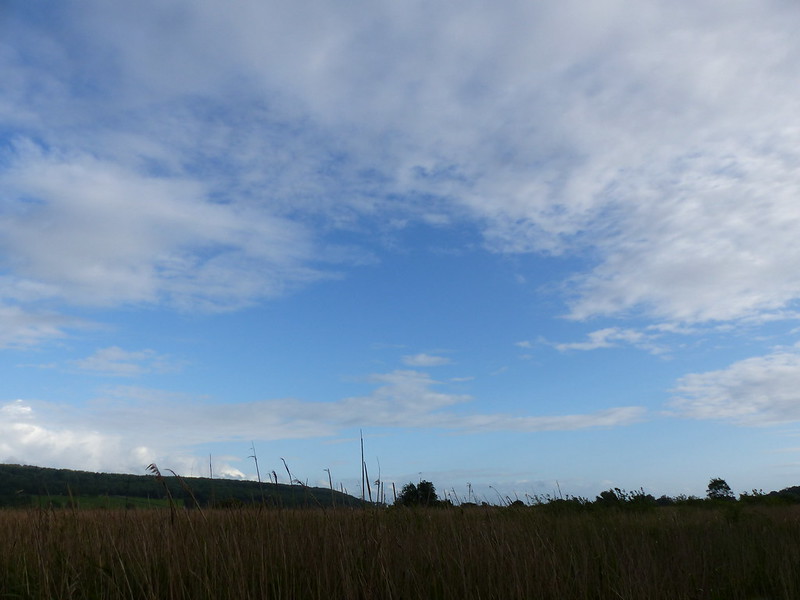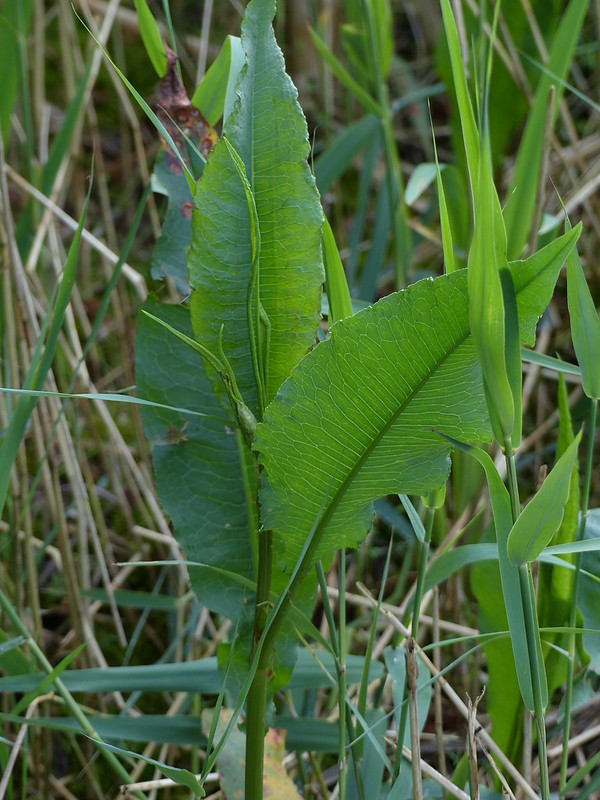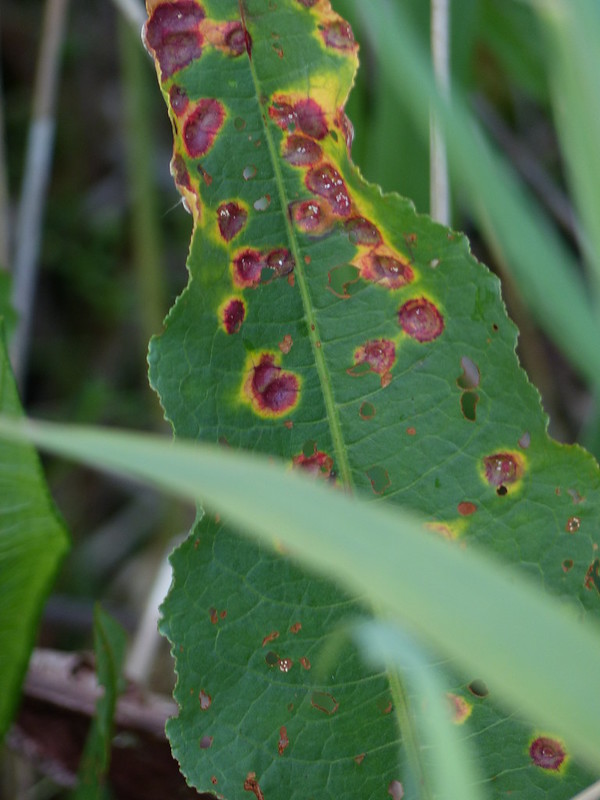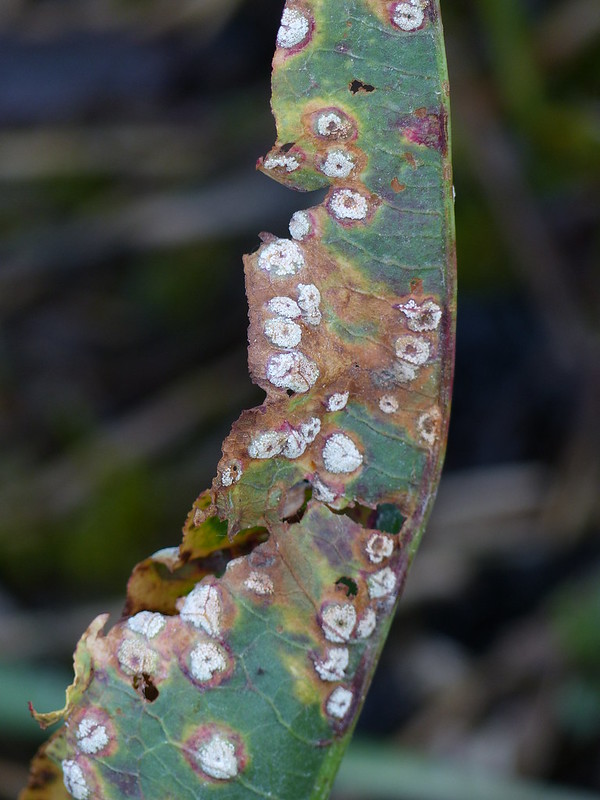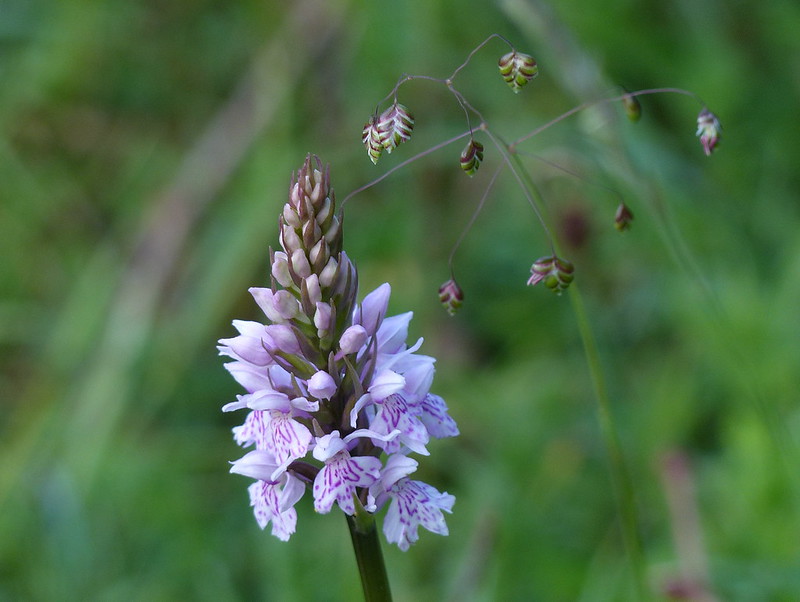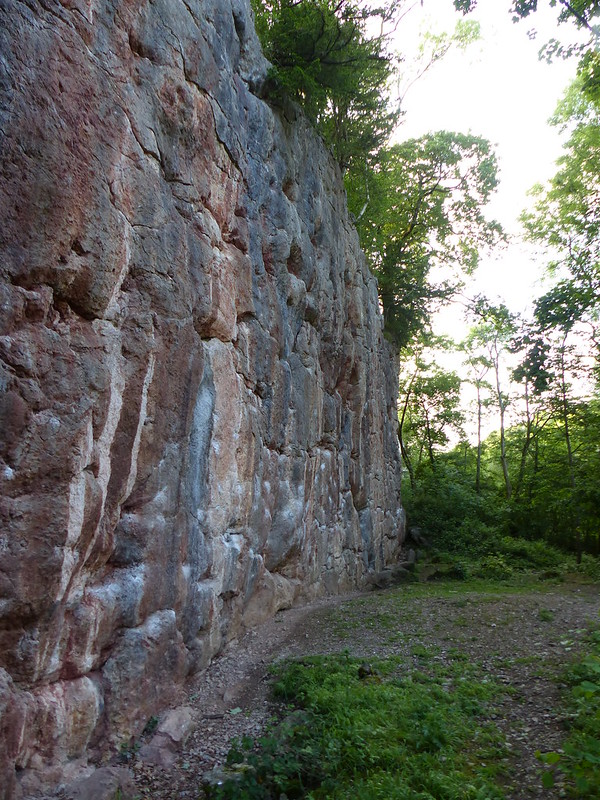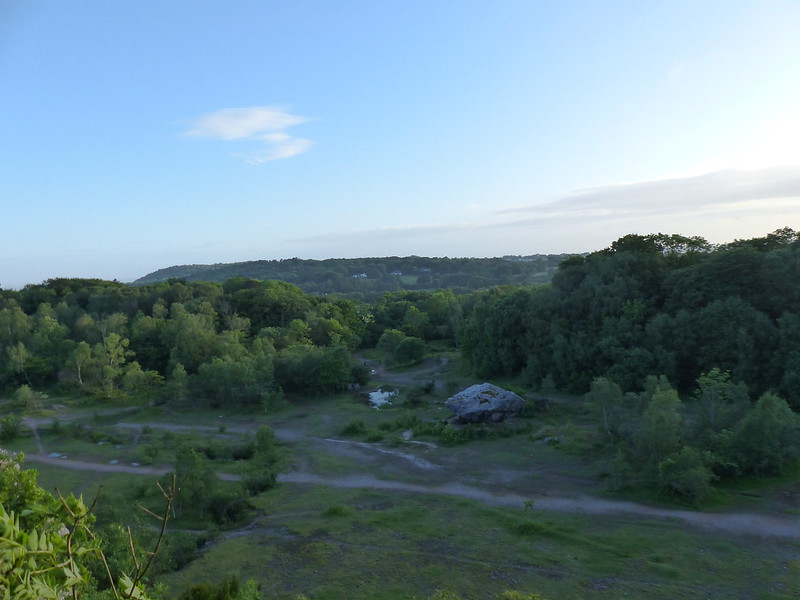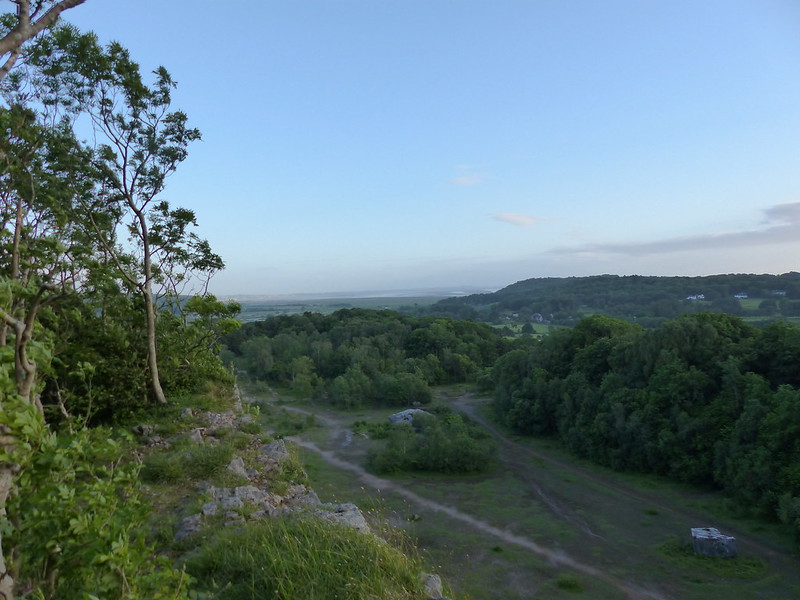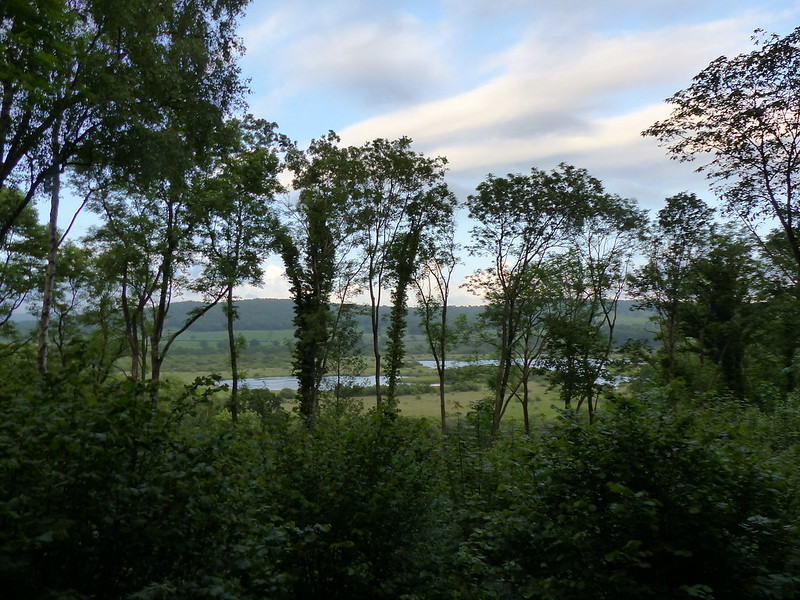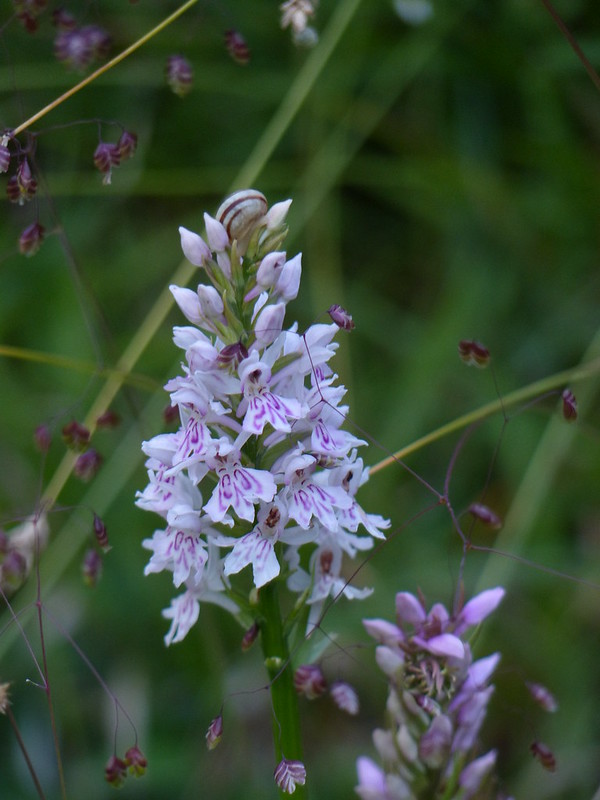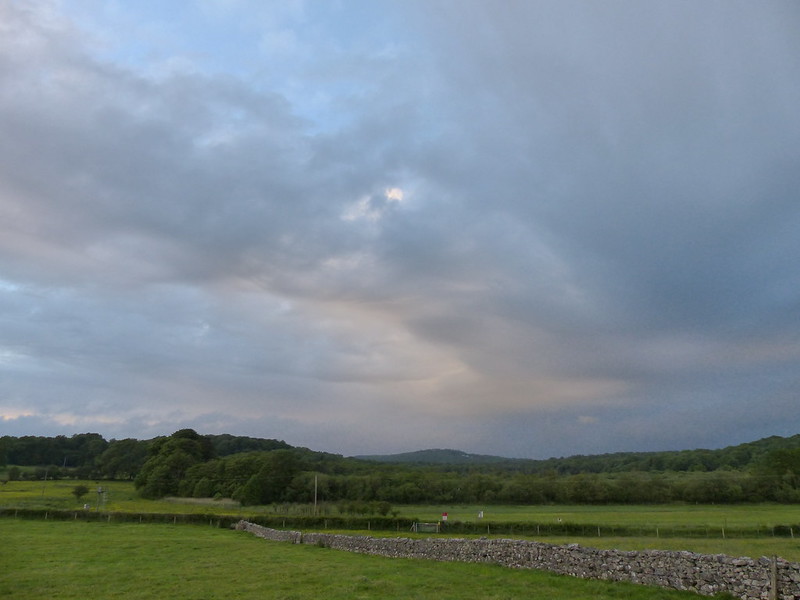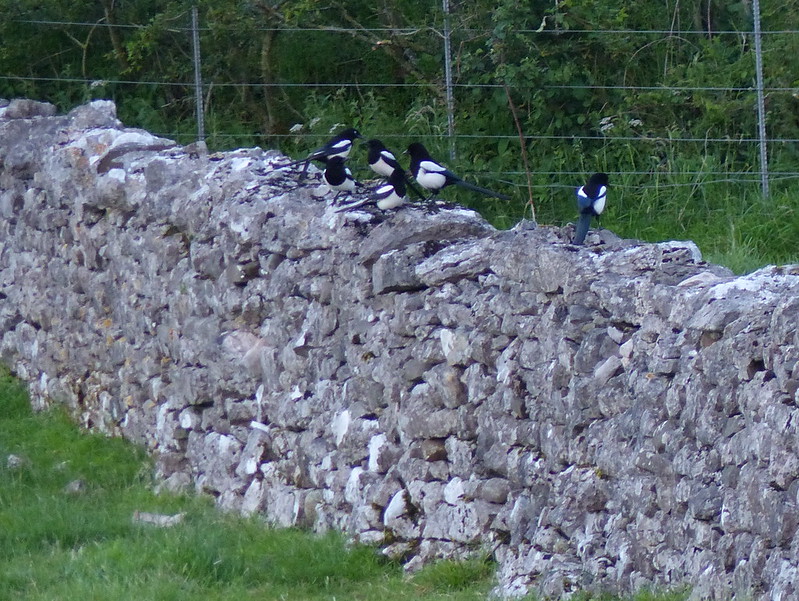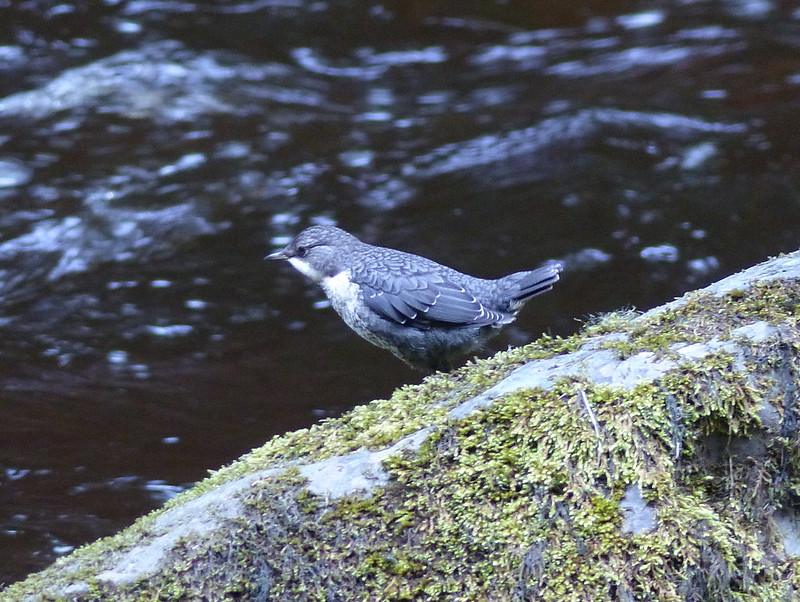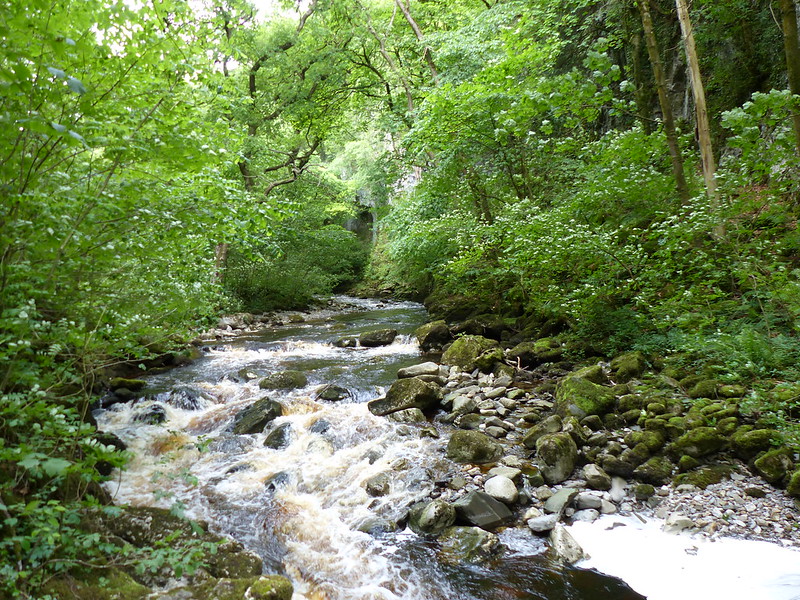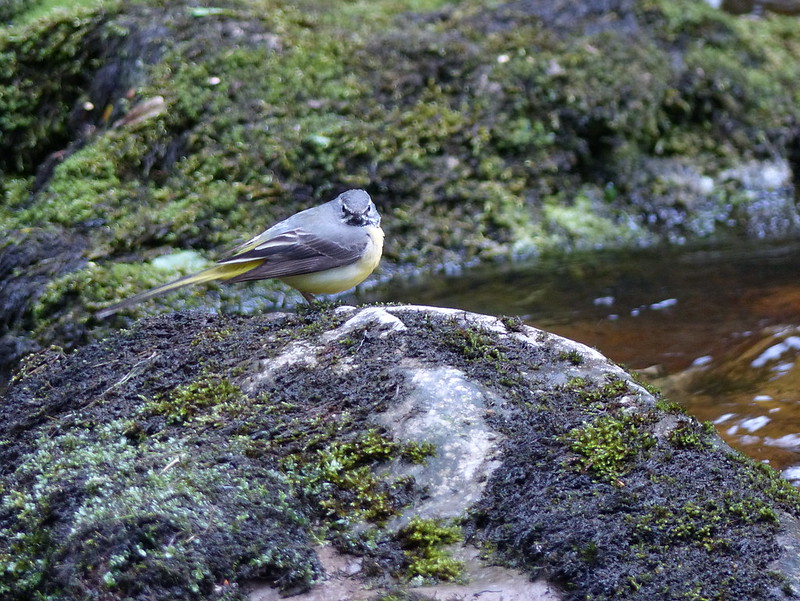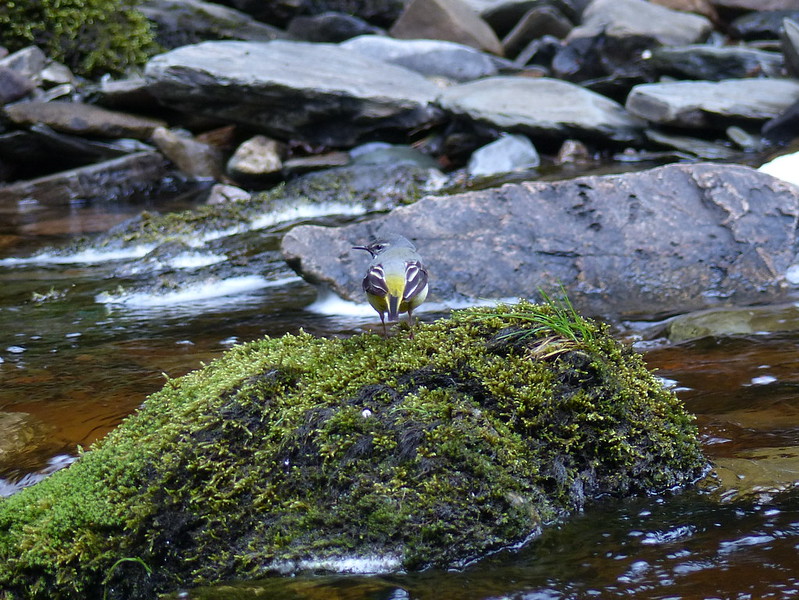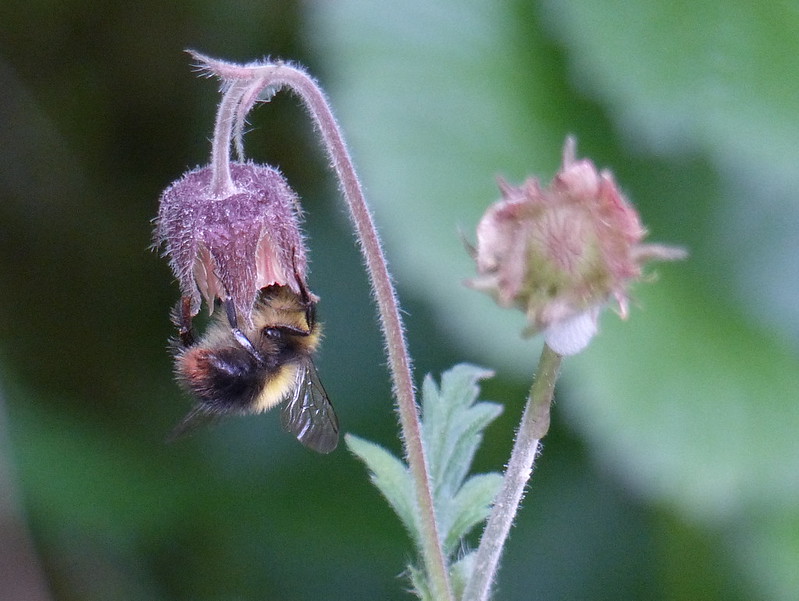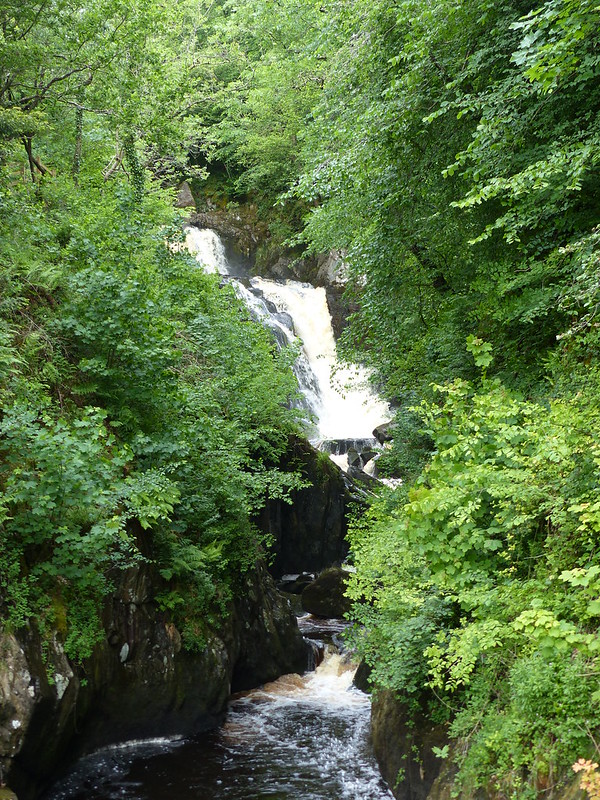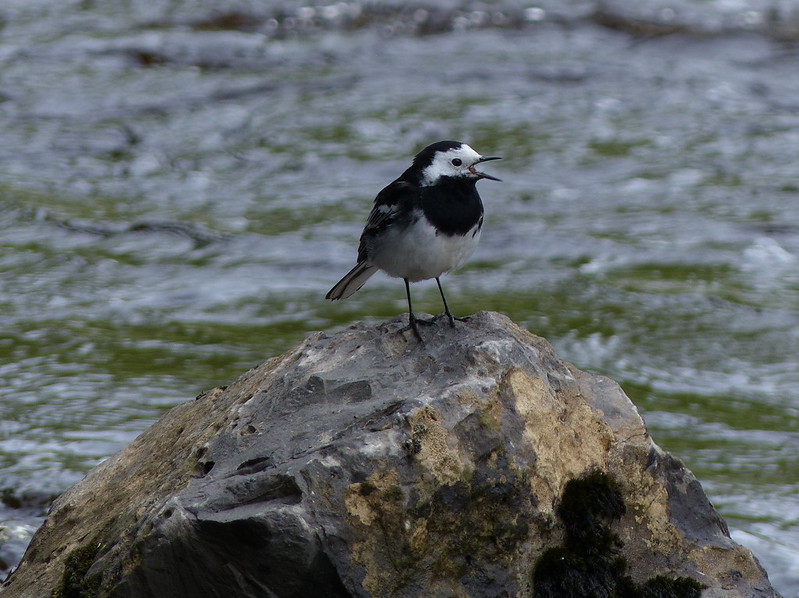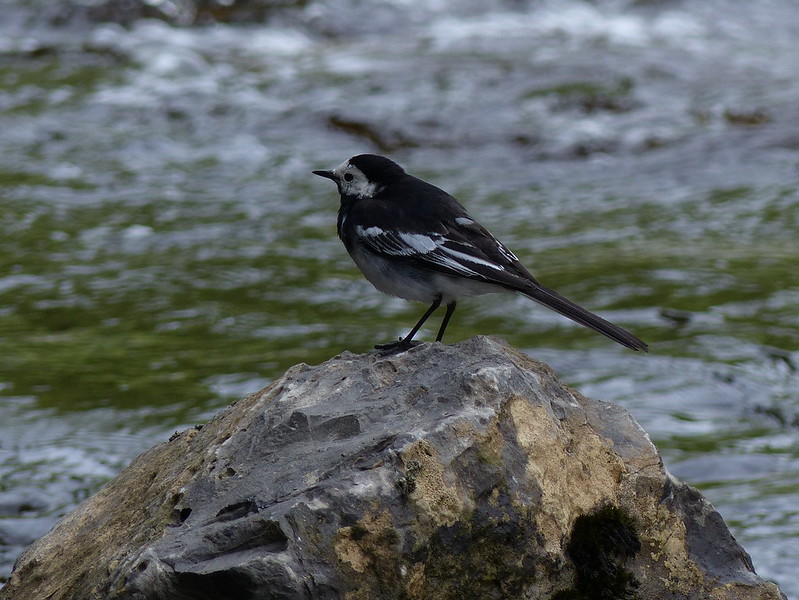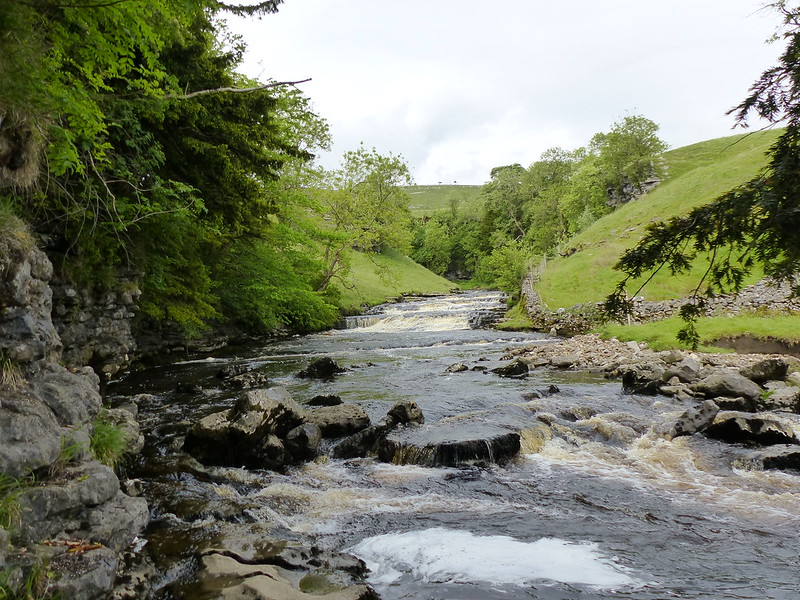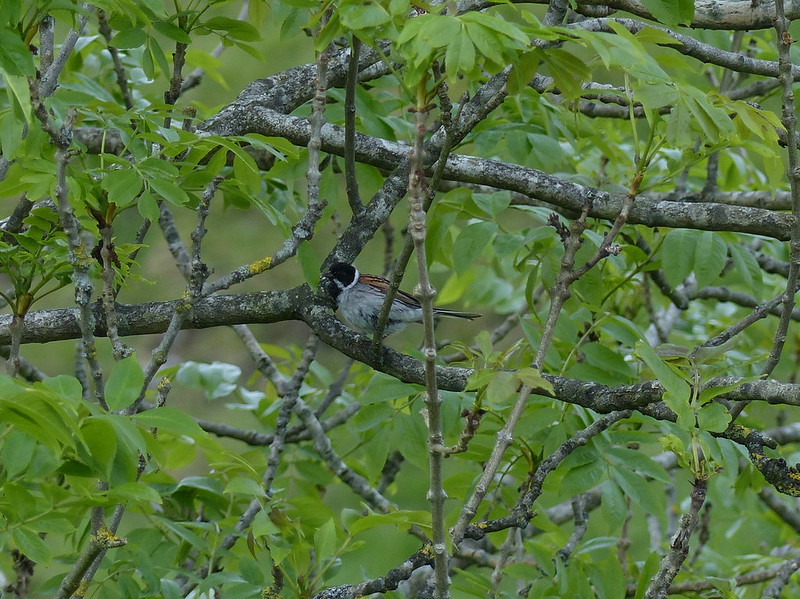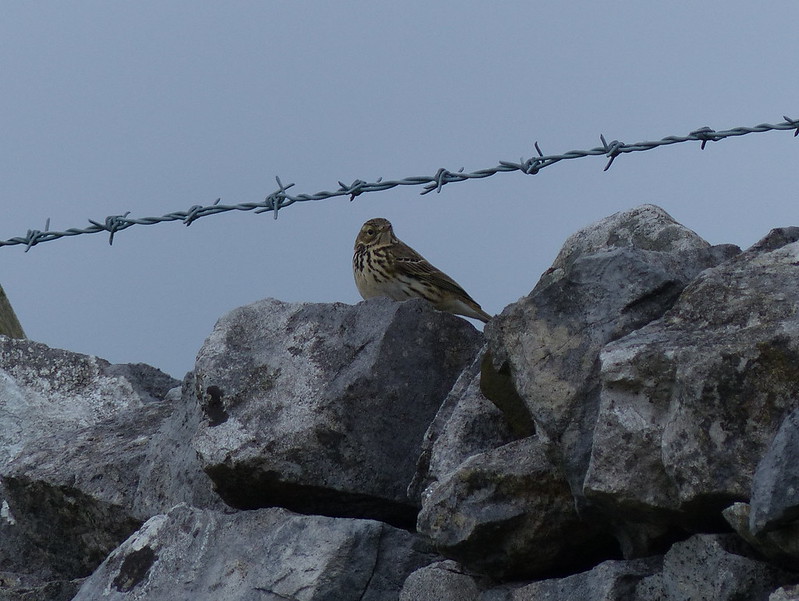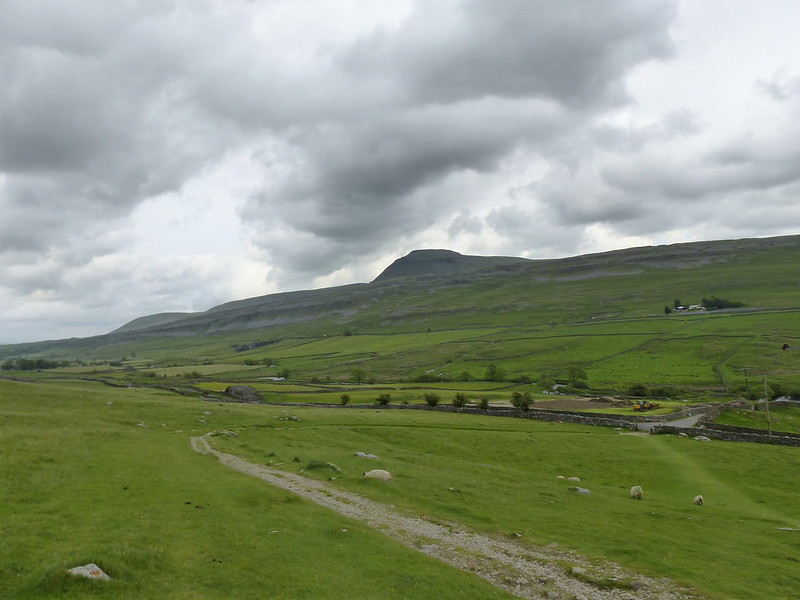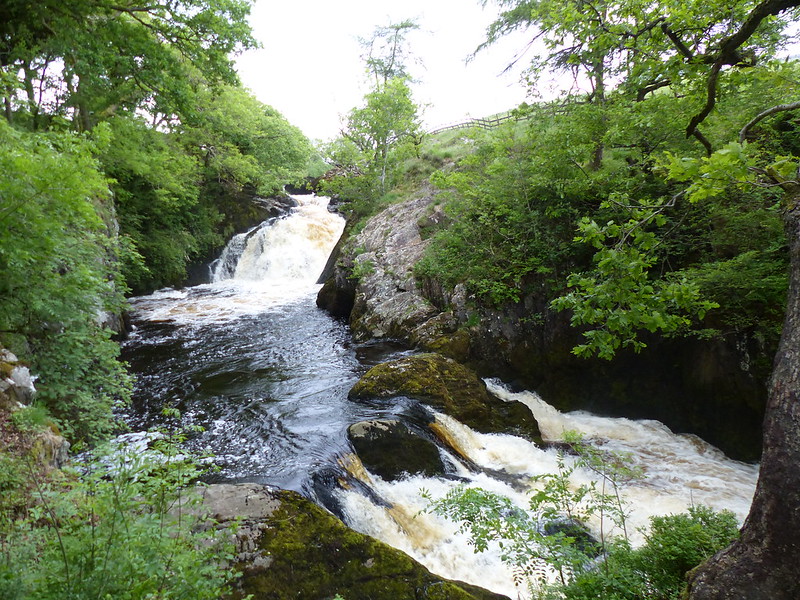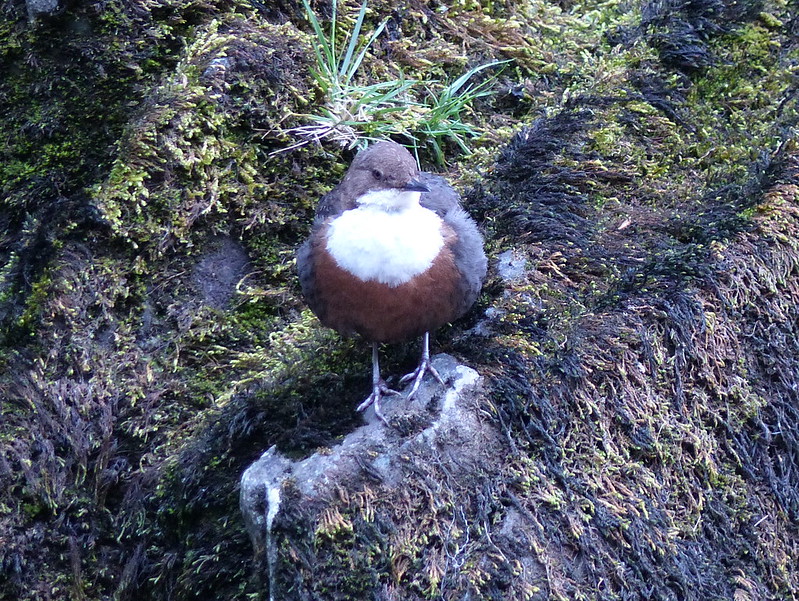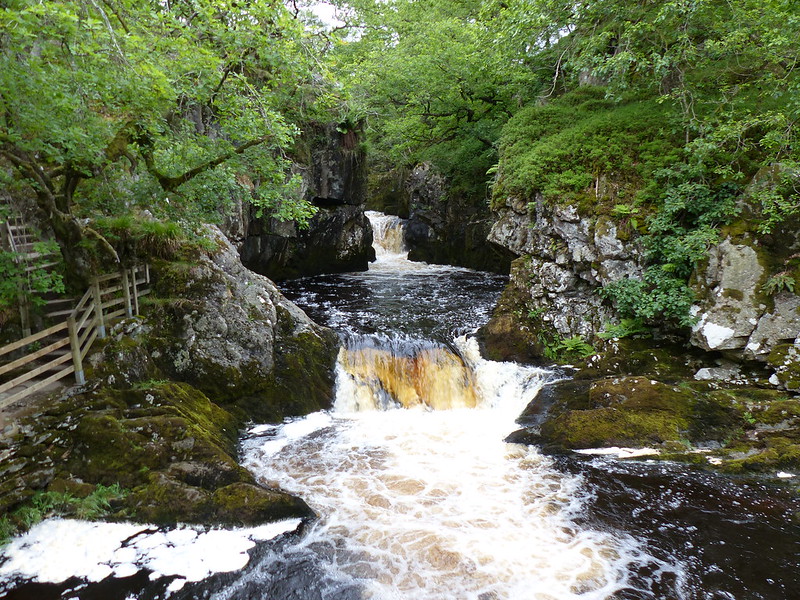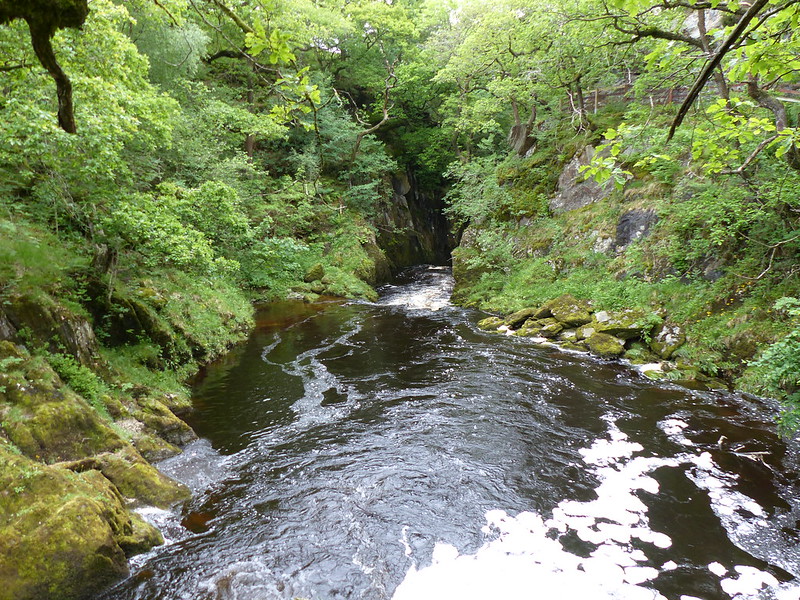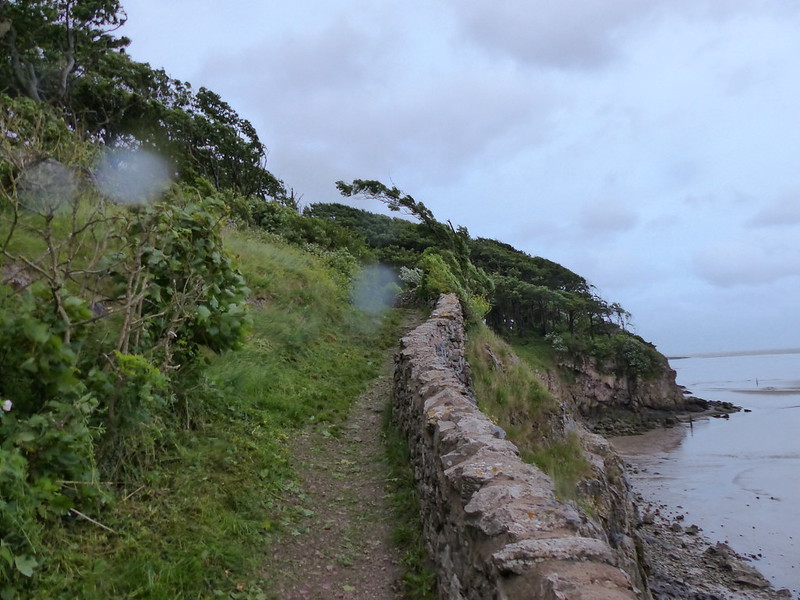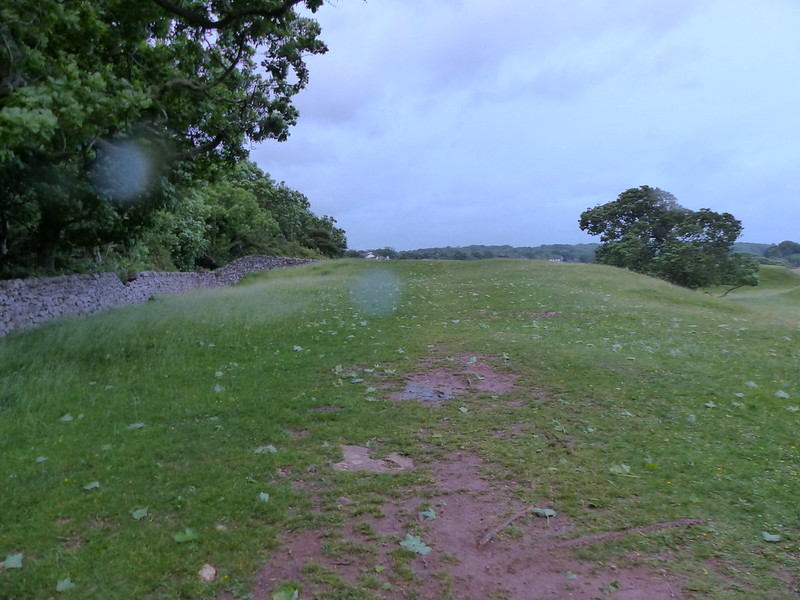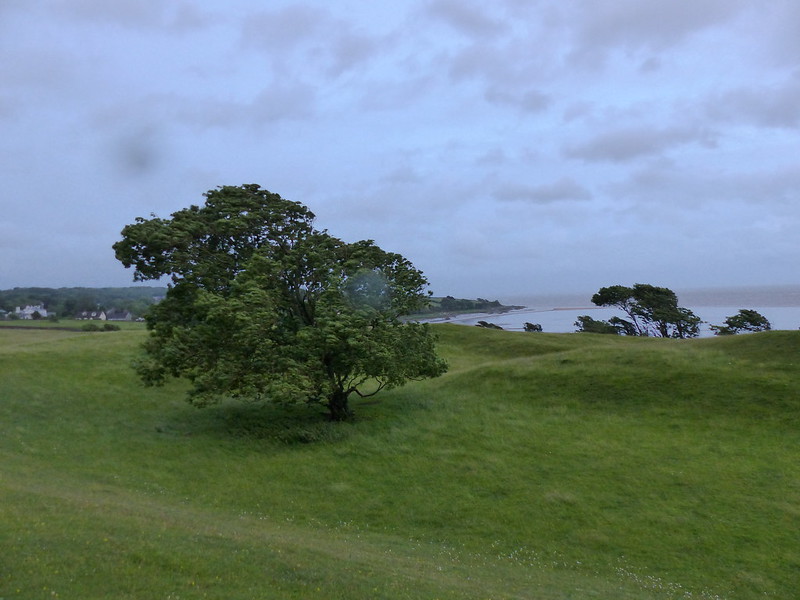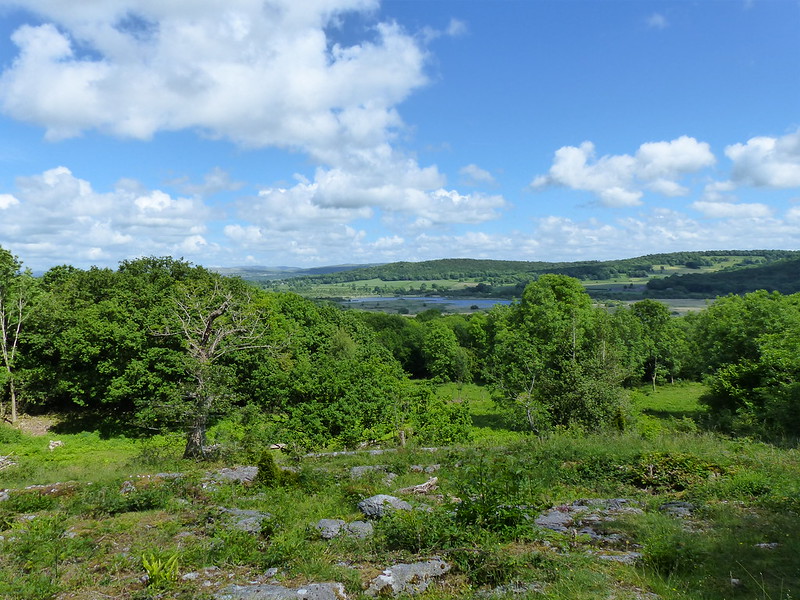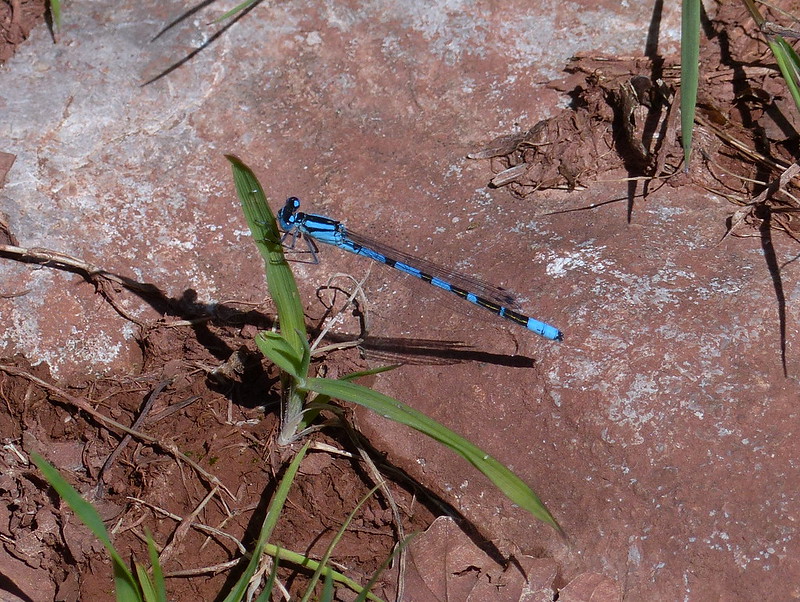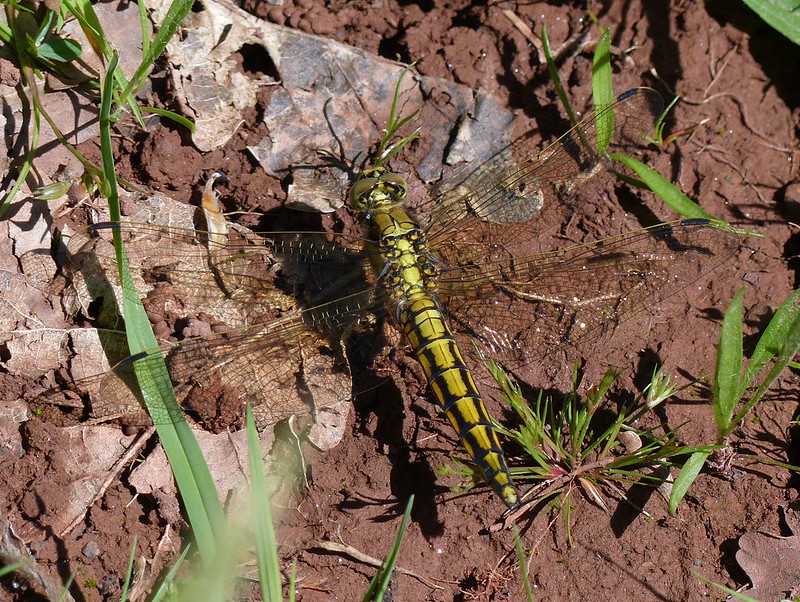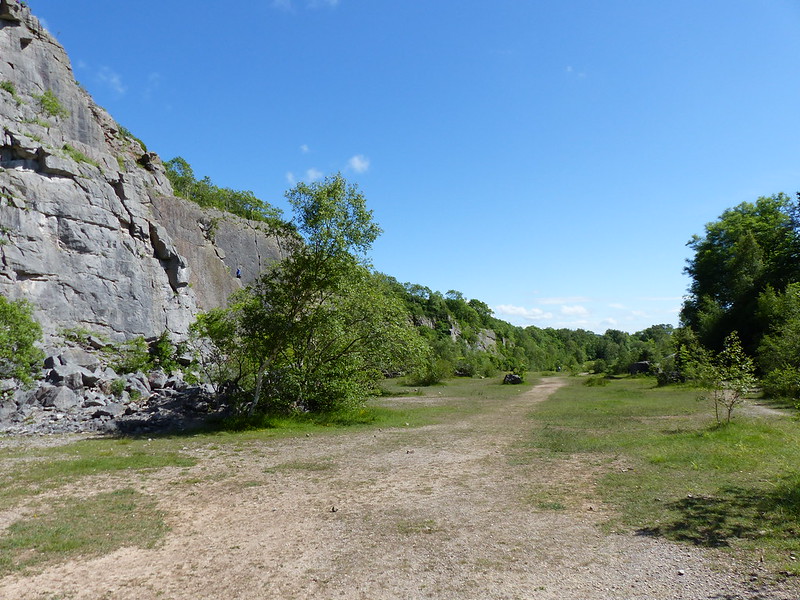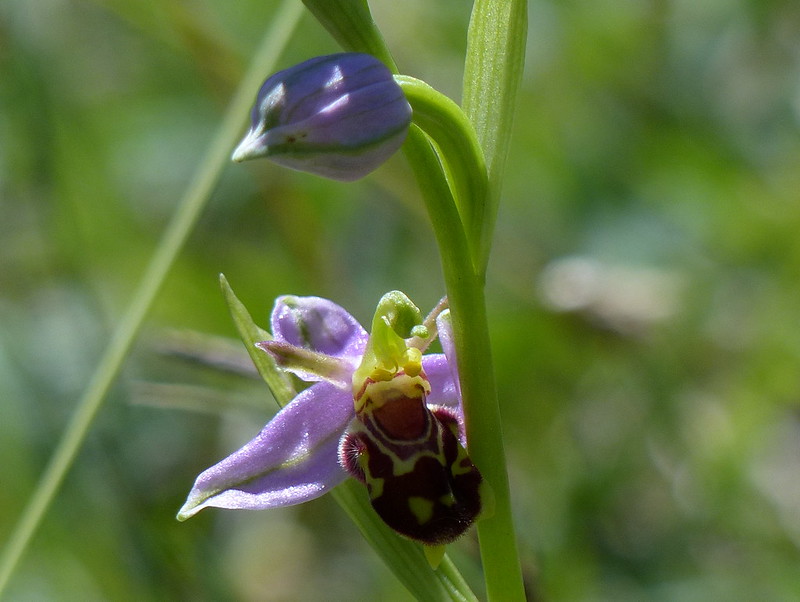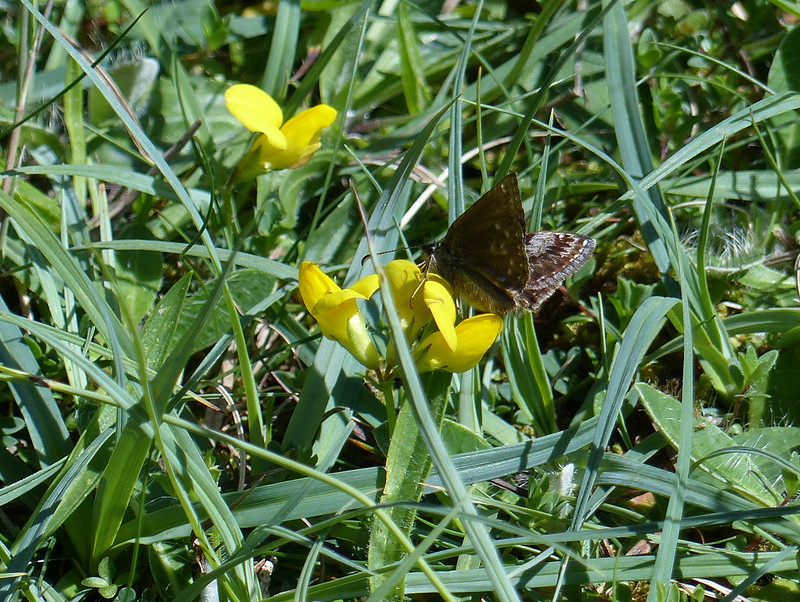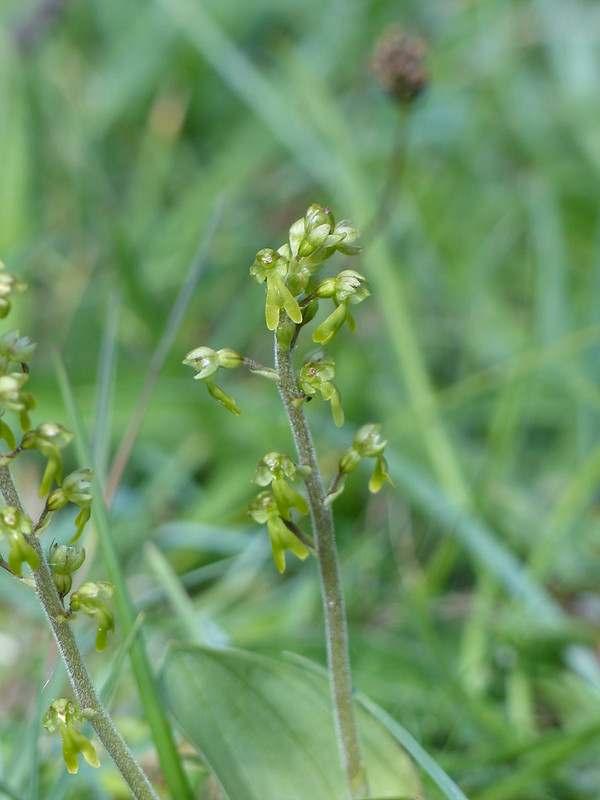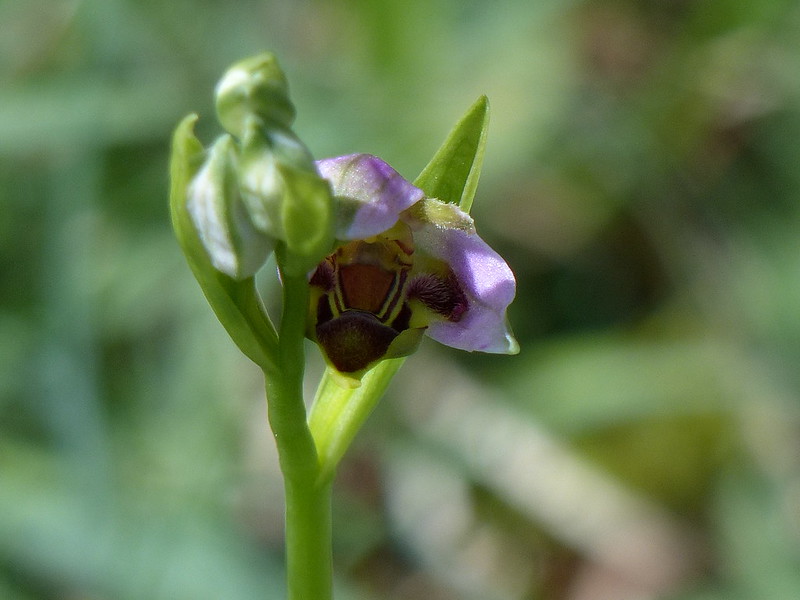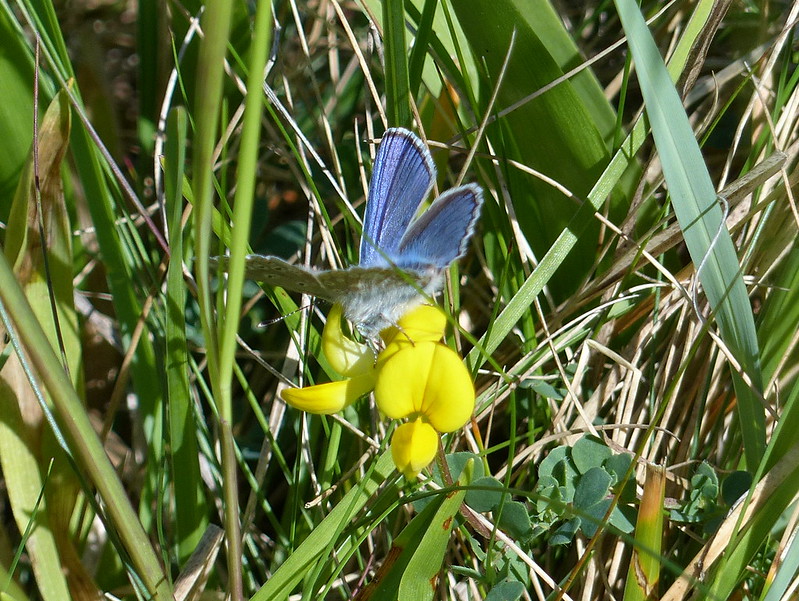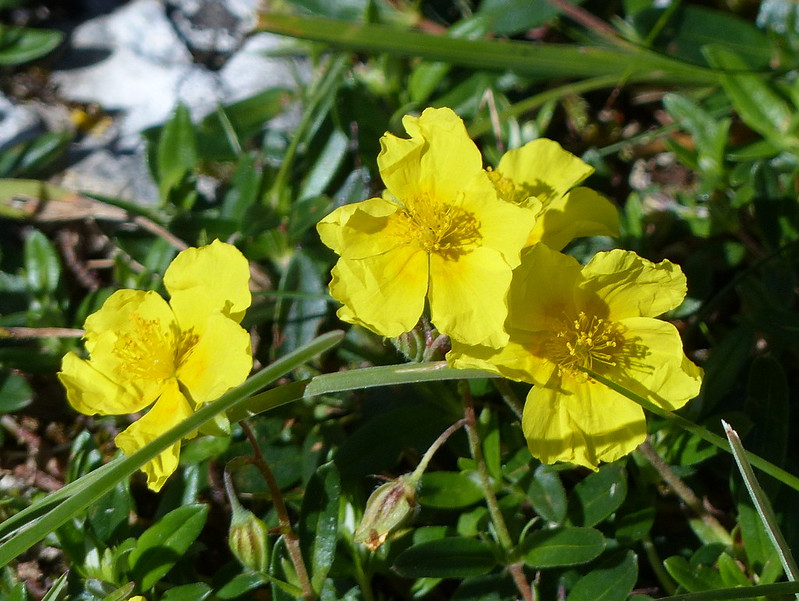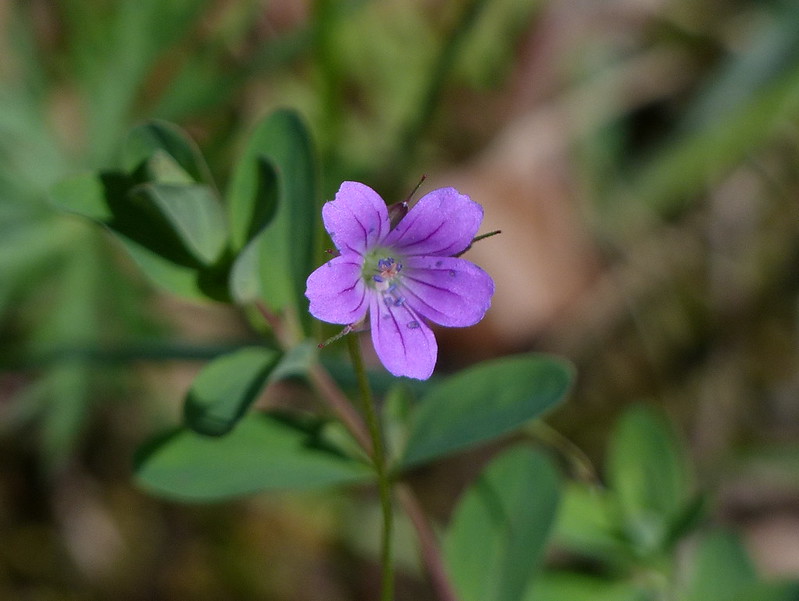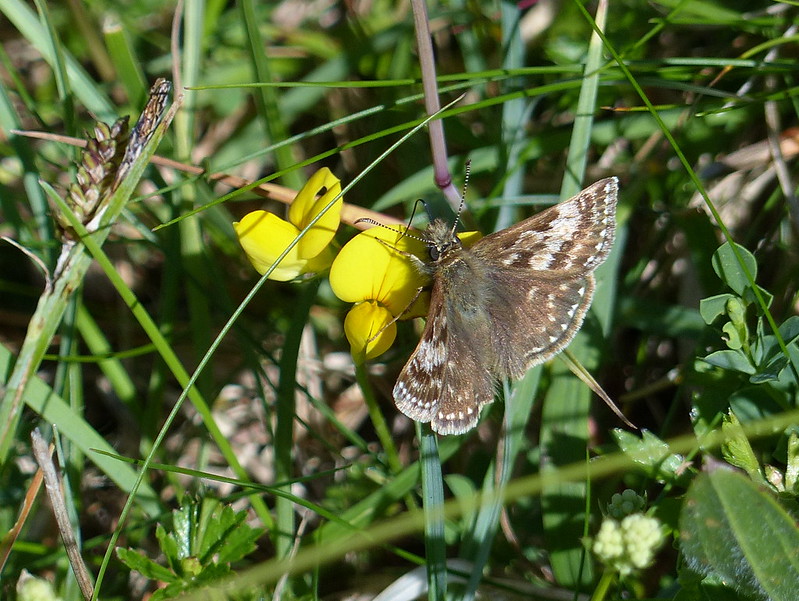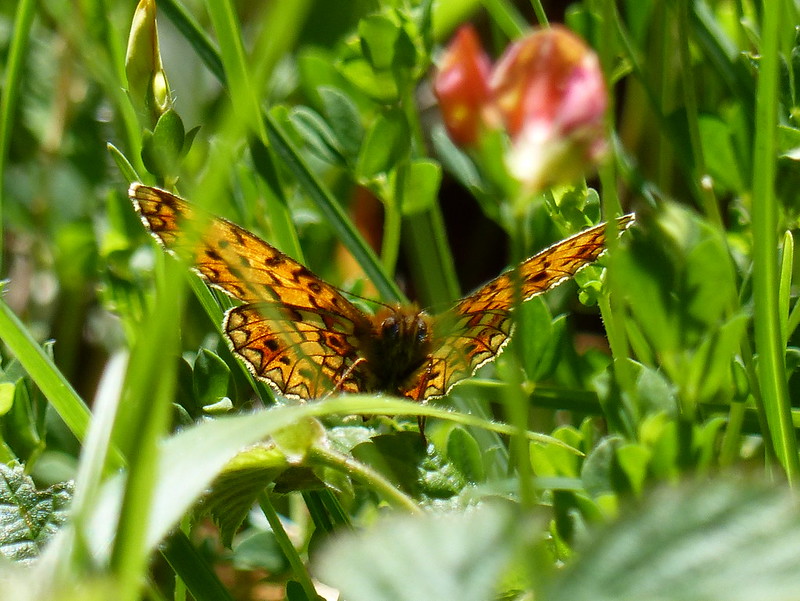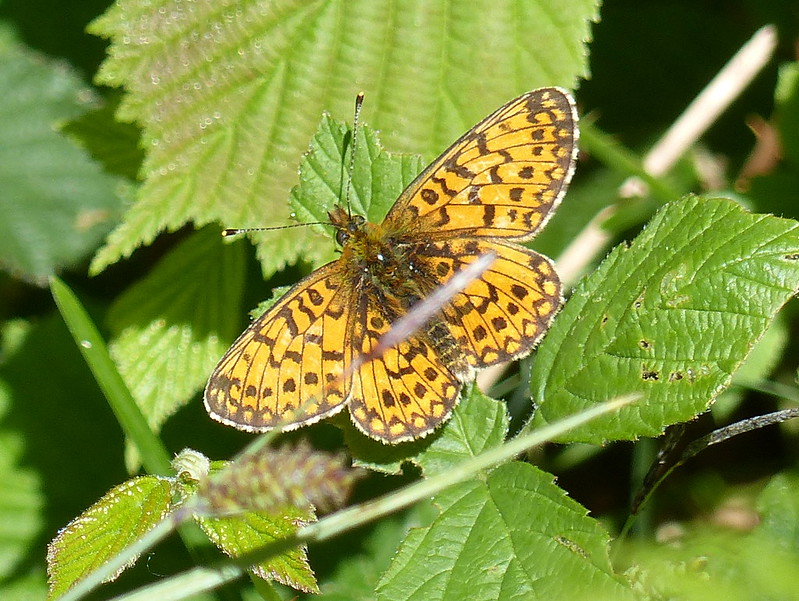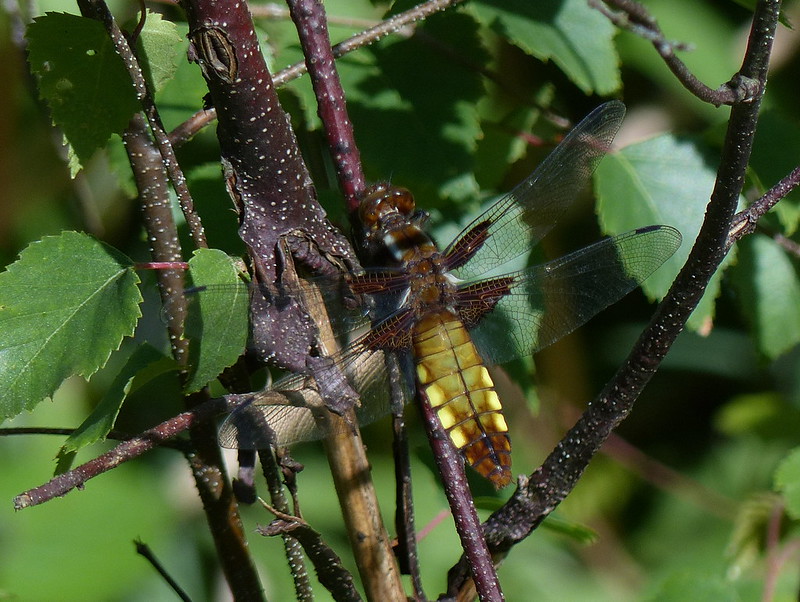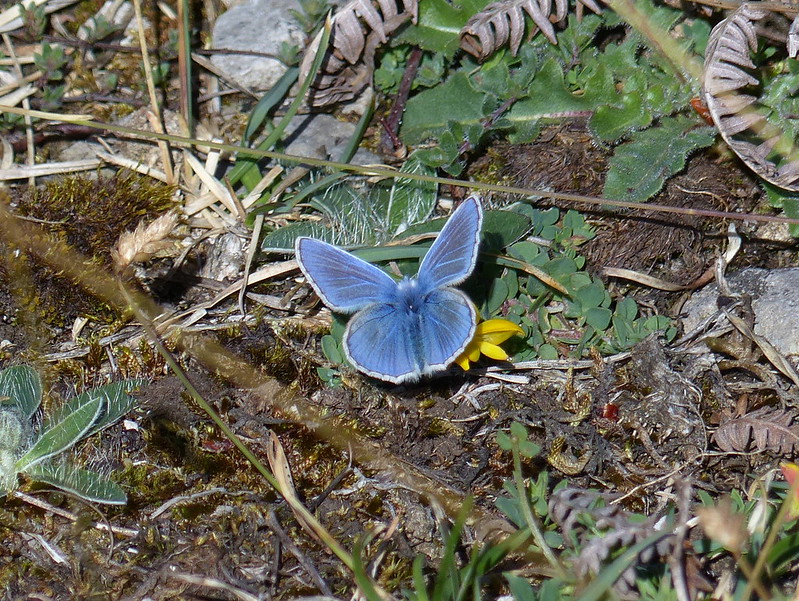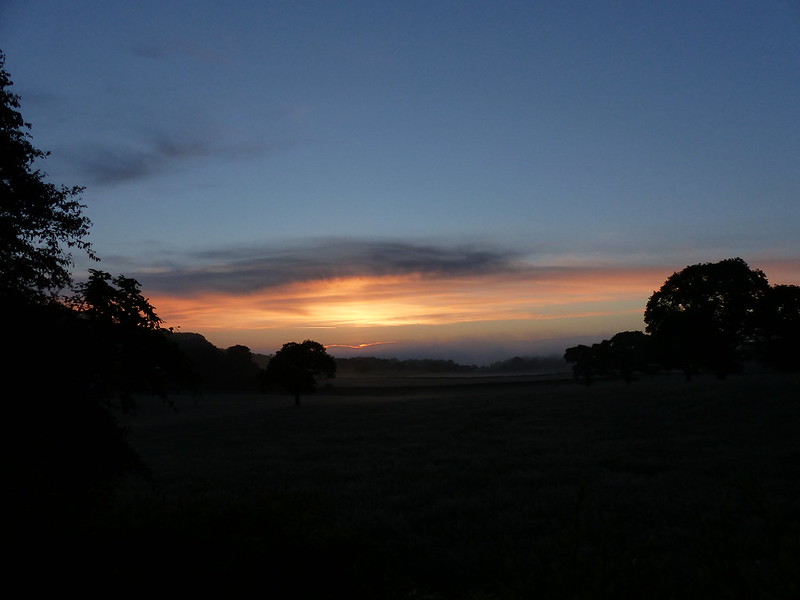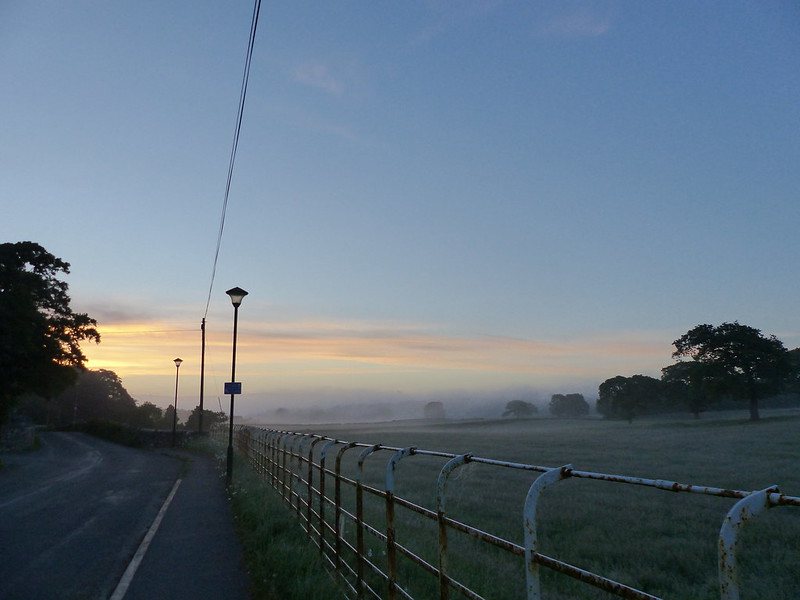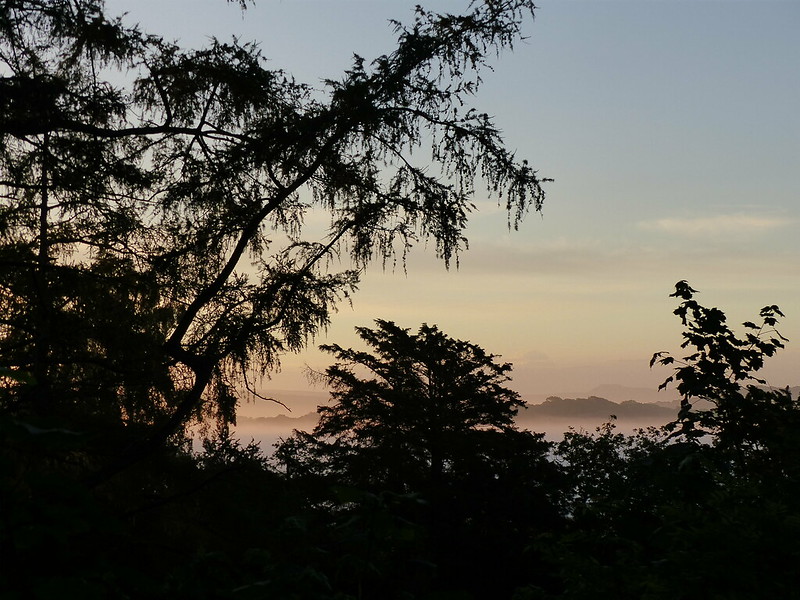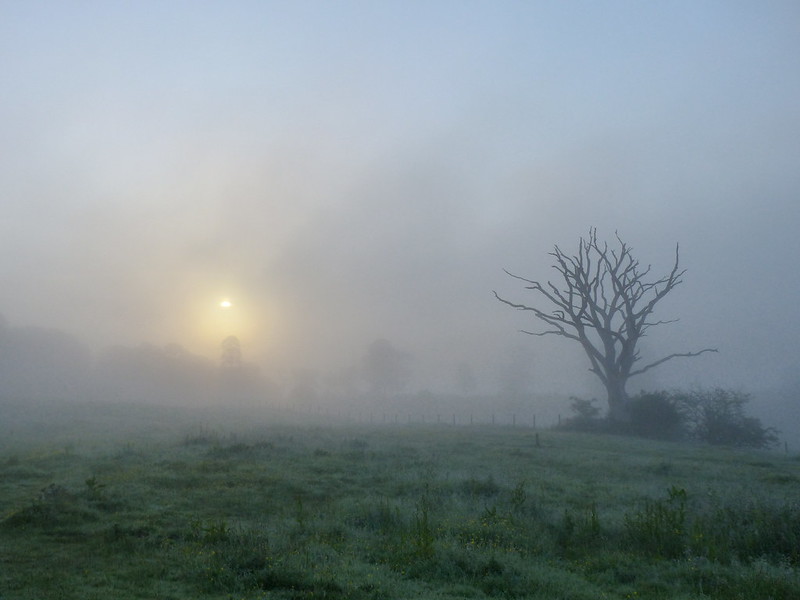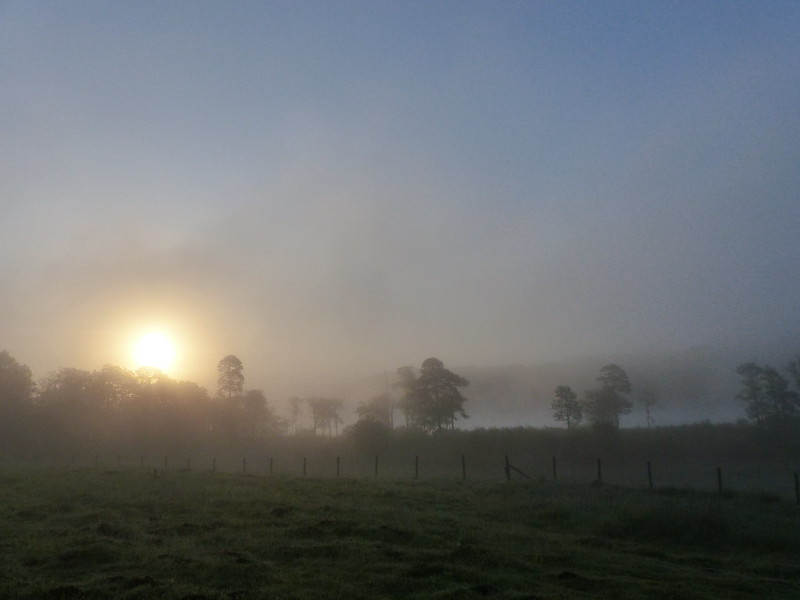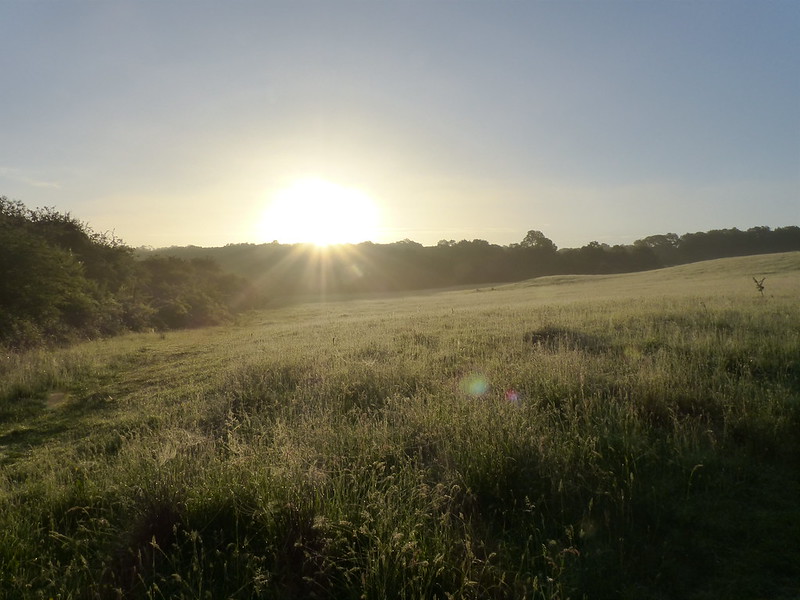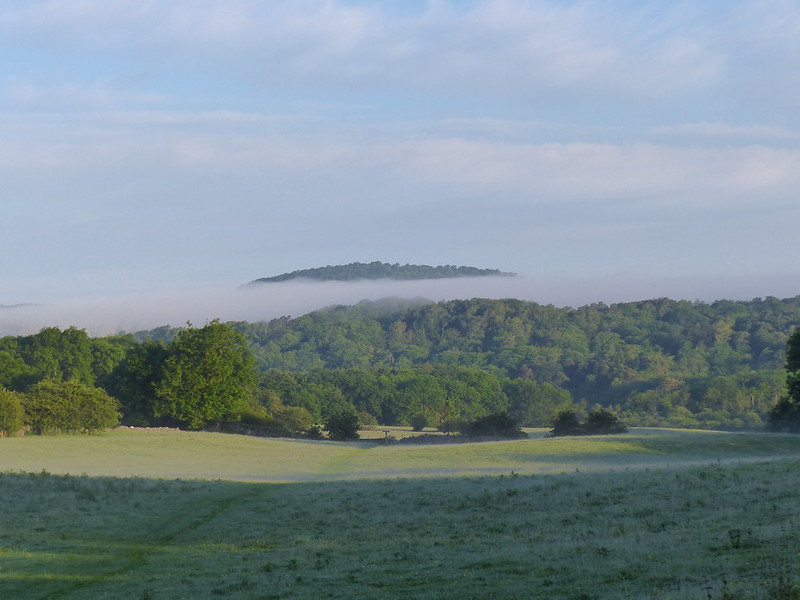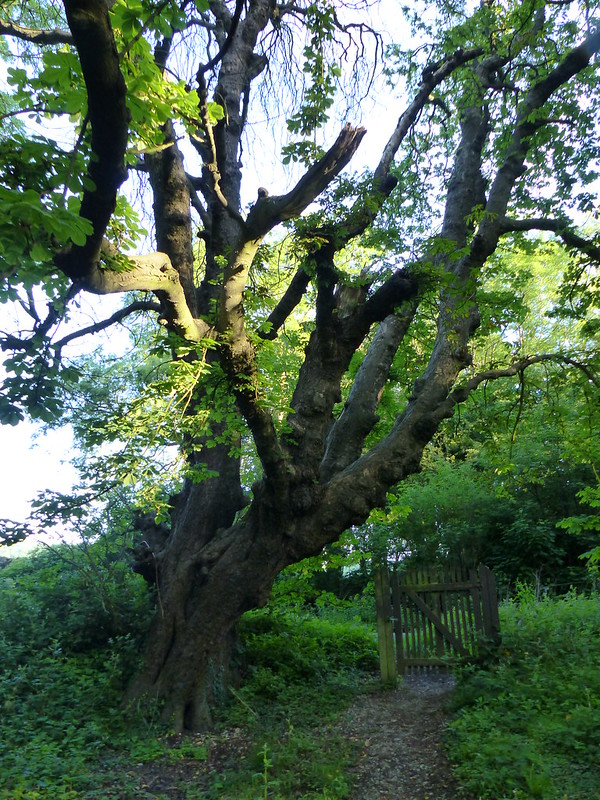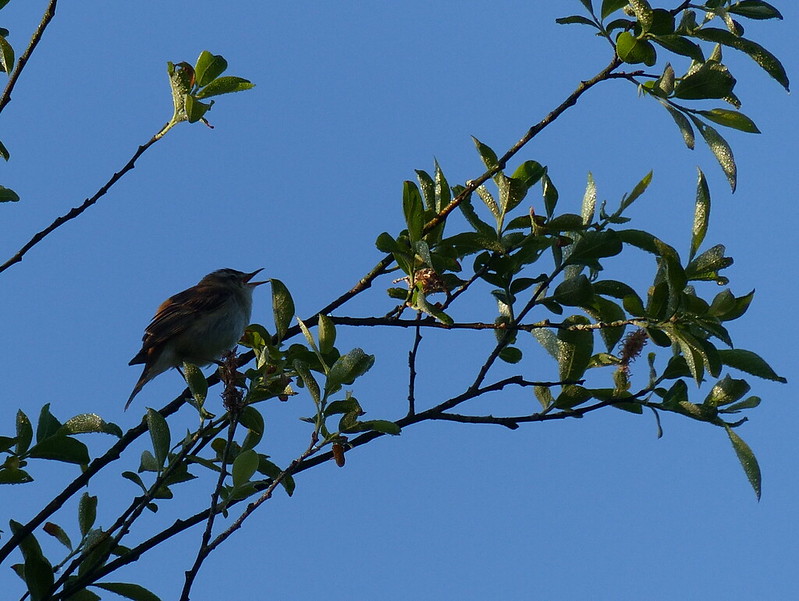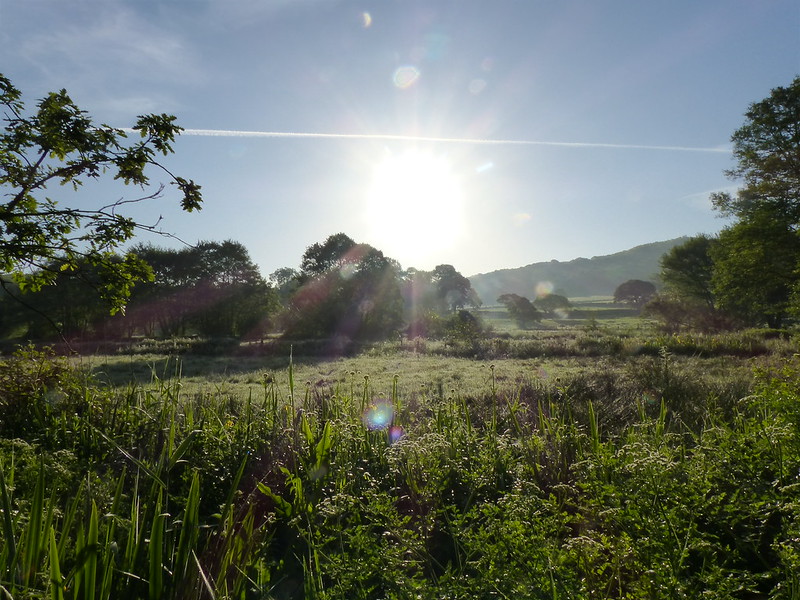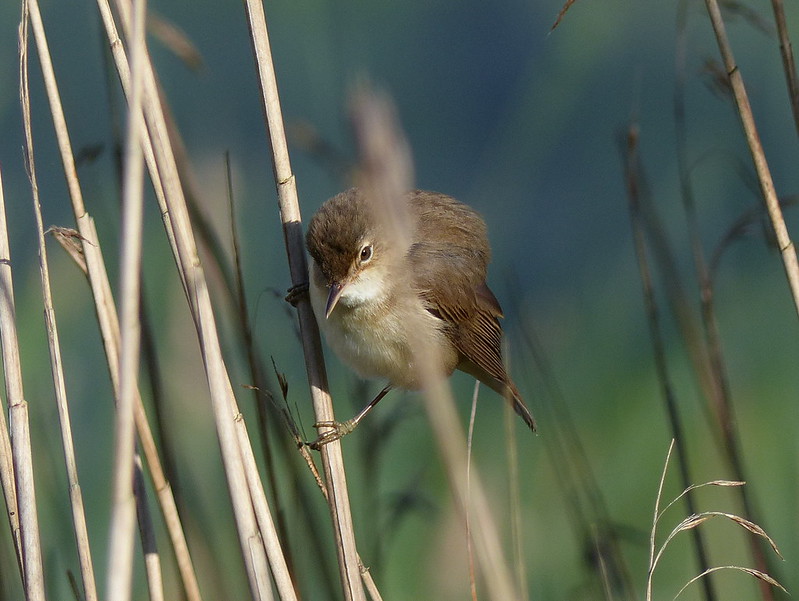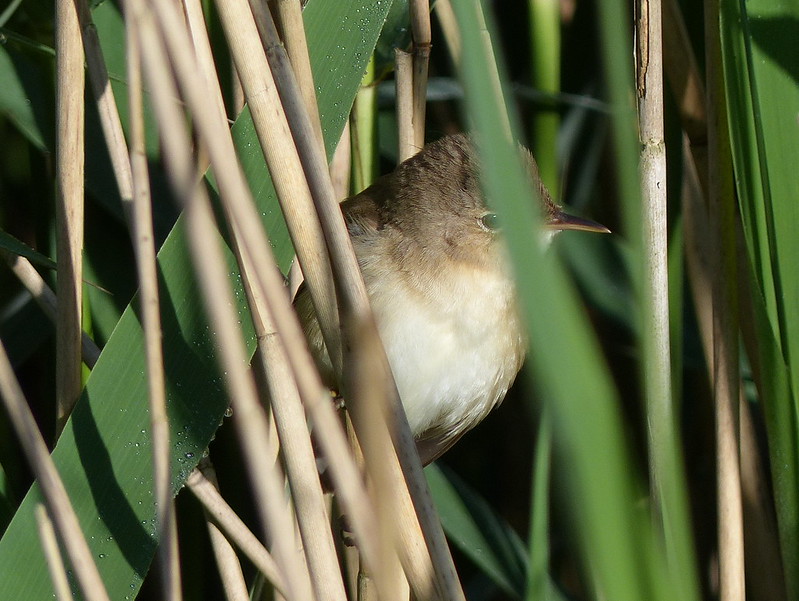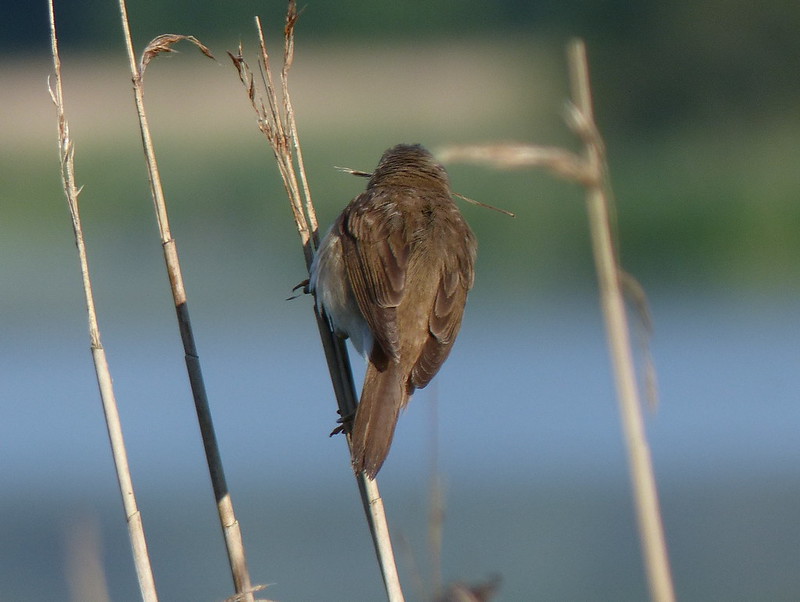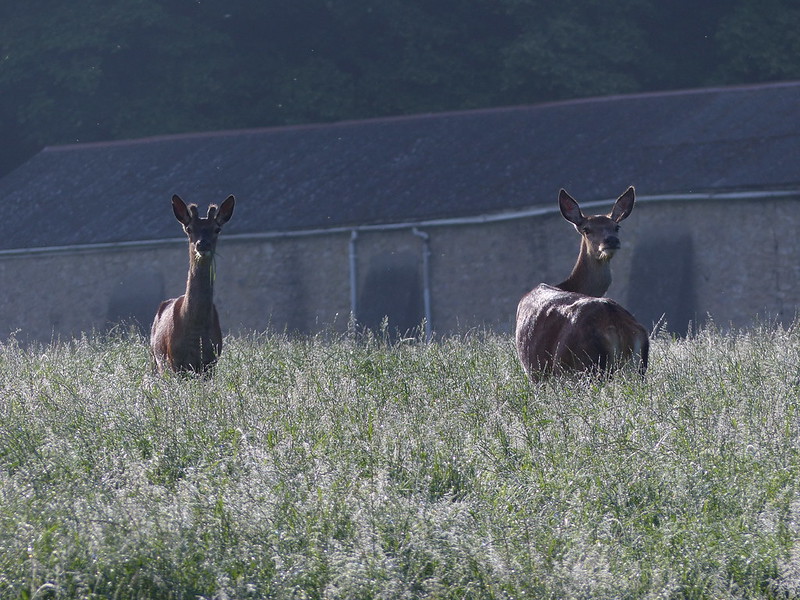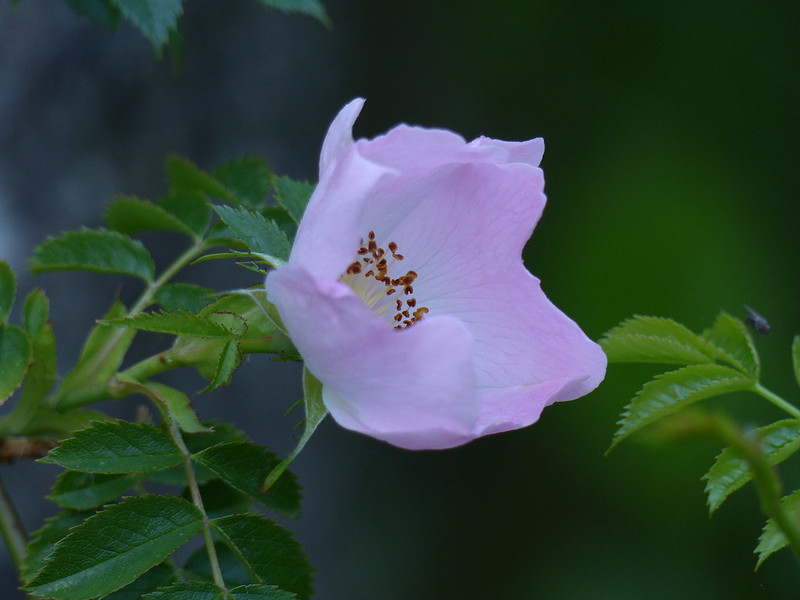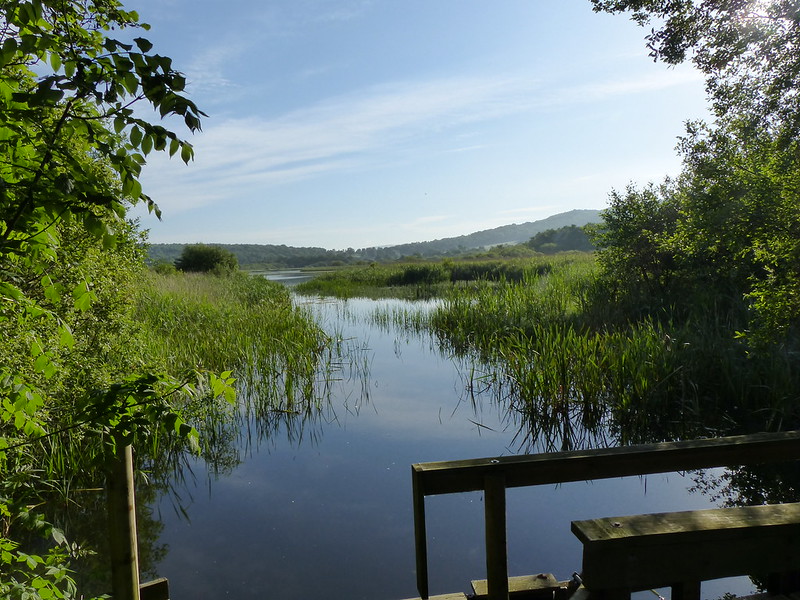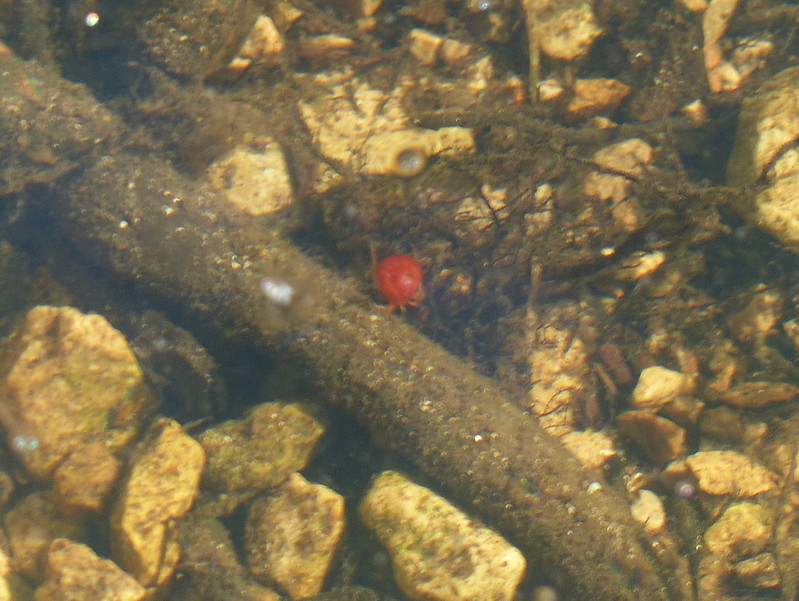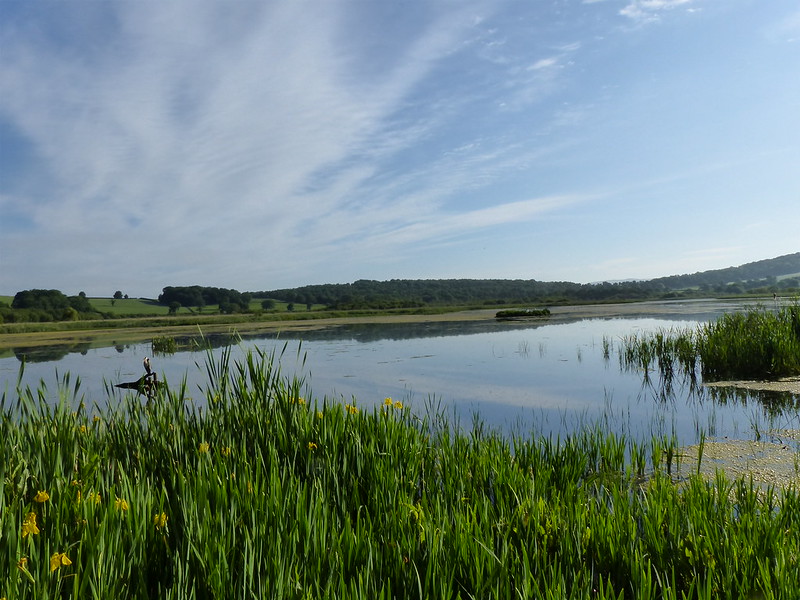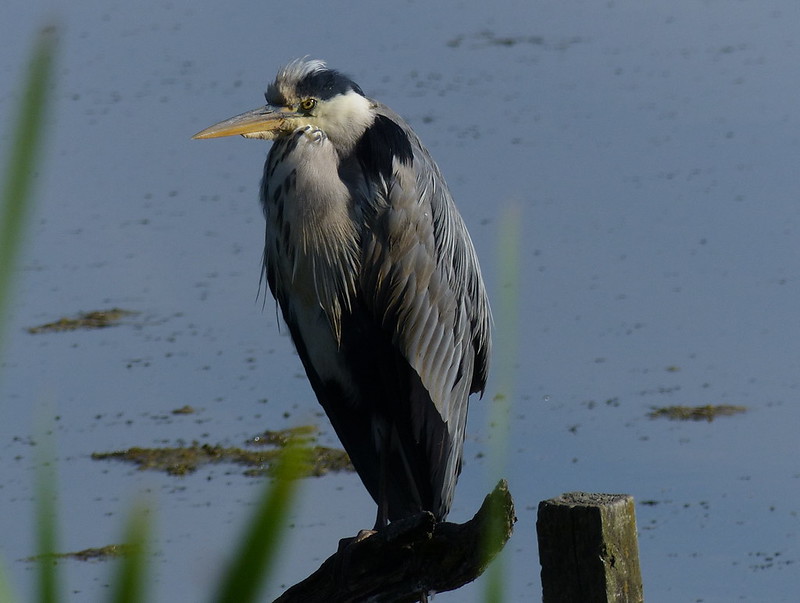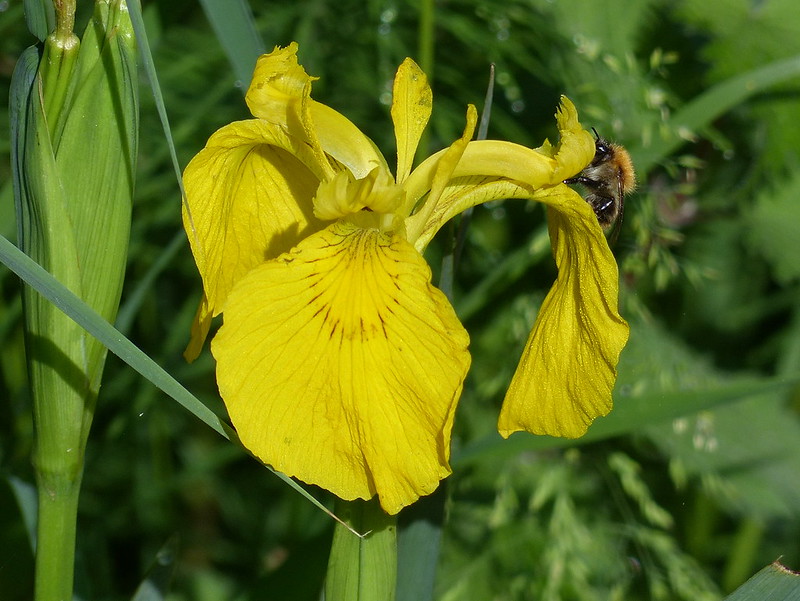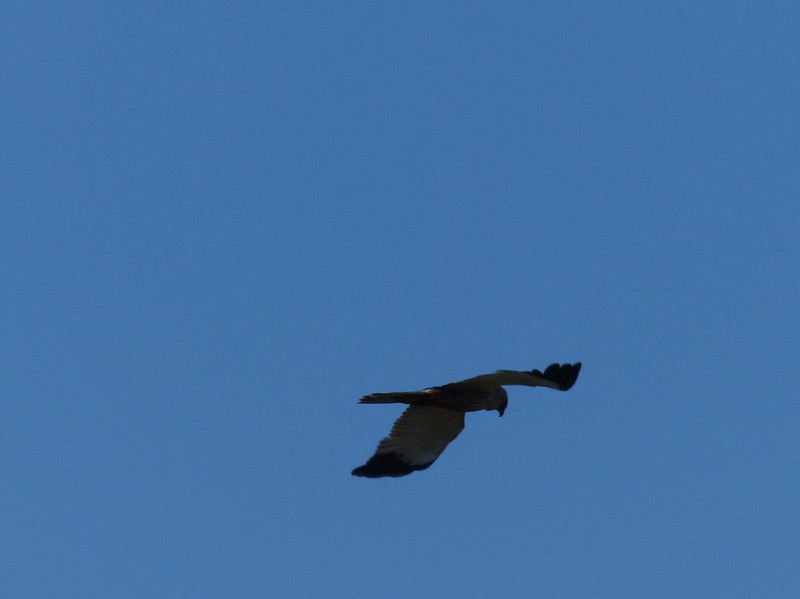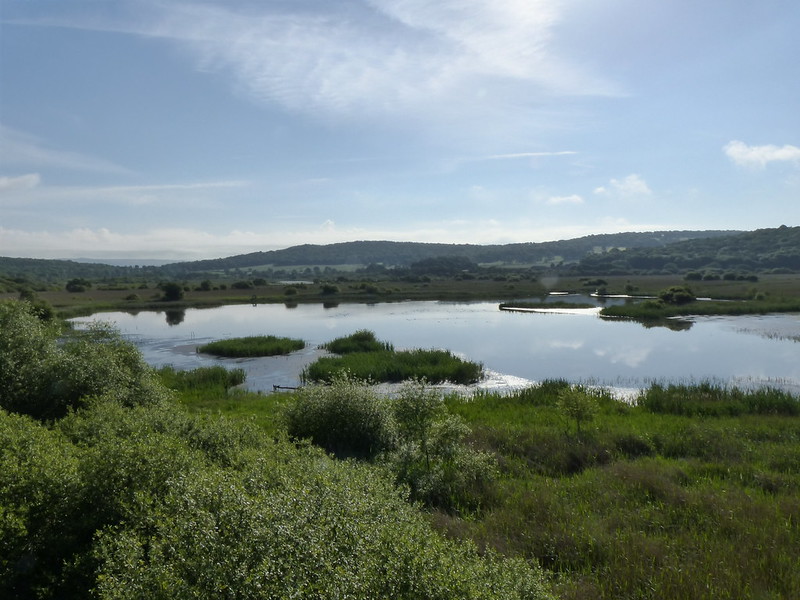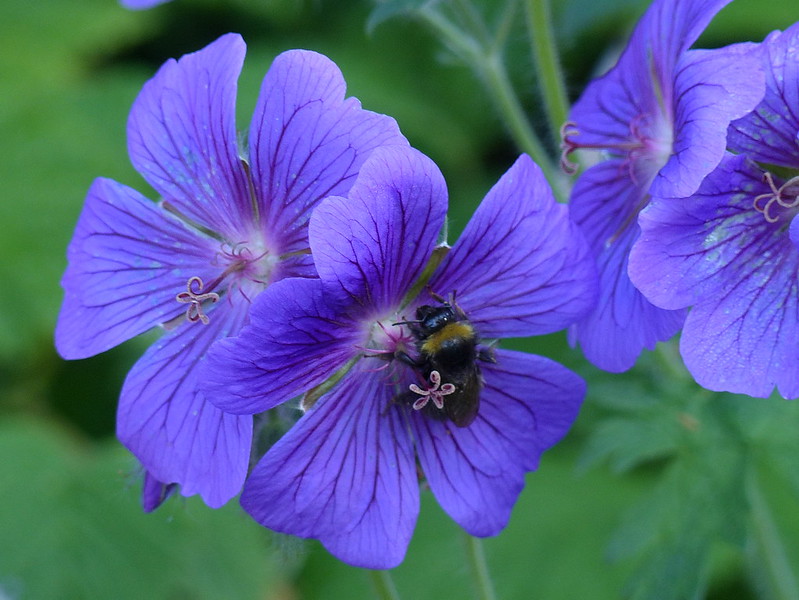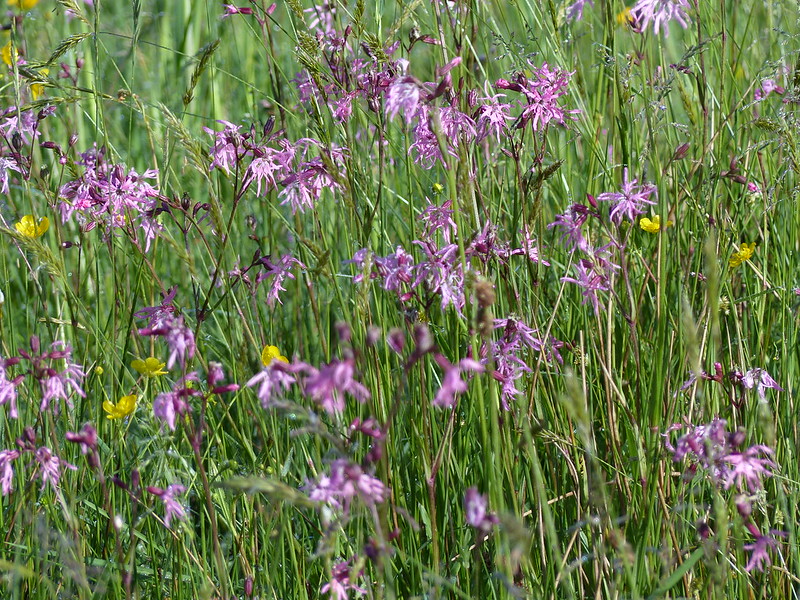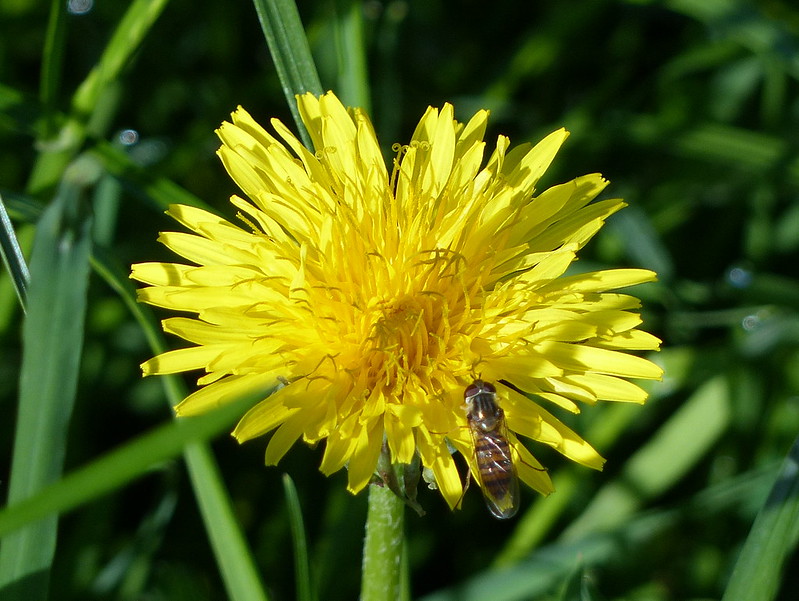Howgill Fells from Master Knott.
Small, unassuming hills often give the best views. The view across the Lune Valley to the Howgill Fells from Master Knott, a little knobble on the eastern side of Firbank Fell is a case in point.
Panorama – click on the photo (or any others) to see larger versions on Flickr.
But I’m getting ahead of myself. This was another after work outing and another chapter in my exploration of the Lune catchment area.
I’d driven up the narrow road from Black Horse on the A684. For once I’d done a bit of research in advance and had read that it was possible to park on the verge here. And it was, just about, but my car is small and I don’t think I would park here again – it was a bit tight.
One advantage of this high starting point was the view back down the road of the Lune Valley to the south.
I was here to visit Fox’s Pulpit. The map suggests that it might be a little way from the road, but in fact I could see it as soon as I pulled up. This is it…
Apparently, the meeting commemorated here, which happened in 1652, is considered by some to be the beginning of the Society of Friends, or Quakers.
This small field…
…is shown on the OS map as a graveyard, but in Fox’s time there was a Church here.
One gravestone still remains…
Fox preferred to preach outside in the open, although, it occurs to me that if there were around ‘a thousand seekers’ present then getting them all into a small hillside chapel may have been impractical anyway.
George Fox had an interesting life but the fact that will stick with me, I think, is that he was born in the village of Drayton-in-the-Clay in Leicestershire, not so far from where I grew up. It’s called Fenny Drayton now and I’m pretty sure that I’ve cycled through the village a few times, although all of them a very long time ago.
On the short walk from Fox’s Pulpit to the top of Master Knott I was entertained by this Silver Y Moth…
…which proved devilishly difficult to photograph. There was quite a breeze and each time it flew I wasn’t completely convinced that it could control the flight. After landing it would continue on foot, walking surprisingly quickly, often low down beneath the grass and other vegetation. You can just about see the Y on its wing which gives it its name.
“I try quite hard to learn the flowering plants but must confess to having long ago thrown in the towel when it comes to the pea family.”
A Natural History of the Hedgerow by John Wright
And this from someone who elsewhere in the book talks authoritatively about obscure things like Rusts and Smuts and Lichens and Liverworts. I’m going to tentatively hazard that the single flower above is Bush Vetch (but am ready to be corrected).
From Master Knott I returned to the road, taking the path to the north which heads down into the Lune Valley. It shortly brought me to the field in the foreground here, just beyond the gate, which was decidedly wet underfoot and full of interesting flora and fauna.
I wasn’t fast enough to photograph the wonderful black and red Cinnabar Moth, the Small Heath butterflies or any of the small birds, but I enjoyed seeing them. Many of the very vigorous plants looked like they had either just finished flowering or were just about to flower. Some were giving a fine display, however…
Heath Spotted-orchid.
I’m pretty confident that this really is Heath Spotted, unlike the last orchid I identified as such on the blog, which I’m even more uncertain about now – I’m more inclined to think that is was Common Spotted after all.
Ragged Robin.
Ringlet.
The next field had been recently mown, but was just as busy with butterflies and equally mobbed with dragonflies.
The trees on the right border a tributary of the Lune, unnamed on the OS map.
These…
…flew past me and then landed close enough by for me to locate them afterwards. They are Golden-ringed Dragonflies, Britain’s longest species at around 8cm.
This is the male…
…he has already transferred semen to his accessory genitalia and is grasping the back of the female’s head with his anal appendages in the hope that she will curl the tip of her abdomen forward to transfer that semen.
Red Admiral.
Meadow Brown.
When I reached a road, the path went straight across, but there was a sign warning me that the footbridge over the Lune I hoped to cross, Fisherman’s Bridge, had been damaged during flooding and was unusable. Sometimes, these signs get left in situ even after the damage has been repaired, so I decided to take a look myself.
Perhaps the completely overgrown state of the first section of the path should have acted as an additional warning. The bridge was more than just damaged, with even the substantial piers have been shorn off – the top of one was lying close by in the river still.
Back up the hill then to brave the nettles and return to the road. Actually, I contemplated following the former railway line which also runs along the valley – I chose not to in the end, but there’s a brilliant potential cycleway there waiting for development. Anyway, after consulting the map, I decided to head south along the road.
Stocks.
It’s a B-road, but wasn’t busy, and didn’t make for bad walking at all.
Another Red Admiral.
The Old School House and Firbank Church Hall – date stone shows 1860 – possibly also once part of the school?
Yet another Red Admiral.
A Carder Bee (?) on Foxgloves.
One advantage of walking on a road is the accompanying hedges – often better maintained than ‘internal’ hedges and full of a massive diversity of life. Having been reading ‘A Natural History of the Hedgerow’ I was more alert than usual to that diversity, and took great delight in noticing just how many species were present. Not that I did it properly; in 2015, I’ve learned, Dr Rob Wolton published an article about a two year study he had carried out of a 90m length of hedge near his home in Devon. He had discovered a staggering 2070 different species in the hedge, and that was with some species still to be identified and having ignored rusts and mildews. Apparently he thinks the actual total might be closer to 3000.
I didn’t spot quite that many on this walk!
The hedges here were full of webs or nests…I’m not sure what to call them. Some were large blanket webs like others I’ve seen this year, but in other cases smaller webs seemed to have been used to knit leaves together to make some sort of home…
In many of the webs, I could see clumps of pale shapes which I took to be pupae…
Another advantage of walking on the road was that it brought me to…
Naturally, I felt compelled to take a peek inside…
This church, built in 1841, replaced the chapel on the hill, which was destroyed in a storm a few years before. There is no stained glass, but the view from this window more than compensates, although I don’t think my photo quite captures it…
Stepping outside I found, in an unmown area close to the entrance to the grounds, this…
…which I believe is a Butterfly Orchid, a first for me. I’m not sure however, whether it’s a Lesser Butterfly Orchid or a Greater Butterfly Orchid. Sadly, it was in deep shade, which is presumably why the photo hasn’t come out too well.
This very large bumble bee was behaving rather oddly, for a bee, sedately exploring this leaf in the hedge.
The size, and the behaviour, made me wonder whether this could be a queen, but looking at the photo again, I now think that this is a worker, a Buff-tailed Bumblebee. The tail looks white, but there is a subtle line of buff at the edge of that white which suggests that identification.
Lune Viaduct.
I left the road here, taking a path through more newly mown fields which bordered the Lune. A screen of trees prevented any more than glimpses of the river, but in the unmown fringes of the field there was the compensation of a number of Common Knapweed flowers…
They seemed to flourish here in this part of the Lune Valley and I would see many more during the remainder of the walk. The bees liked them too. This might be a Garden Bumblebee. Might.
But this is a Tree Bumblebee, which, I’ve realised this year, are ubiquitous.
If I hadn’t paused to admire the Knapweed and its attendant bees, I would never have noticed…
…this shield bug. It took me a while to track down the exact species, so that I was tempted to just call it ‘bronze’ because of its colour. And that’s exactly what it is, a Bronze Shieldbug, widespread but not particularly common apparently. Quite similar to the Forest Bug, which I photographed on Hutton Roof some years ago.
The track transferred to the riverbank side of the trees, which meant that I could see these…
…Monkeyflowers.
Lincoln’s Inn Bridge.
I joined the Dales Way here briefly, between Lincoln’s Inn Bridge and Luneside Farm.
Luneside.
Garden Bumblebee on Common Knapweed (I think).
I detoured a little here, an out-and-back past Prospect House (where the dogs in the garden watched me with suspicion) to…
St. Gregory’s or the Vale of Lune Chapel. The third steeplehouse on our walk, steeplehouse being George Fox’s preferred term for a church – although none of these have had steeples. Actually, only the Firbank Church is still in use; the first obviously was ruined, although the local Quaker Meeting House at Briggflats still commemorates Fox’s sermon with a June outdoor meeting; and this last, although still consecrated is in the care of The Churches Conservation Trust.
“This chapel was built in the early 1860s by the Upton family, when the London and North Western Railway was building its Ingleton branch and sent a Scripture Reader to the navvies. Attached to a cottage, it is a plain building perhaps designed by a railway engineer; but inside a delightful and colourful series of stained glass windows by Frederick George Smith depict river scenes, trees and plants, as well as birds and animals found locally. These were installed in about 1900 when the church was refurnished.” Source
The Upton family owned Ingmire Hall which is very close by.
The furniture in the church was apparently by Waring and Gillow of Lancaster. (The Gillow family owned Leighton Hall which is close to home).
Unusual roof-lights.
One of the windows designed by Frederick George Smith. I took photos of them all, and can’t decide whether or not to make a fuller post with more pictures of St. Gregory’s; I rather liked it.
In edition to the windows mentioned above, there are also windows featuring personifications of Peace…
…Justice and Fortitude which one source says are of William Morris design.
It doesn’t take long to look around St. Gregory’s, but it’s well worth a visit. I sat in the porch for a moment or two, to have a drink and decide which way to go next.
Back to Luneside, I decided, where the sheep dogs, all, fortunately, caged securely, went berserk again, although, judging by the wagging tails, they may have been enthusiastic rather than angry.
In the fields south of Luneside I heard a commotion from a Hawthorn. It wasn’t the familiar yaffle, but sounded none-the-less like a Green Woodpecker. Then came an answering call from the hedge ahead of me. As I approached the hedge, a bird within the hedge, tried to fly out, away from me, but flew straight into the wire net fence beside the hedge. It was a juvenile Green Woodpecker…
After a moment of contemplation it decided to climb the fencepost, somehow jamming itself between the wire and the post so that I couldn’t really see it.
Those claws are well-adapted for climbing!
The adult meanwhile was even more strident now…
As I walked away from the hedge, the adult flew ahead of me…
…before looping back to the youngster in the hedge.
Beside the Lune here, there’s a odd little Nature Reserve, a thin little strip along the riverbank.
Leading to Killington New Bridge.
From here I took the lazy decision to follow the road in the most direct route back to the car. It was getting late and the weather had deteriorated, with a layer of cloud spreading in from the west and a few spots of rain in the air
The hedgerows were once again festooned with webs…
…containing hanging white cylinders…
But now, perhaps because it was quite late and a bit gloomy, there were moths evident too…
I think that this is an ermel moth, specifically Yponomeuta Cagnagella. Apparently, the ‘gregarious larvae clothe with extensive silken tents’ the Spindle shrubs on which they live. And looking at the photos, these leaves could well be Spindle.
Former Country Pub the Black Horse after which the road junction is named.
A stream, another tributary of the Lune, runs beside the A road here.
At New Field farm everyone was busy, trying to get the silage in before the forecast rain arrived…
Juvenile Wheatear, I think.




